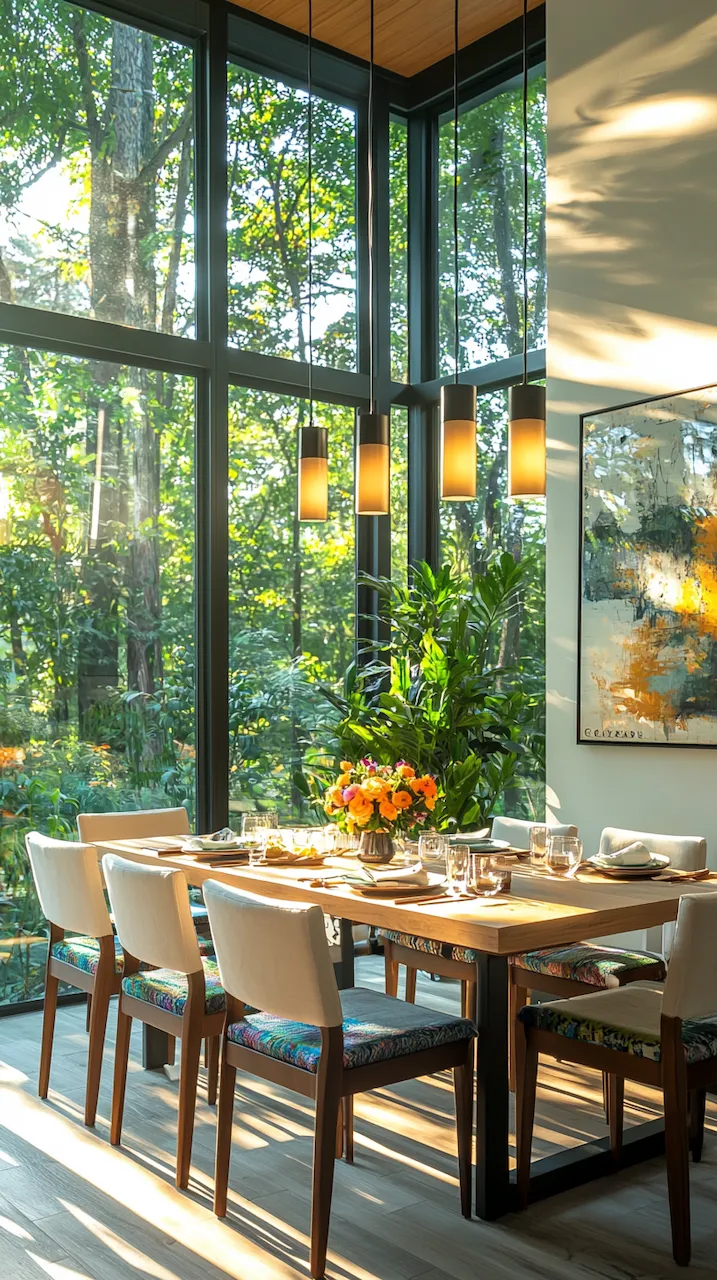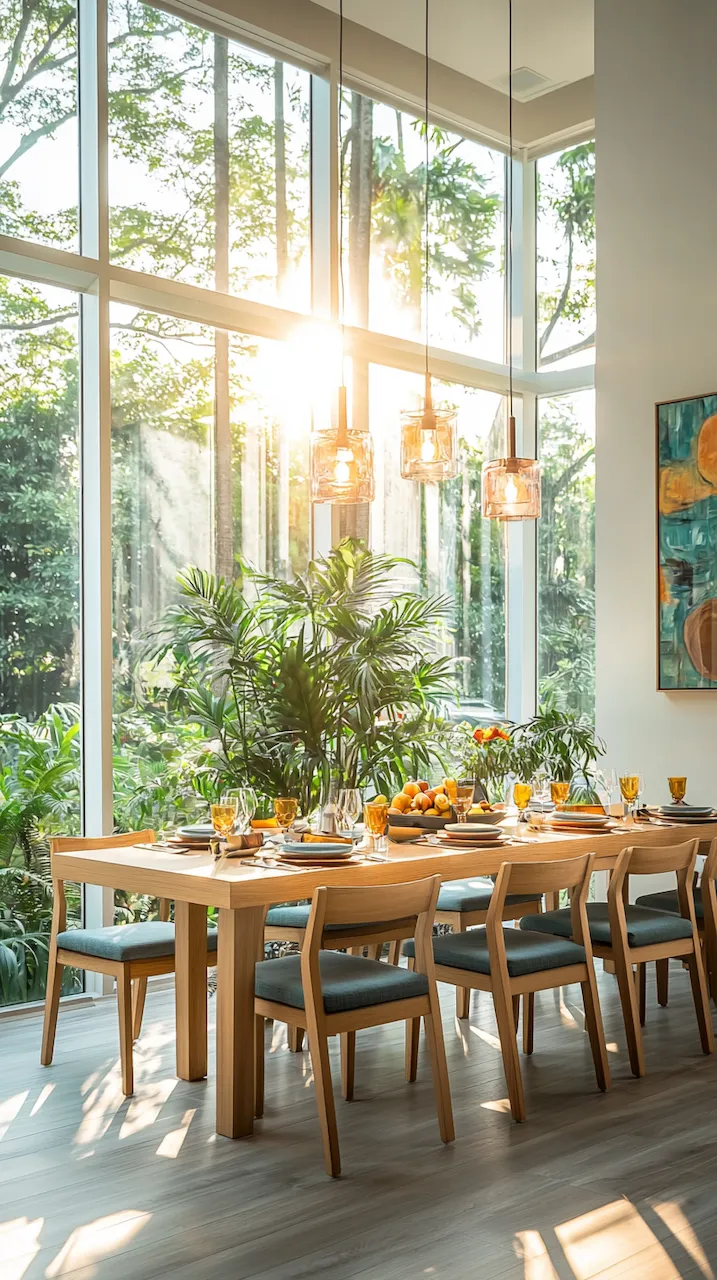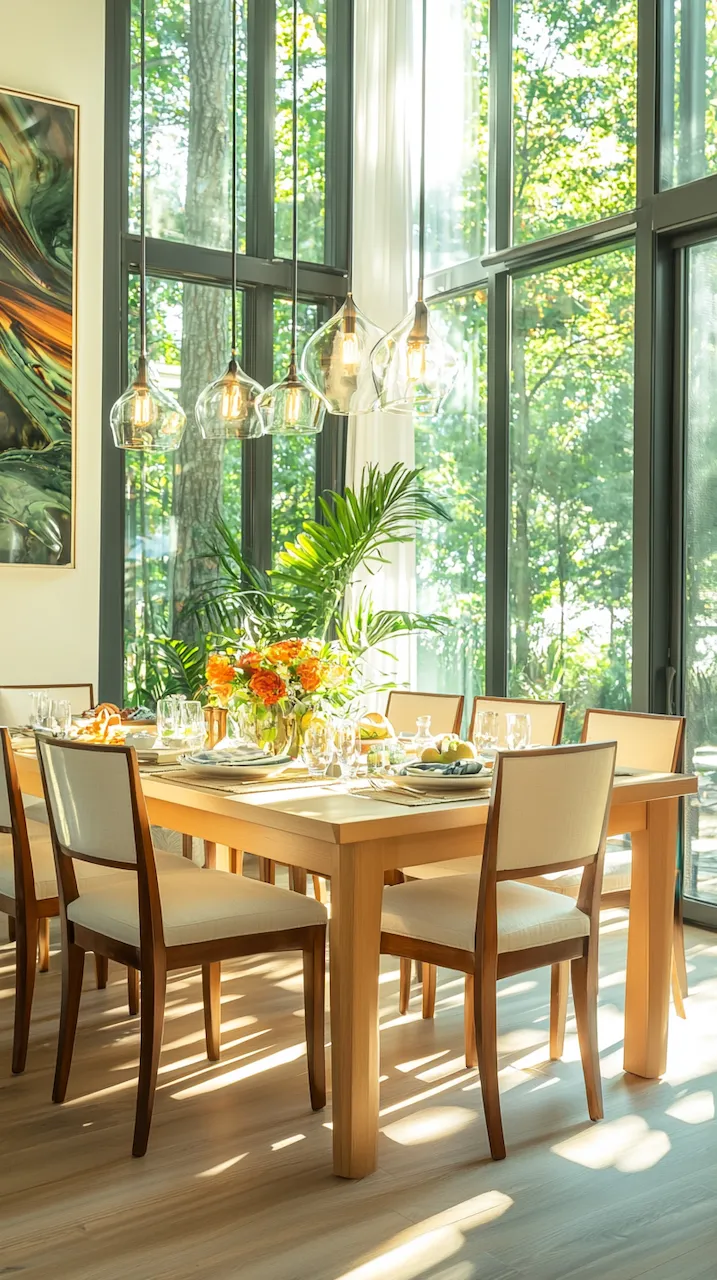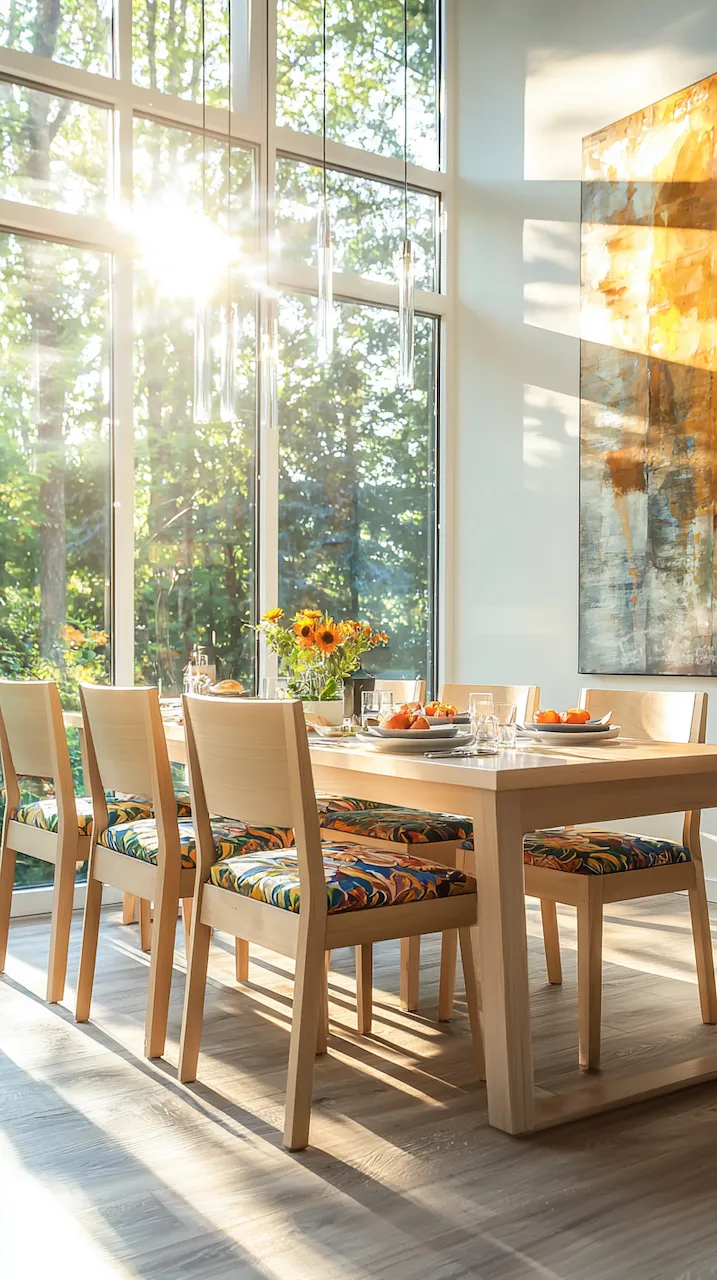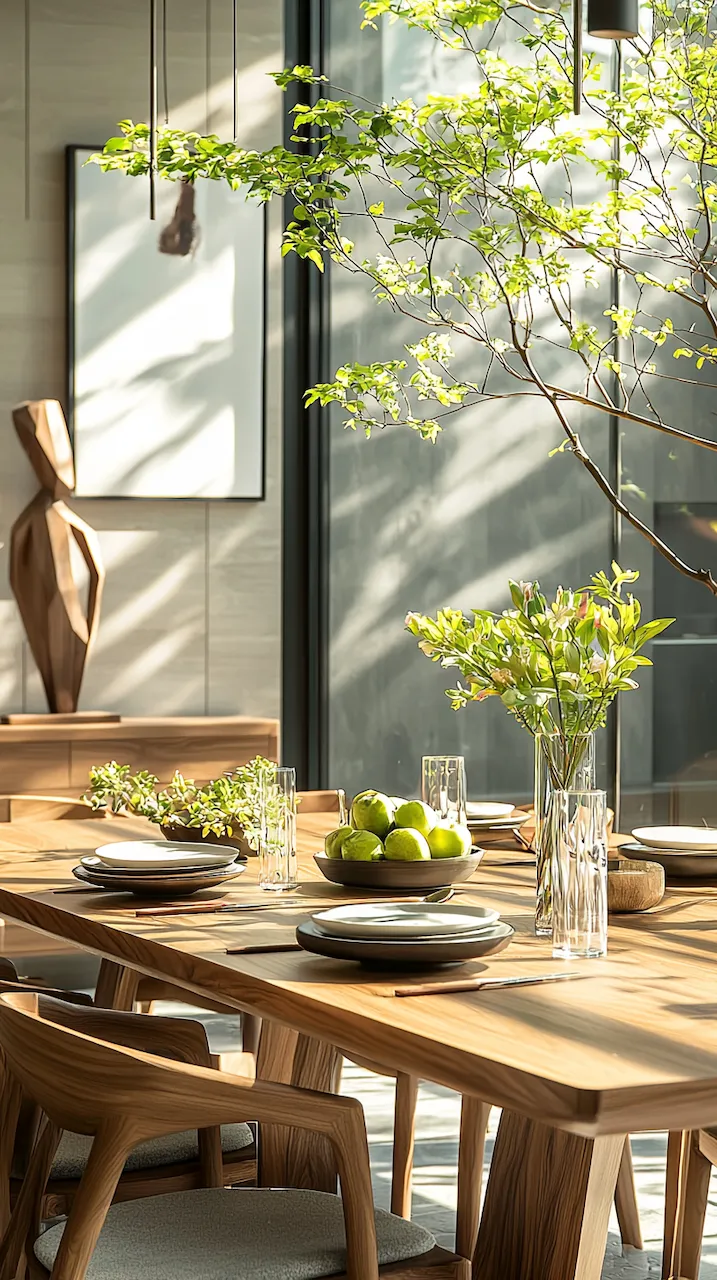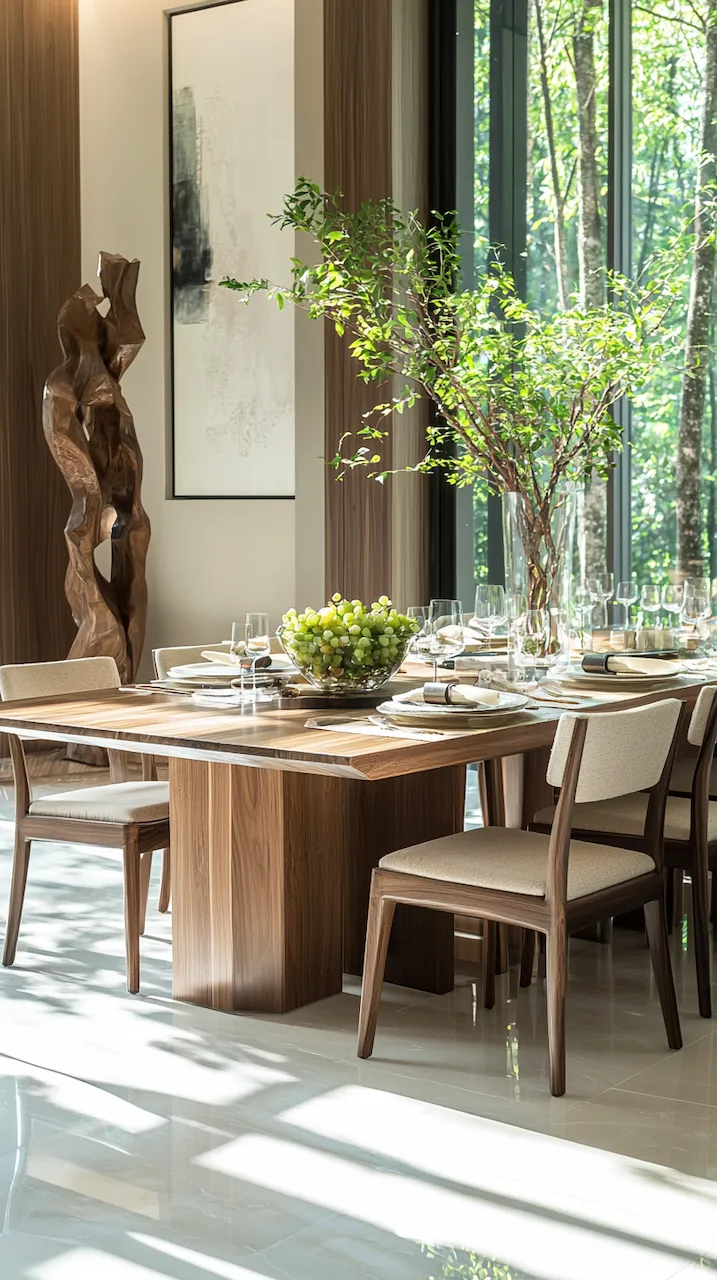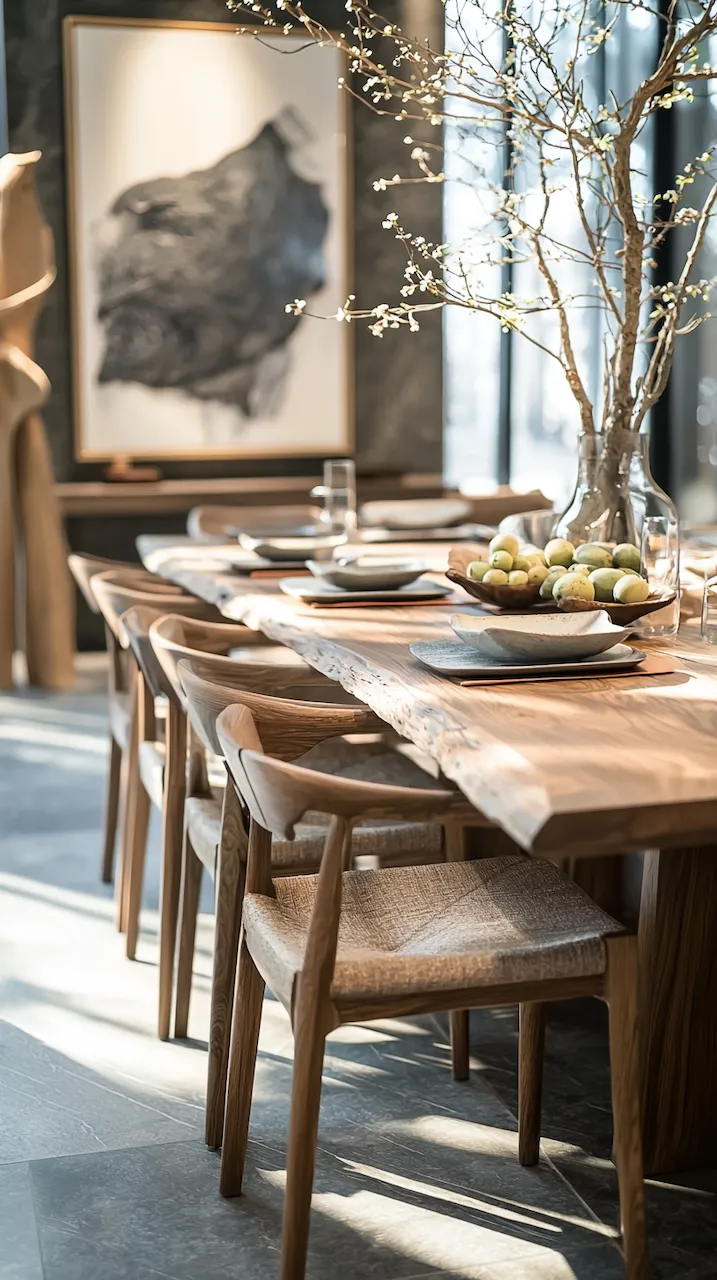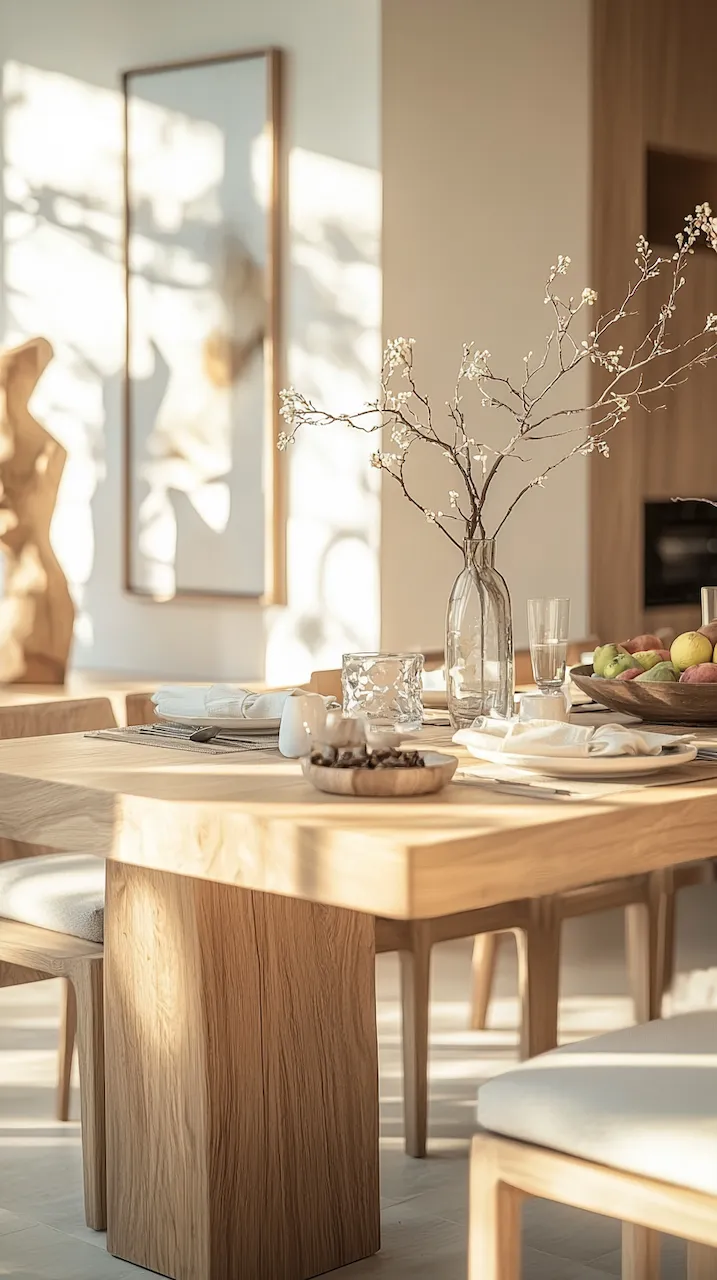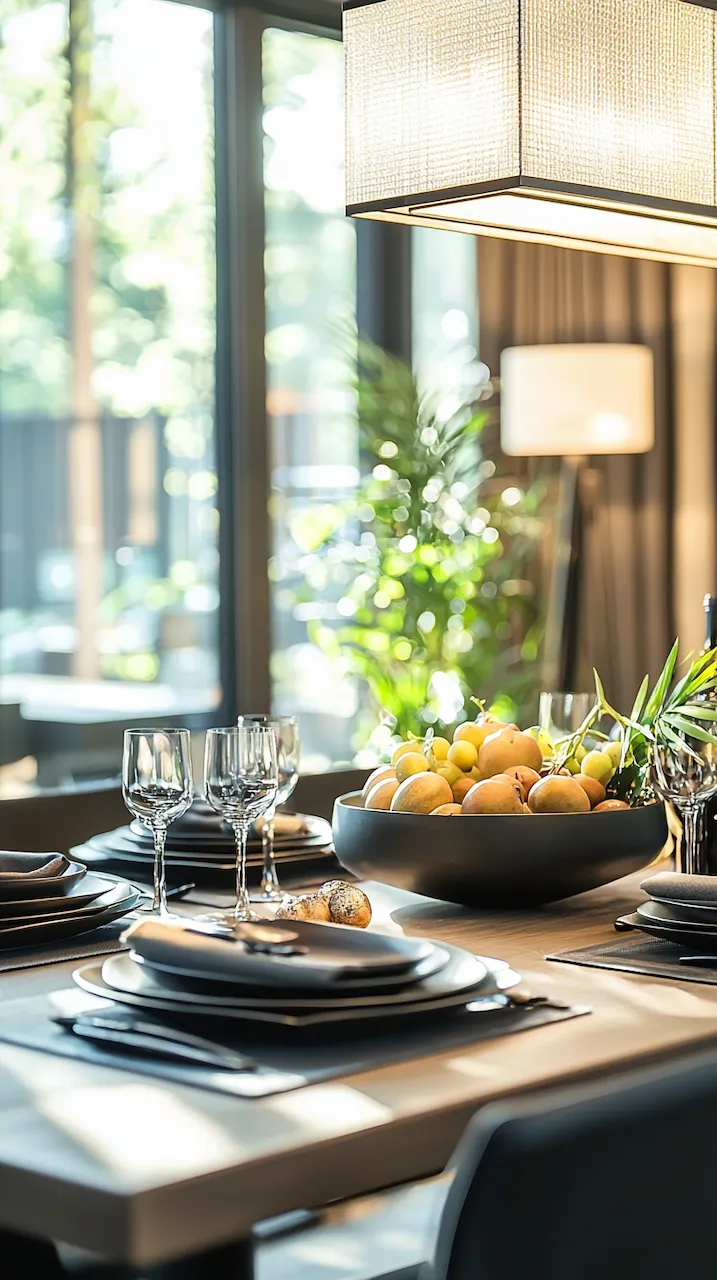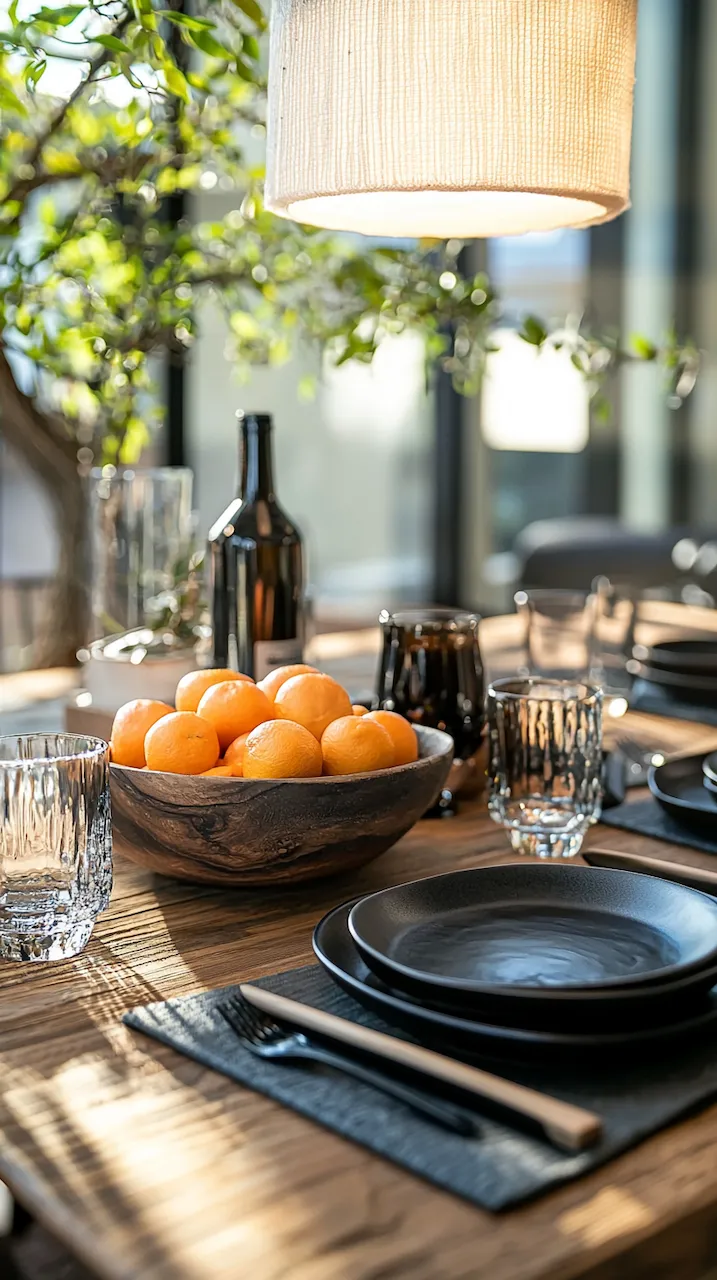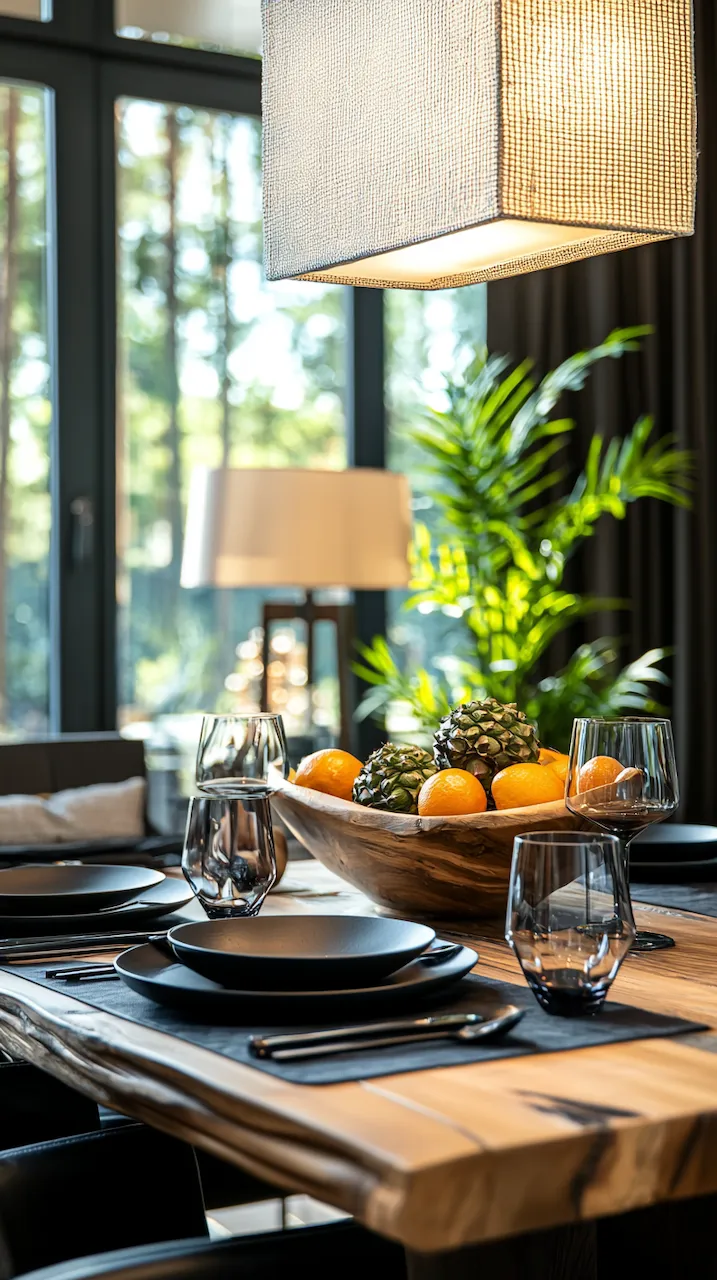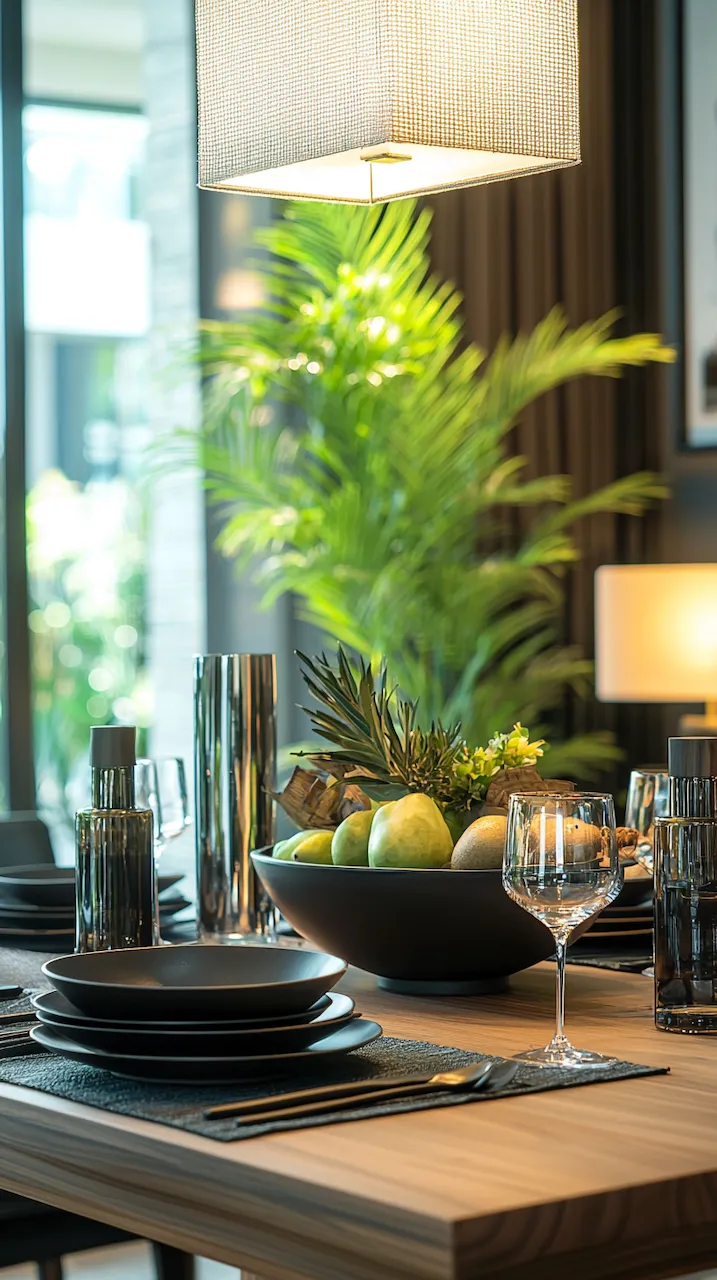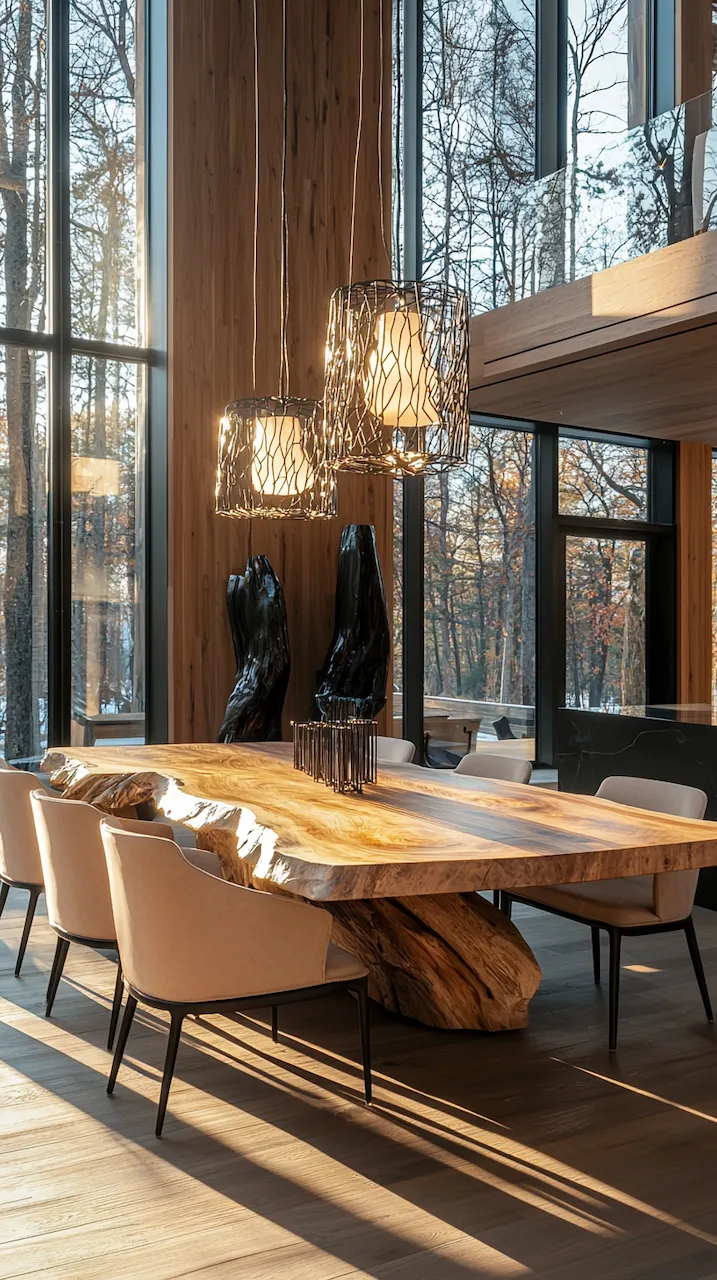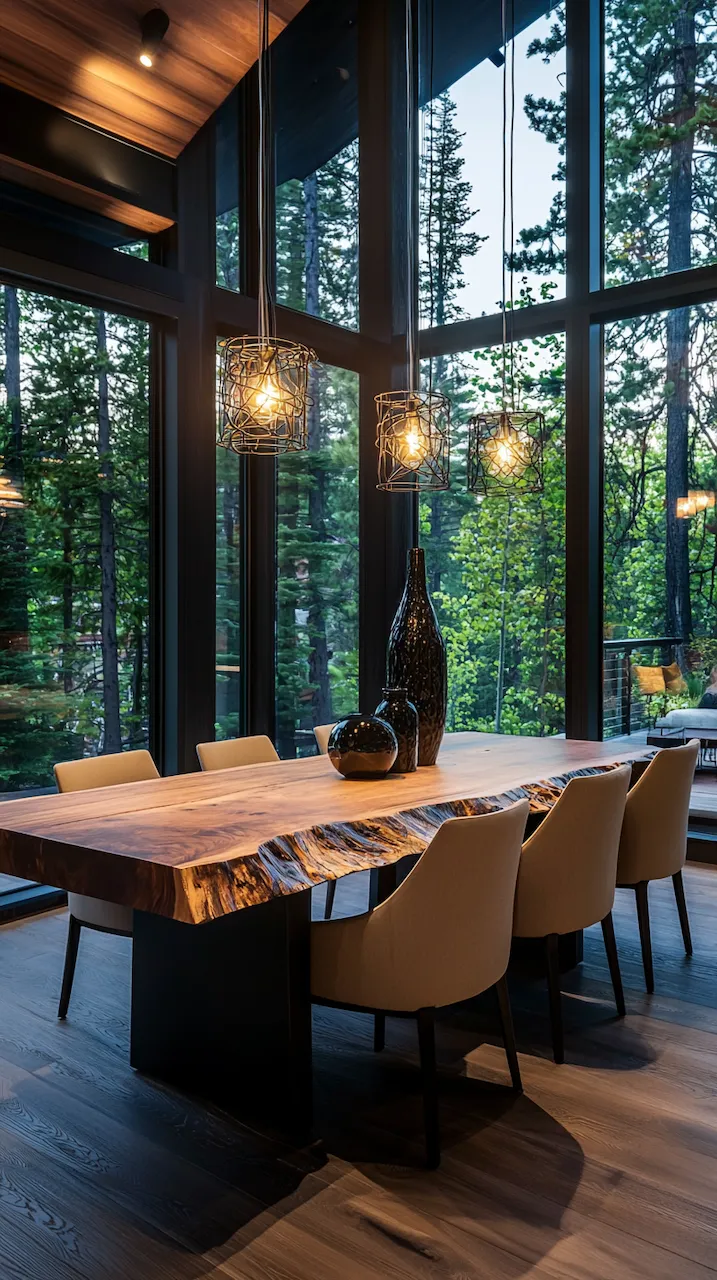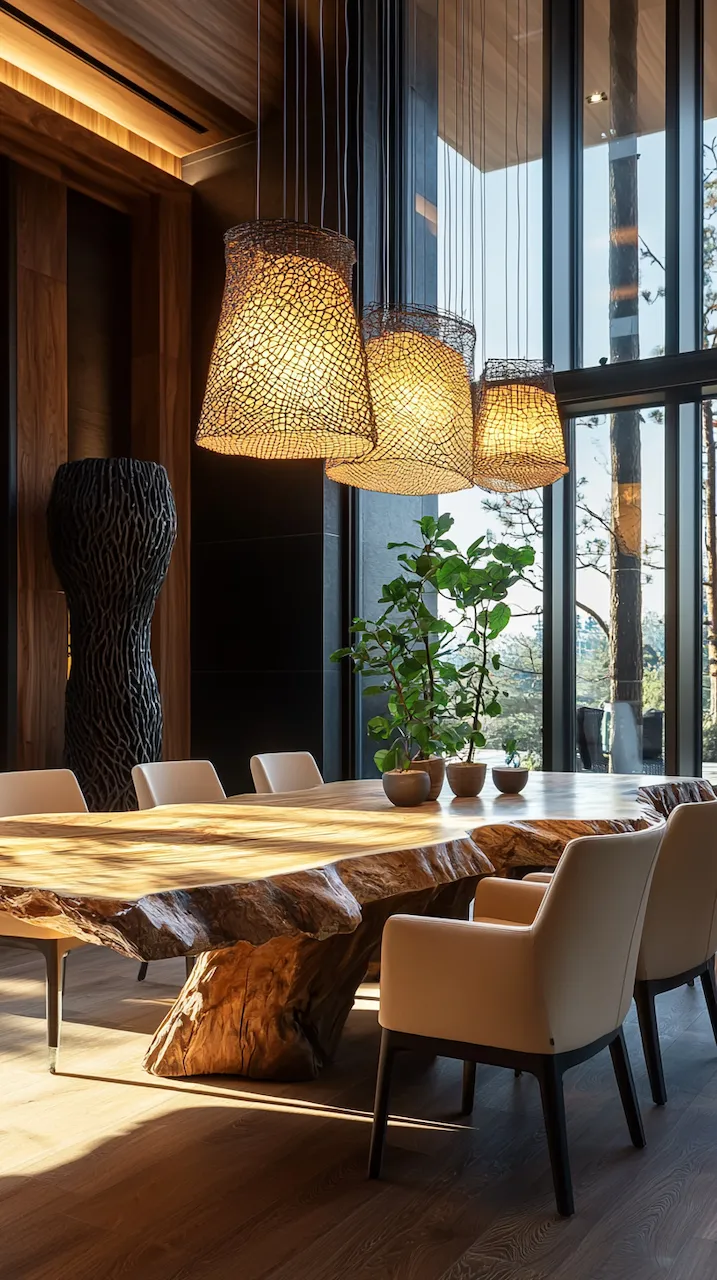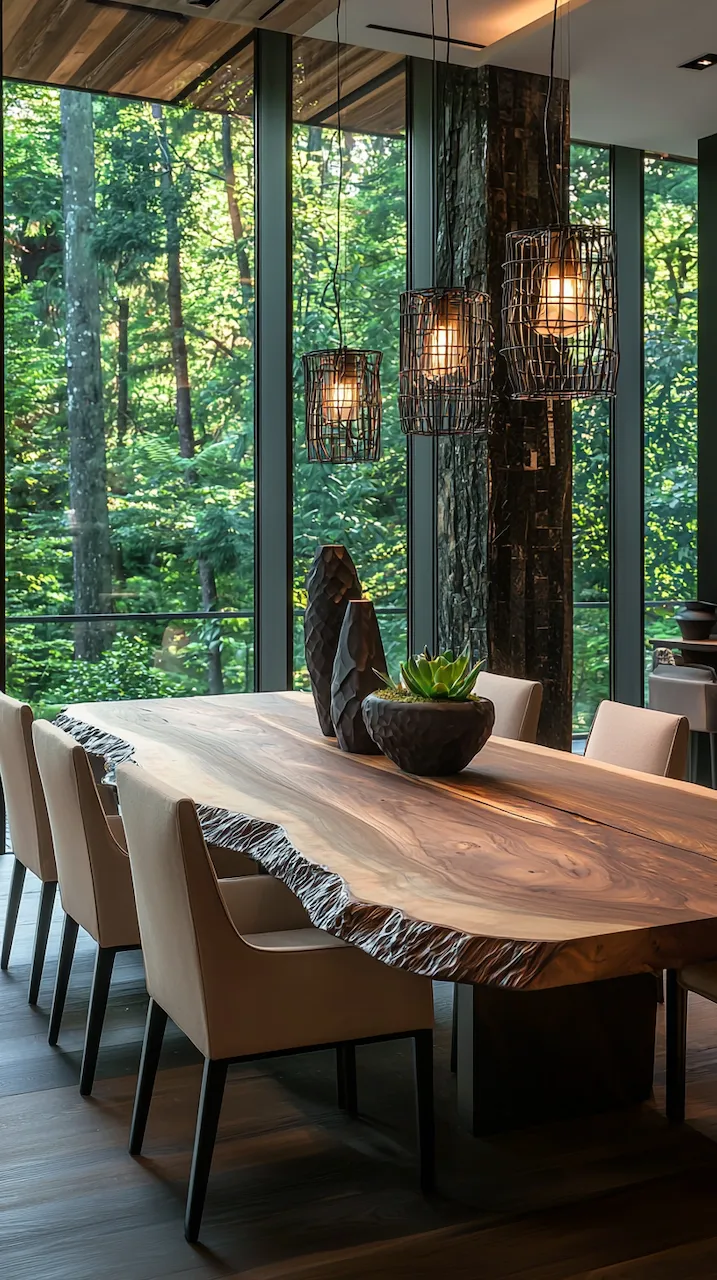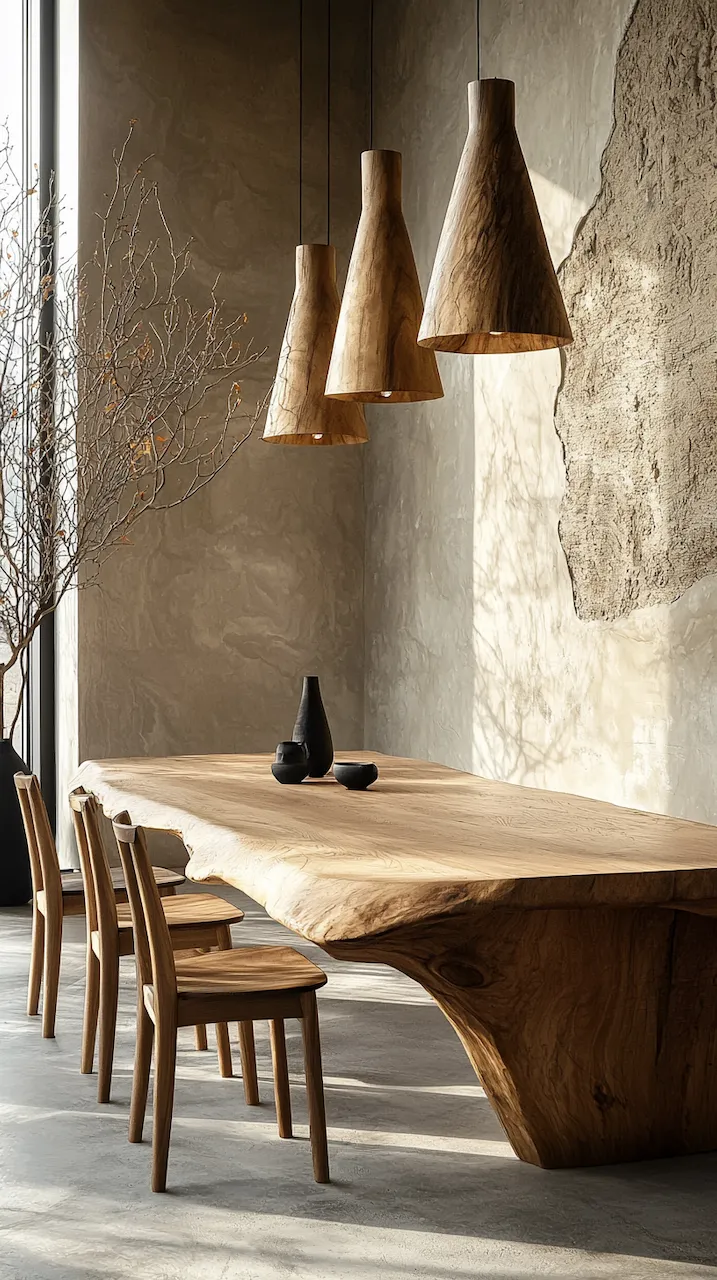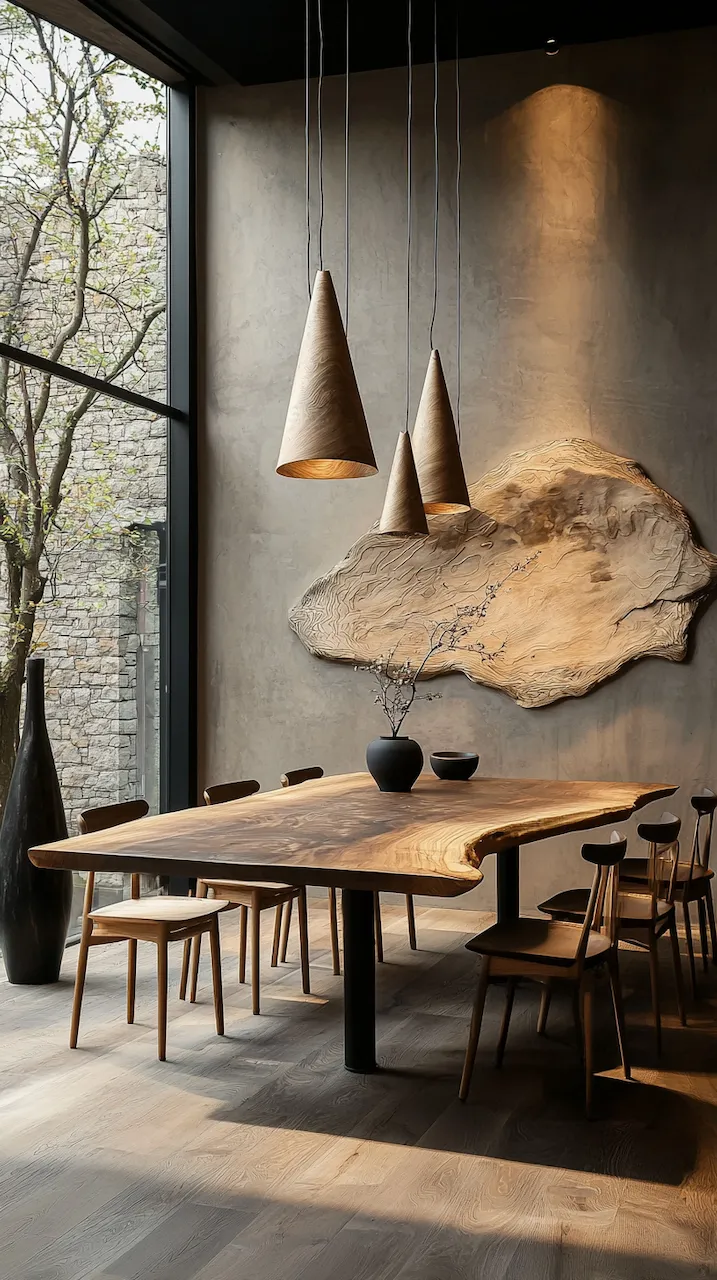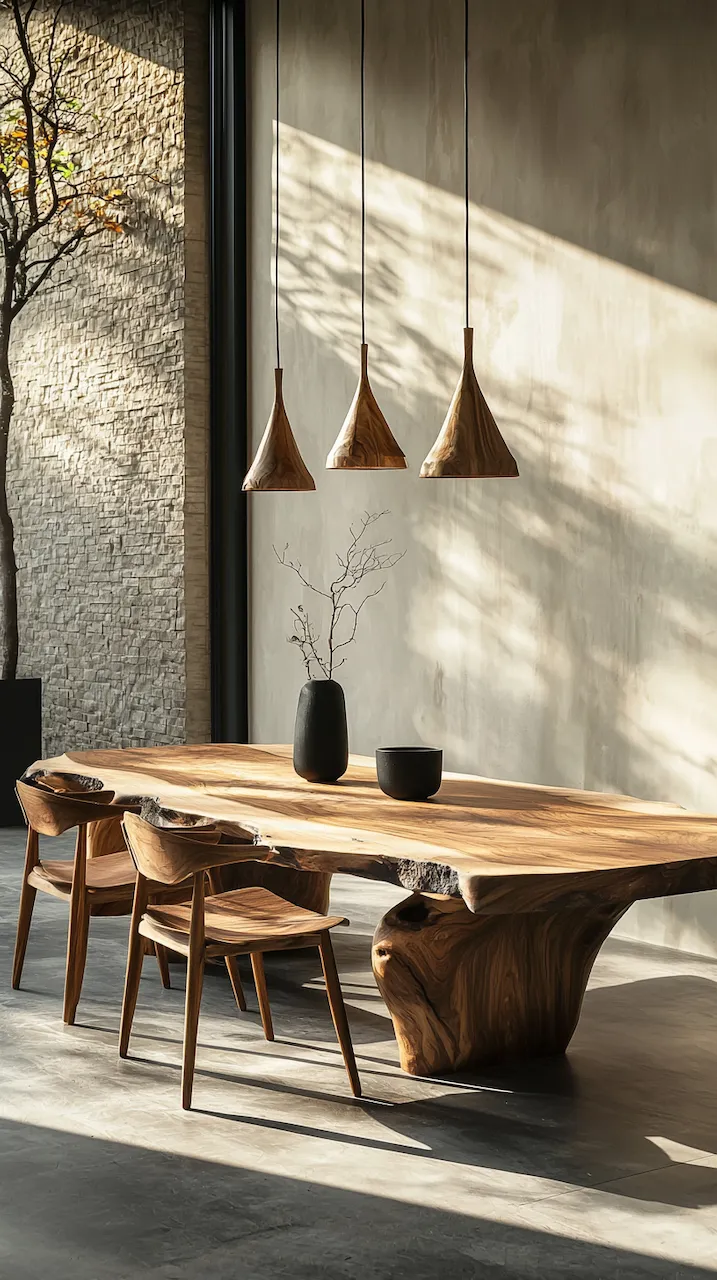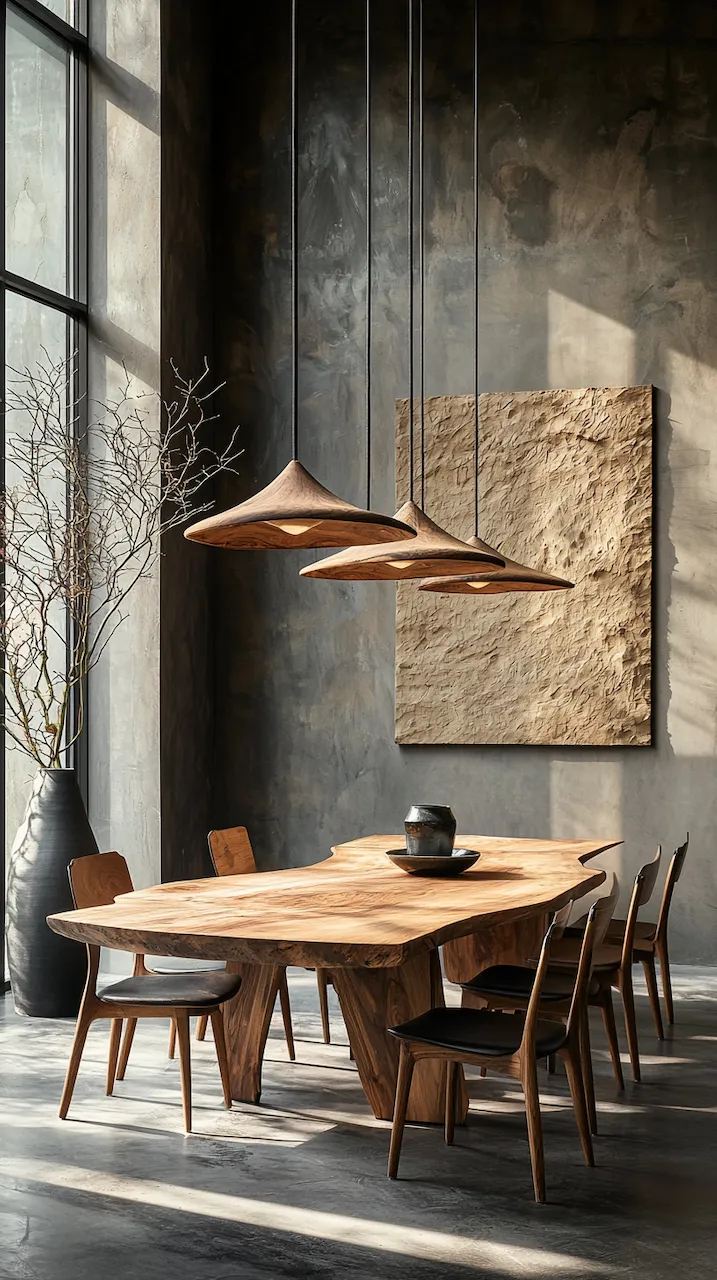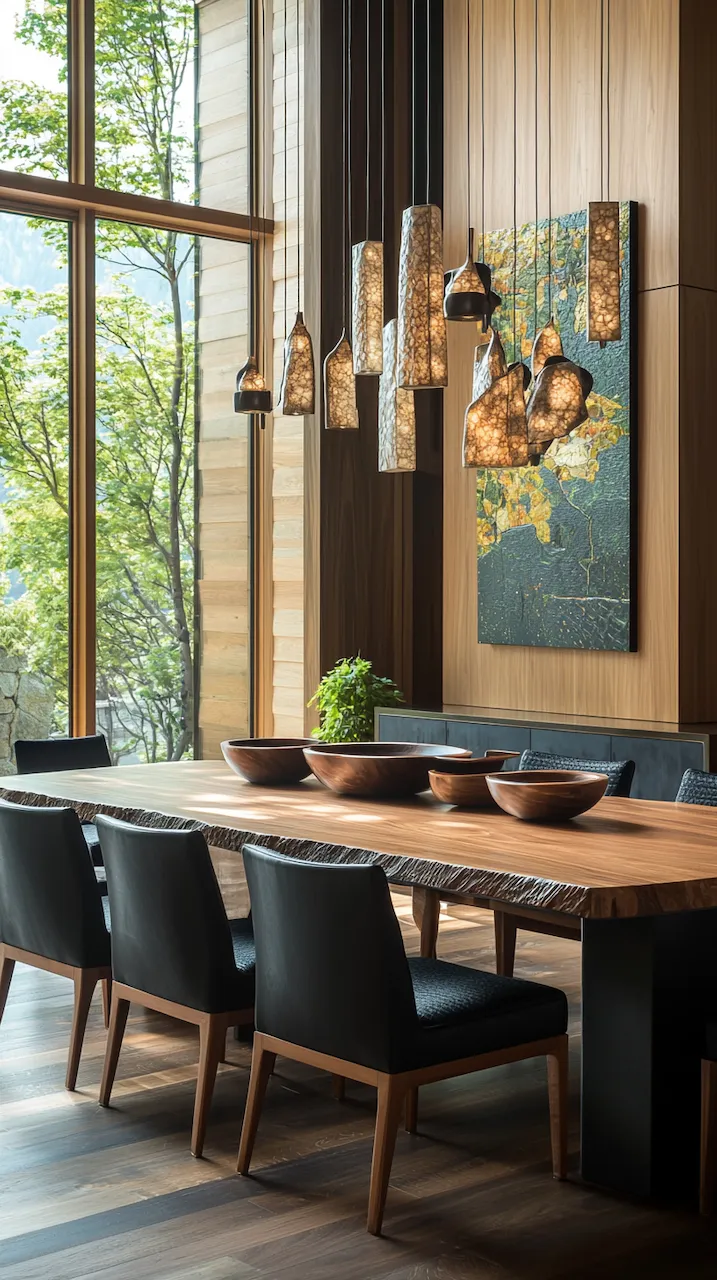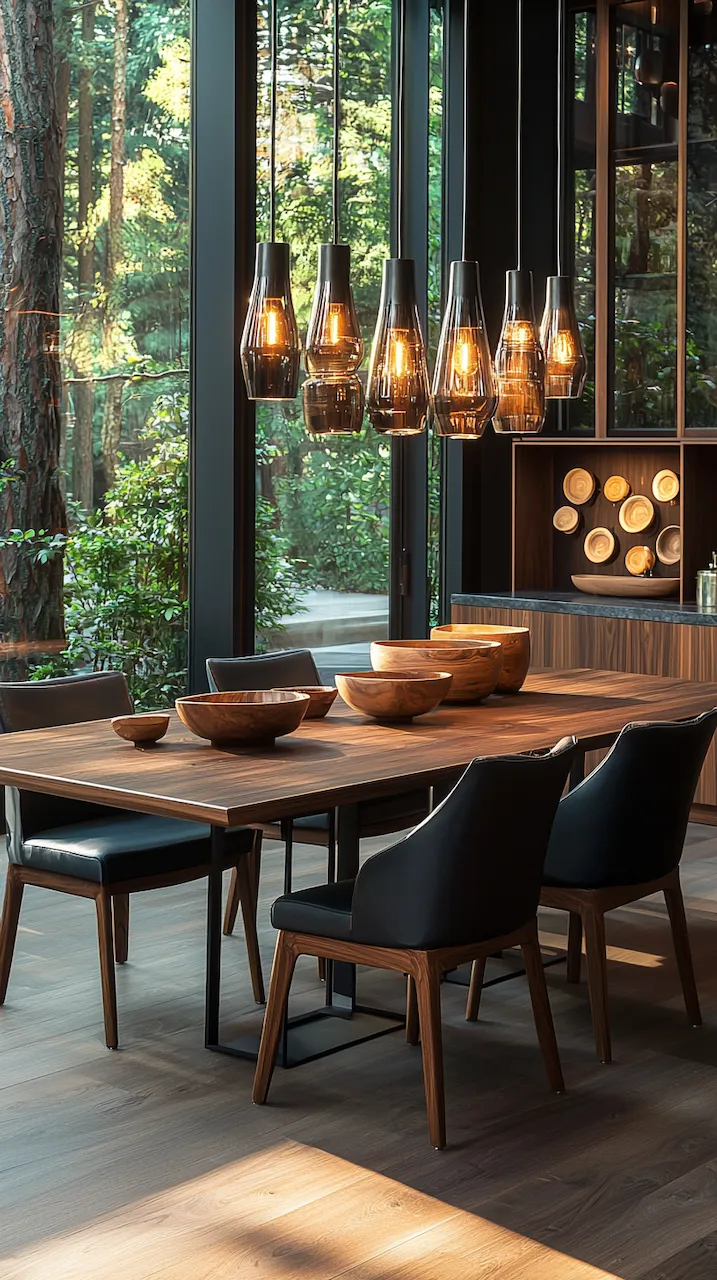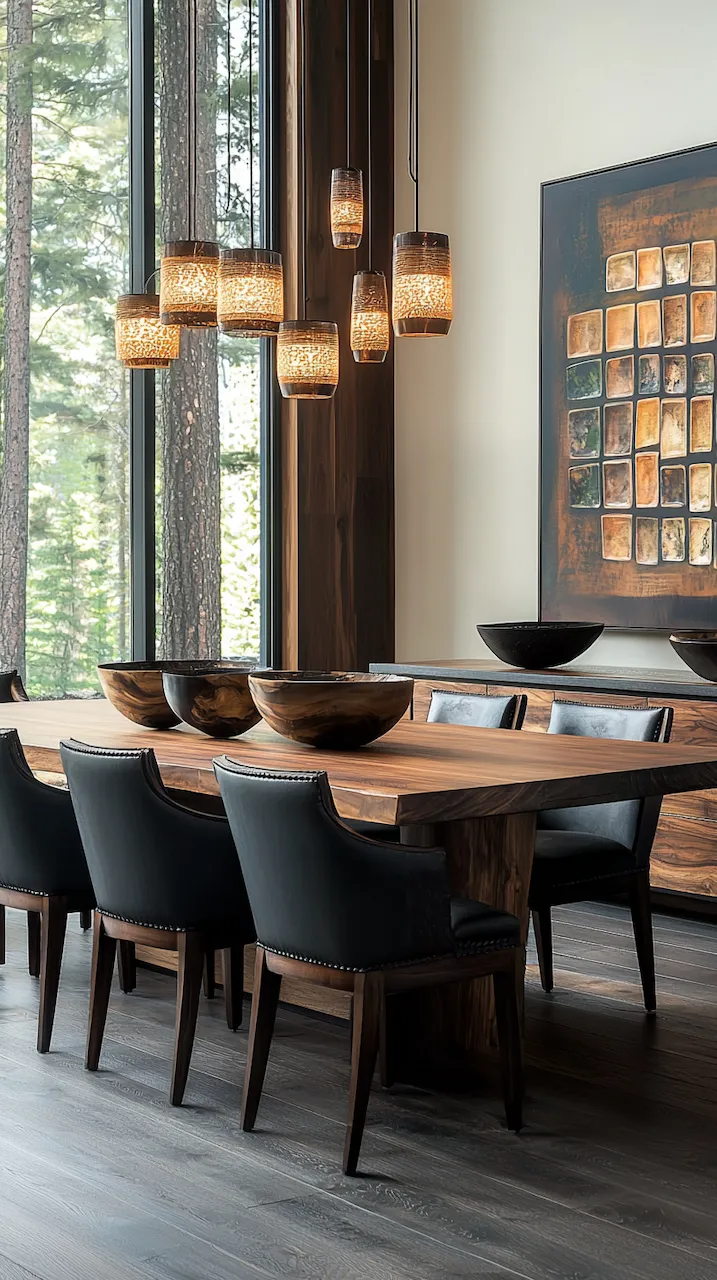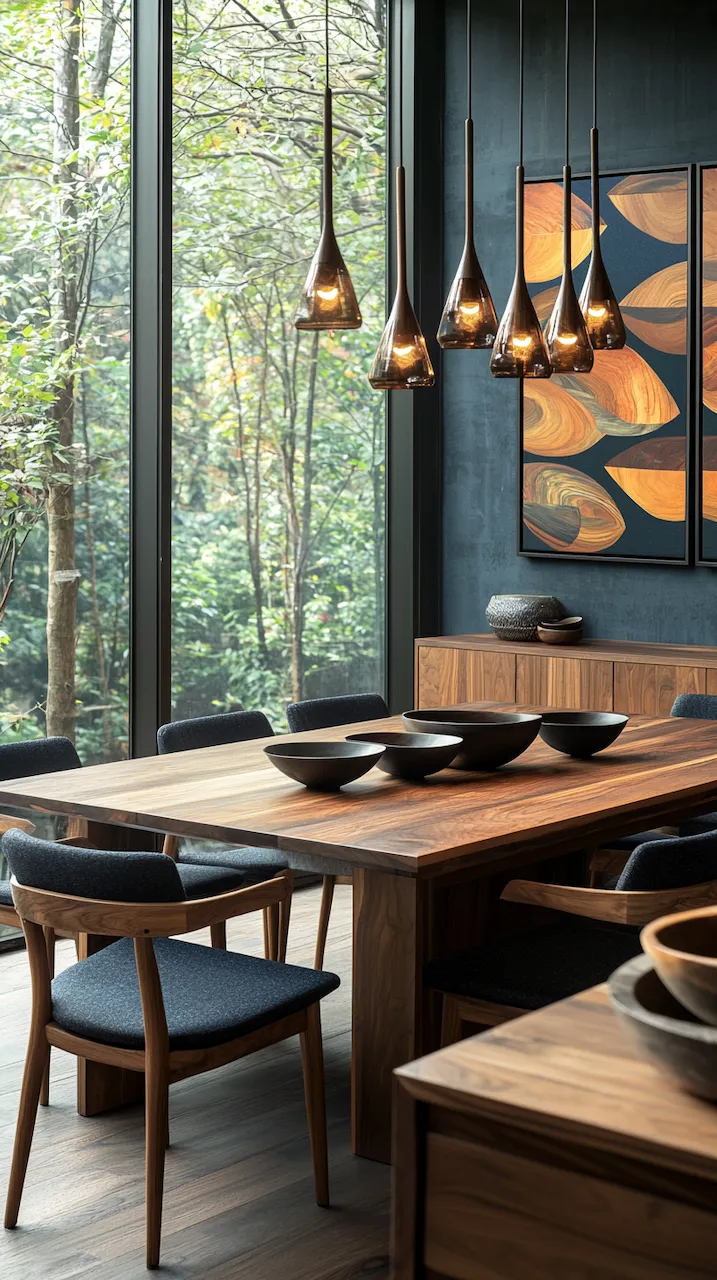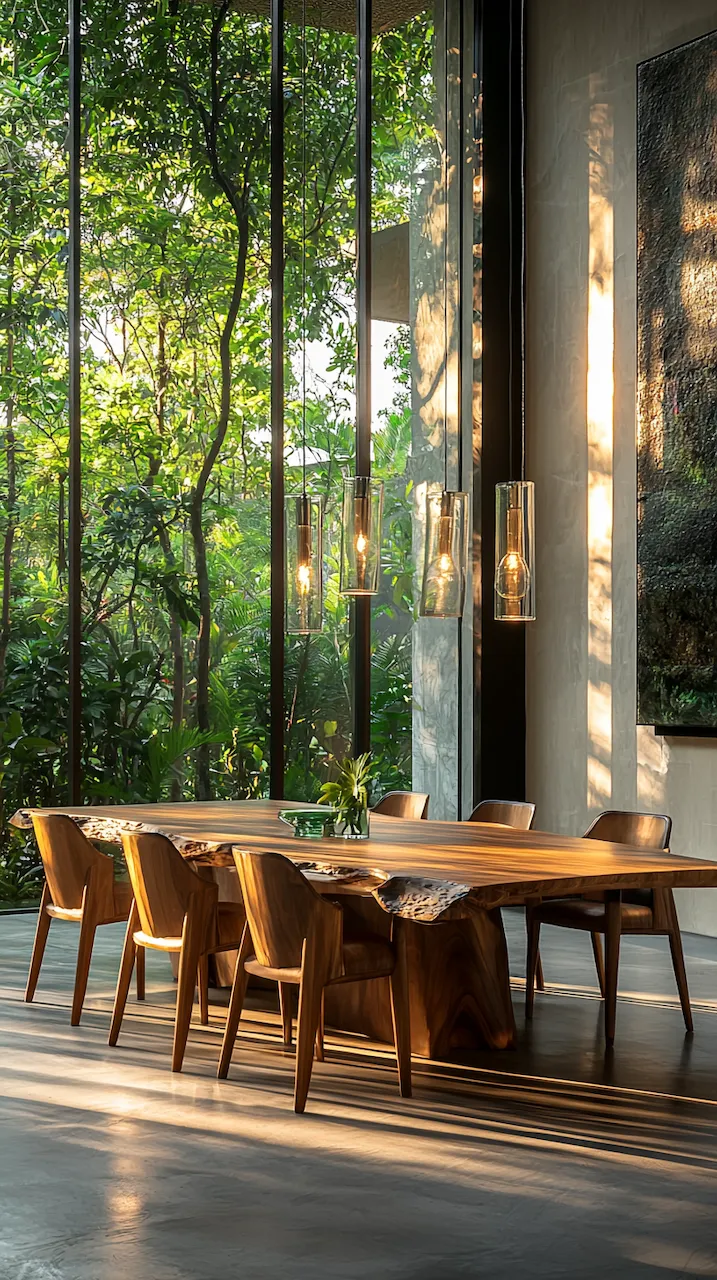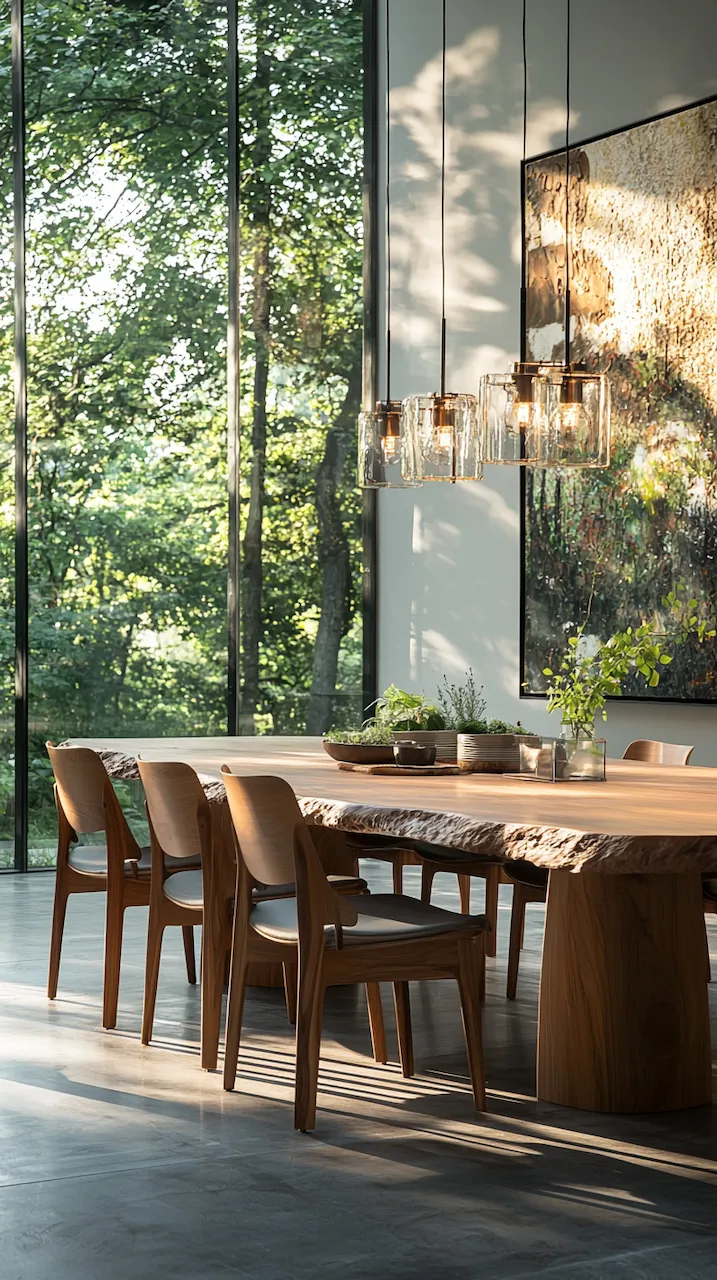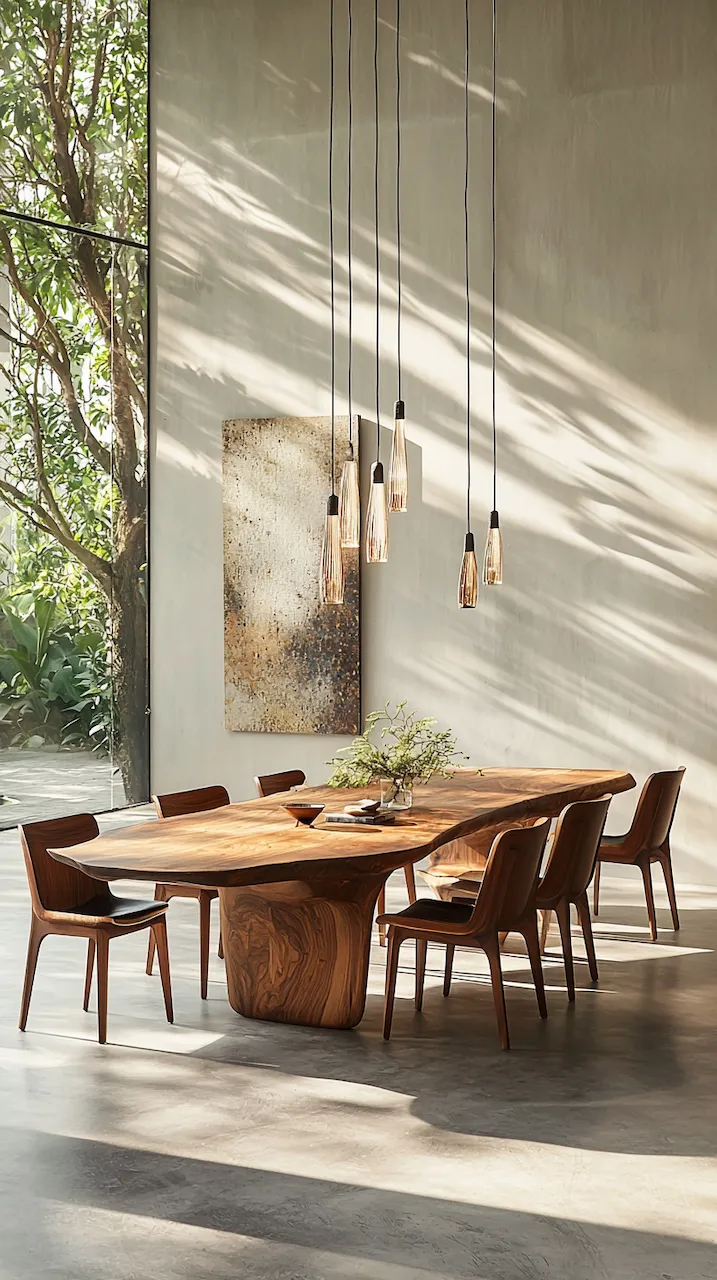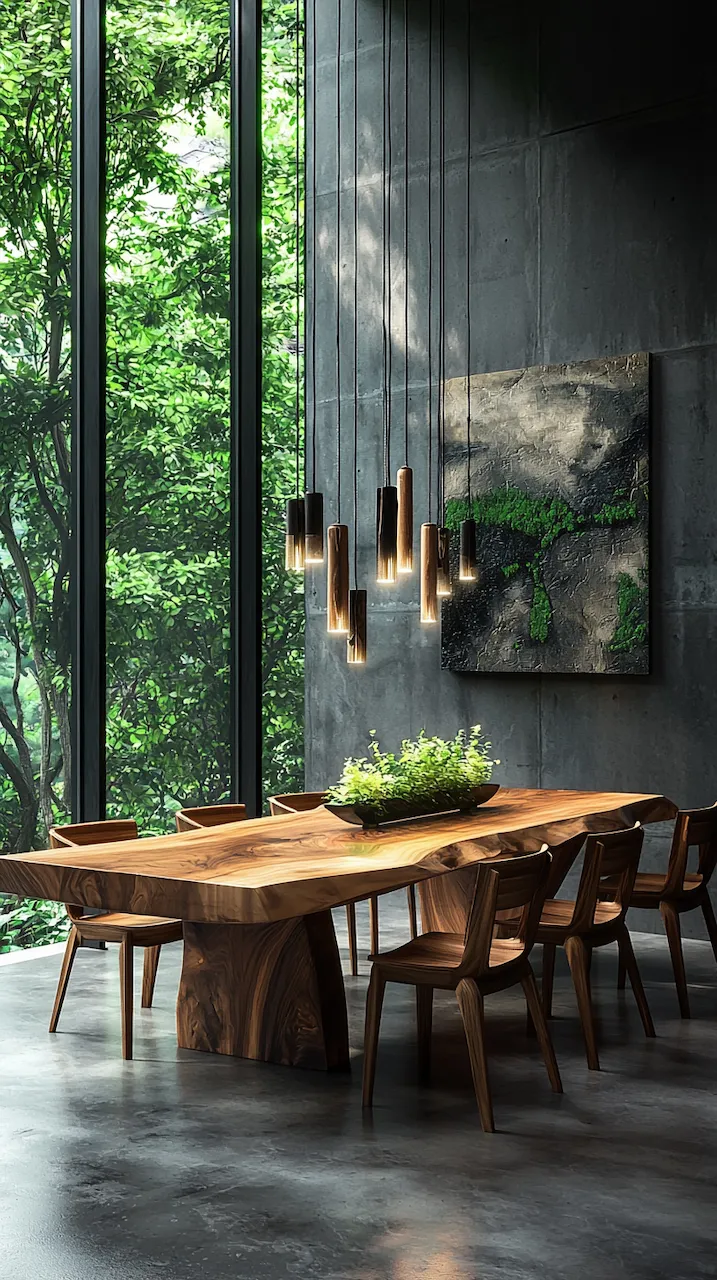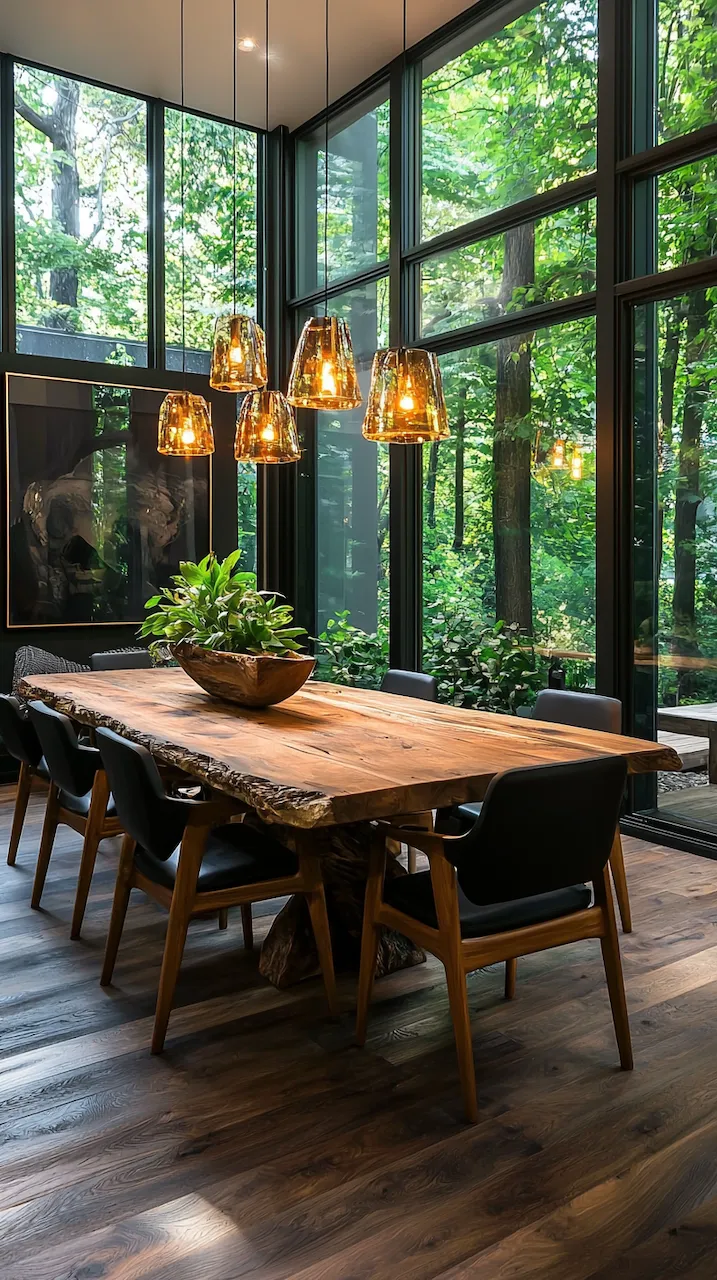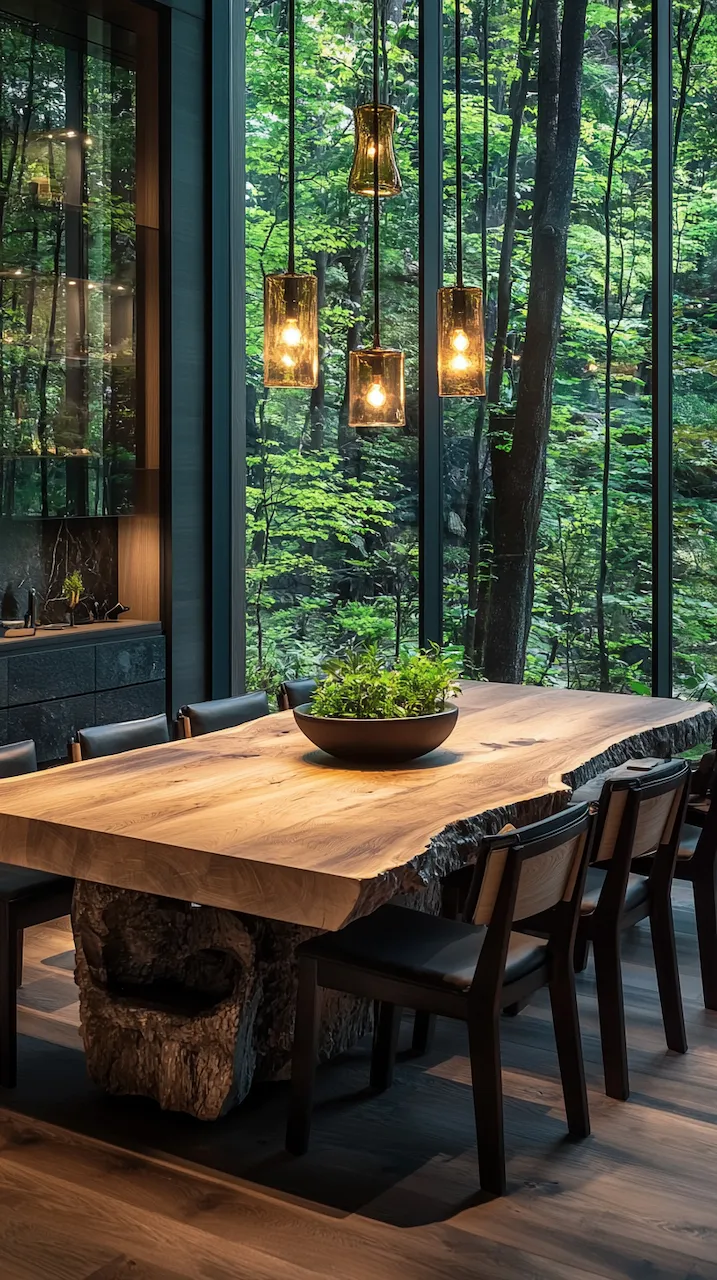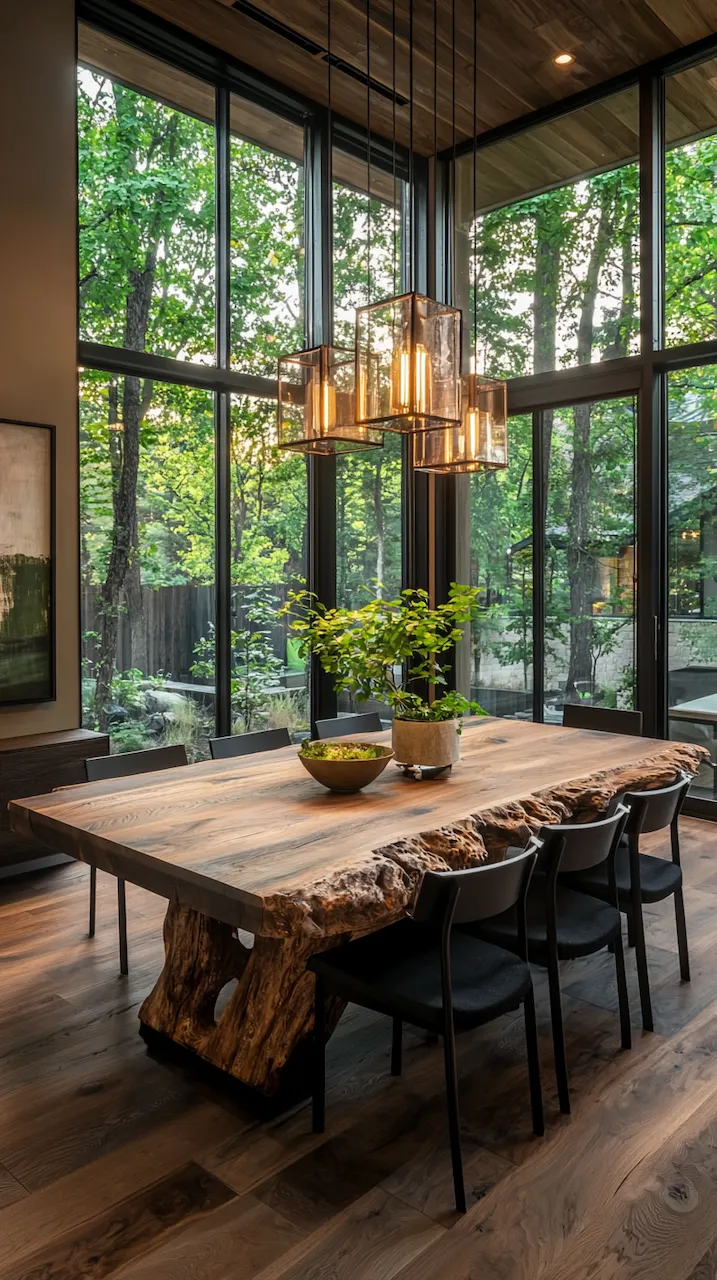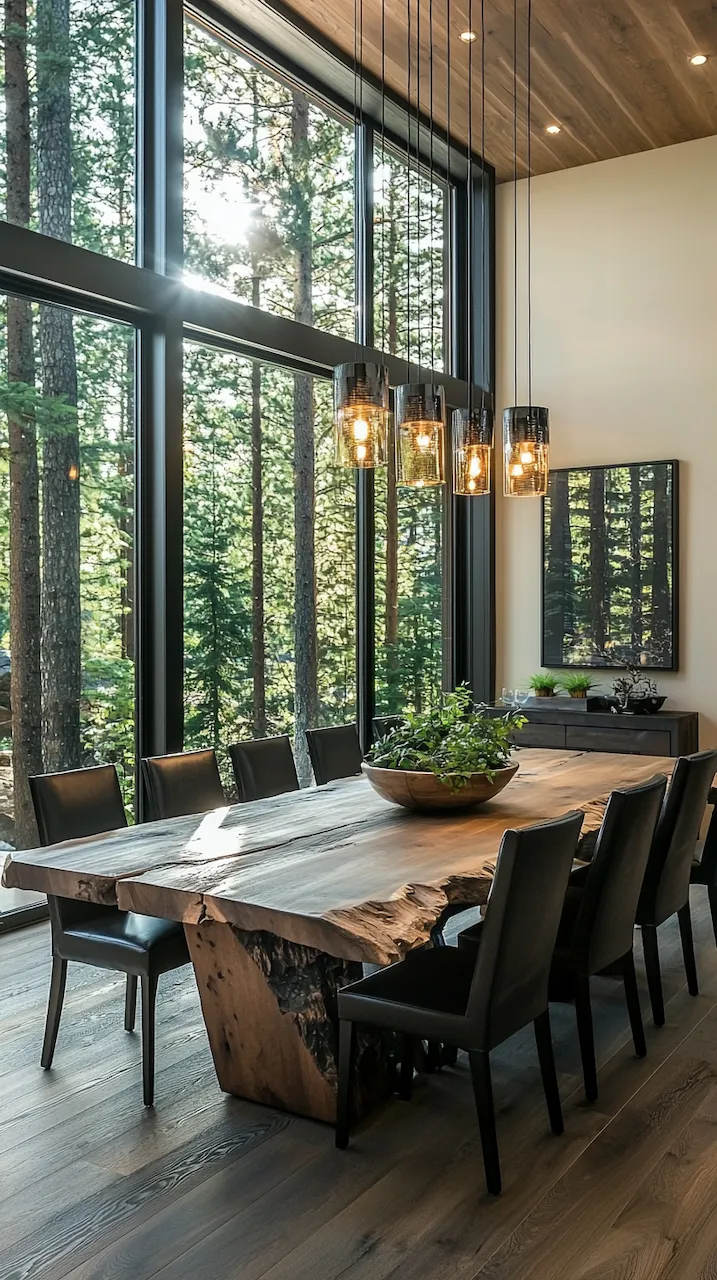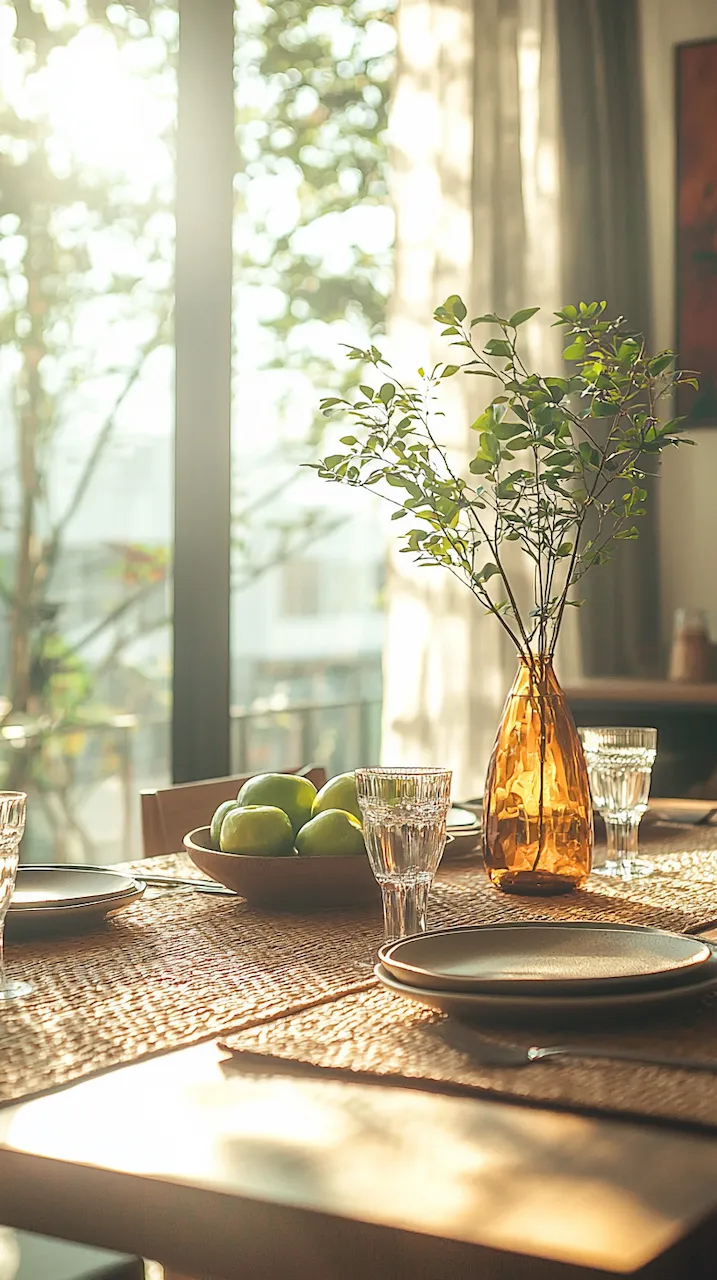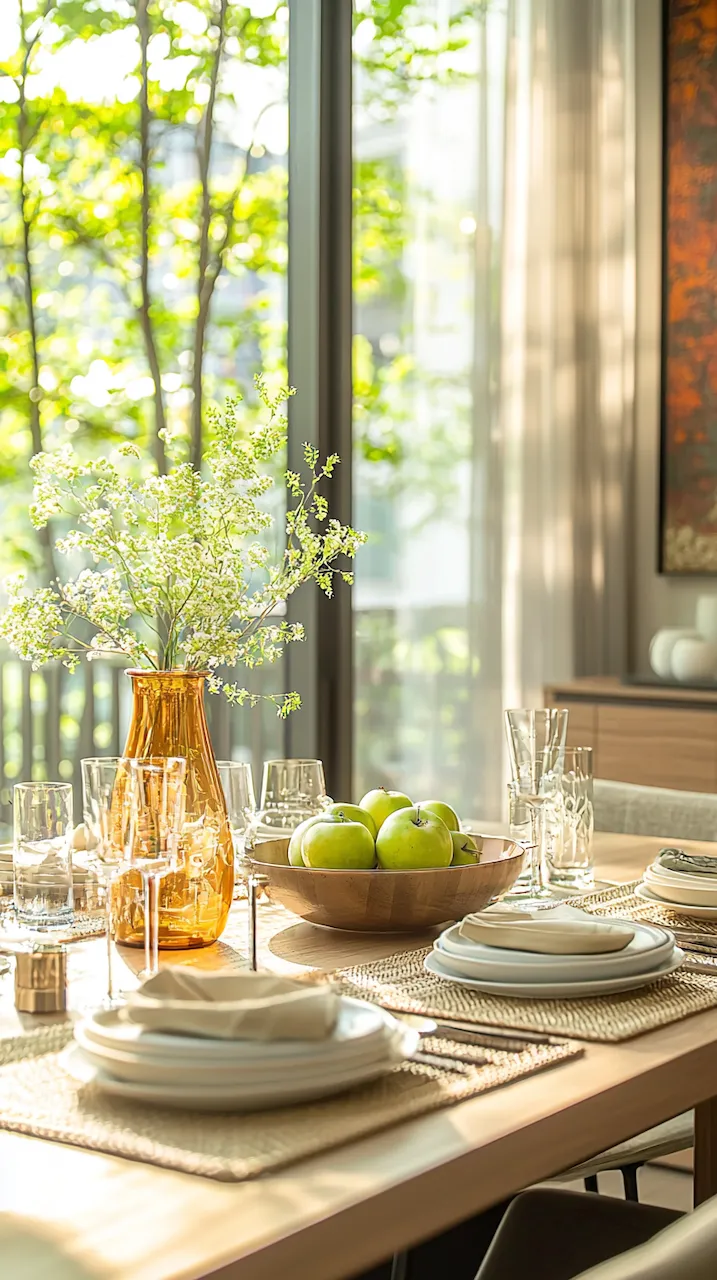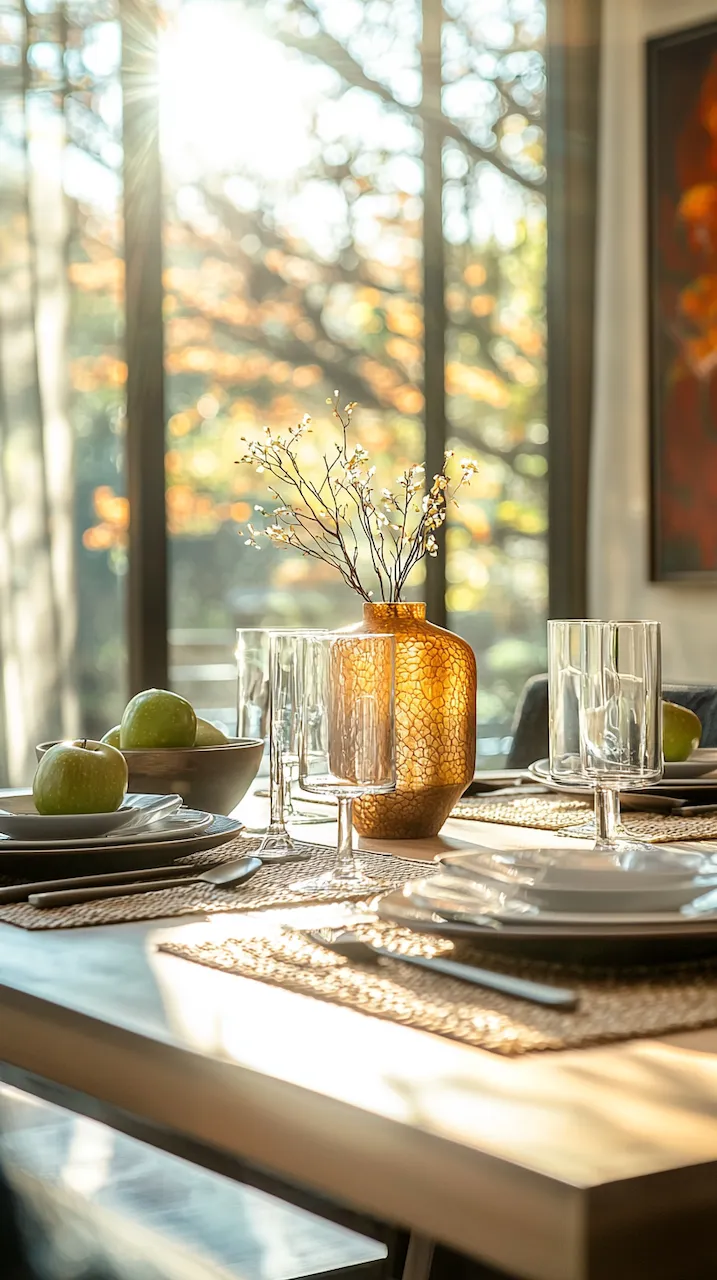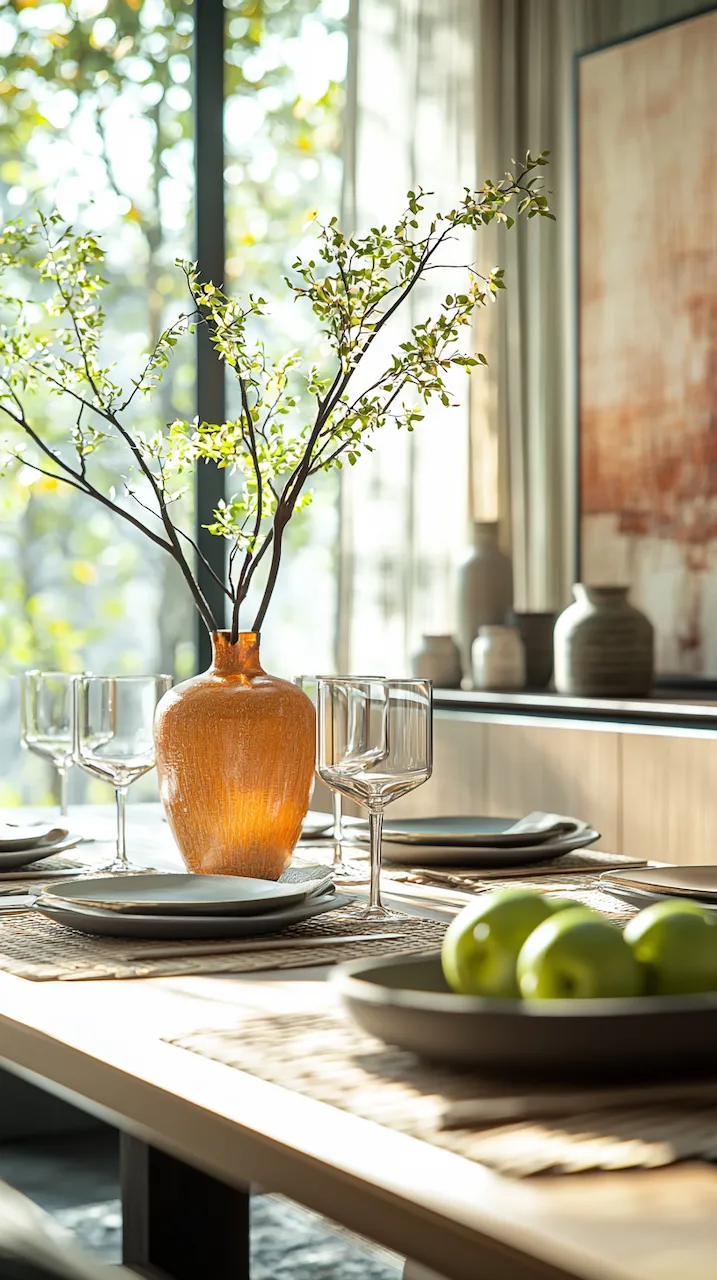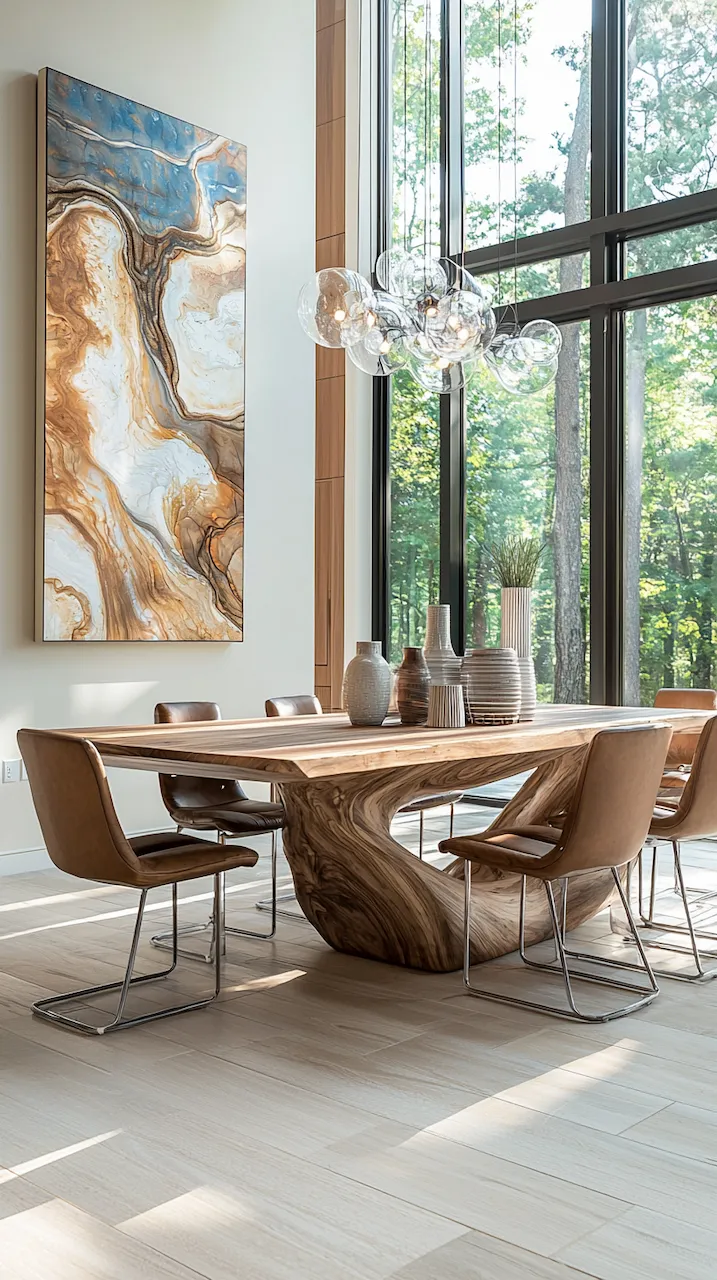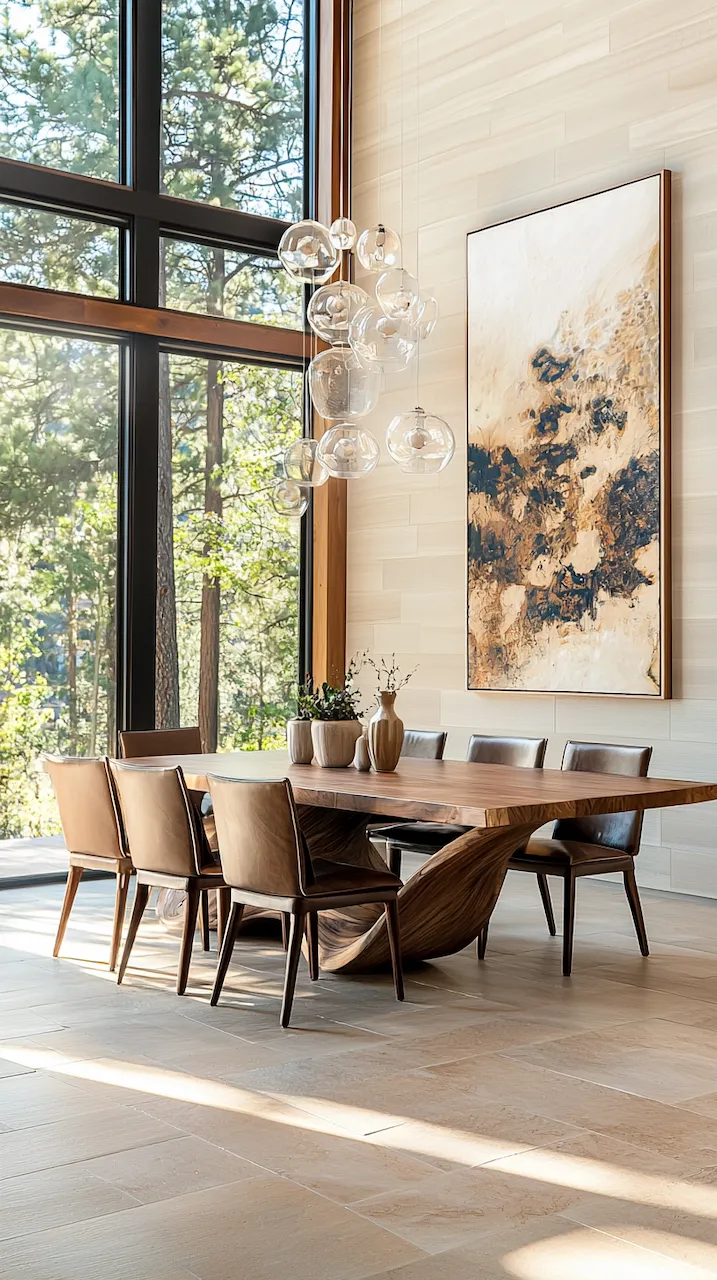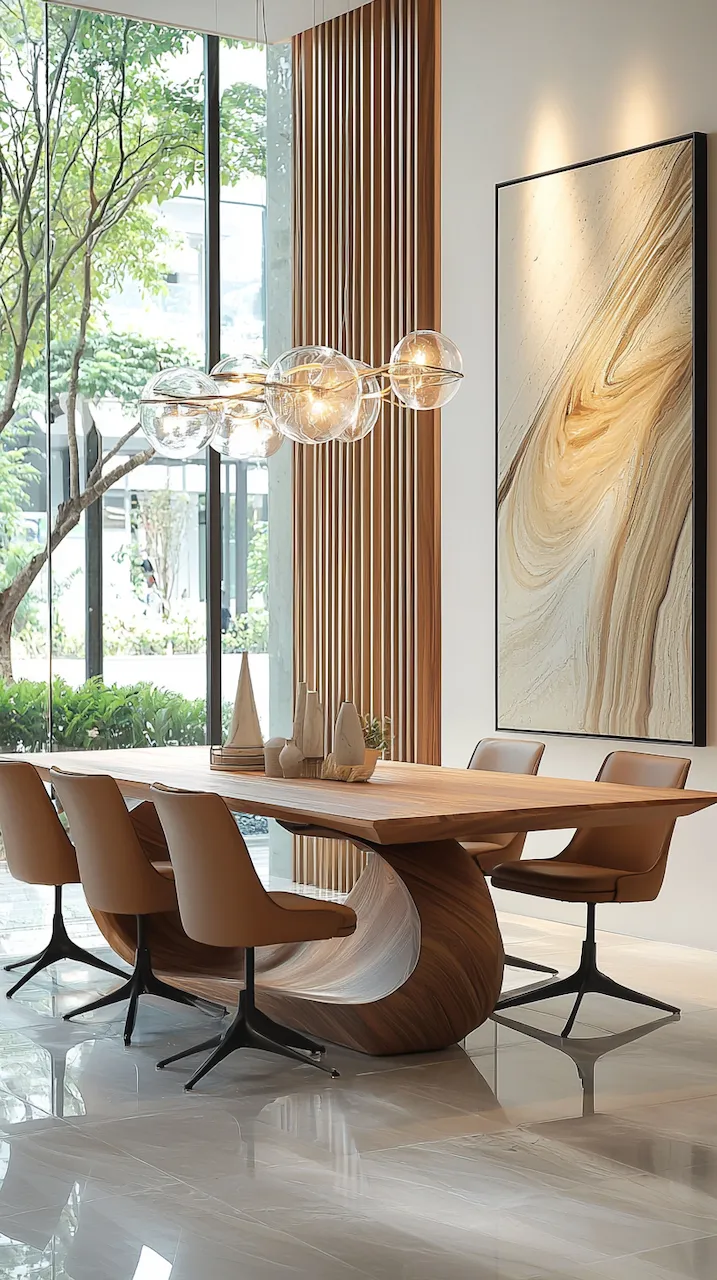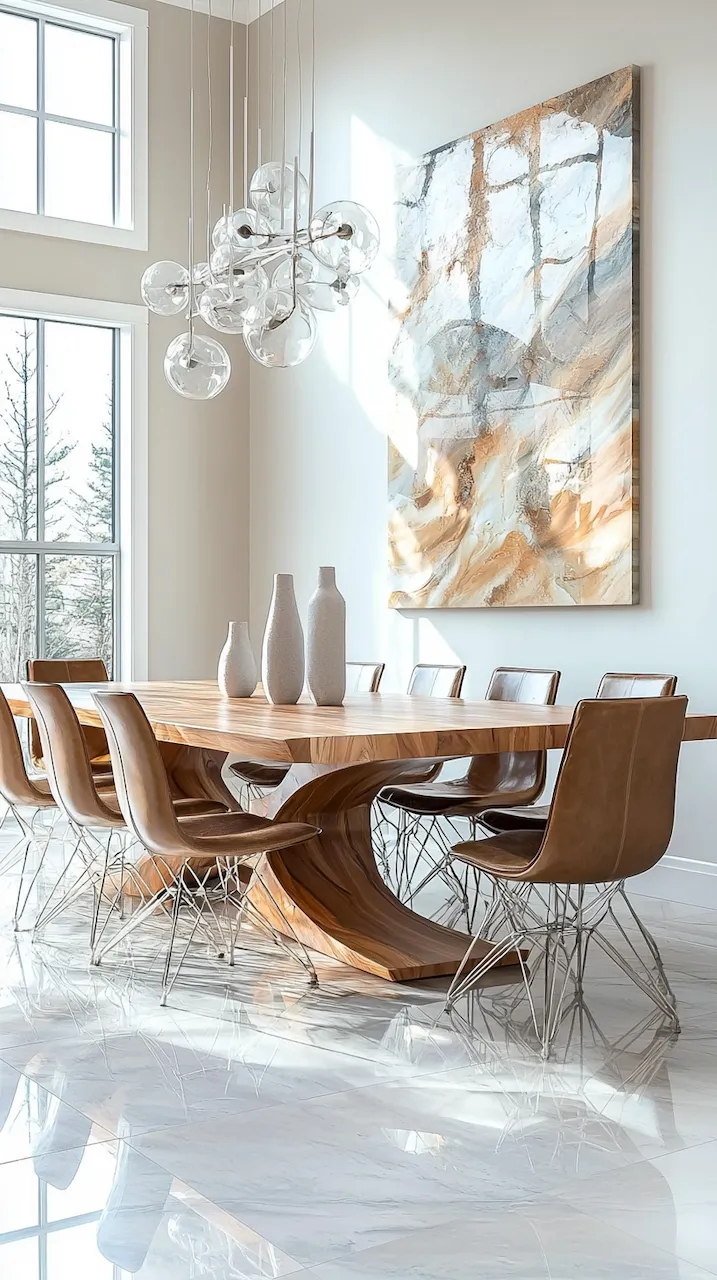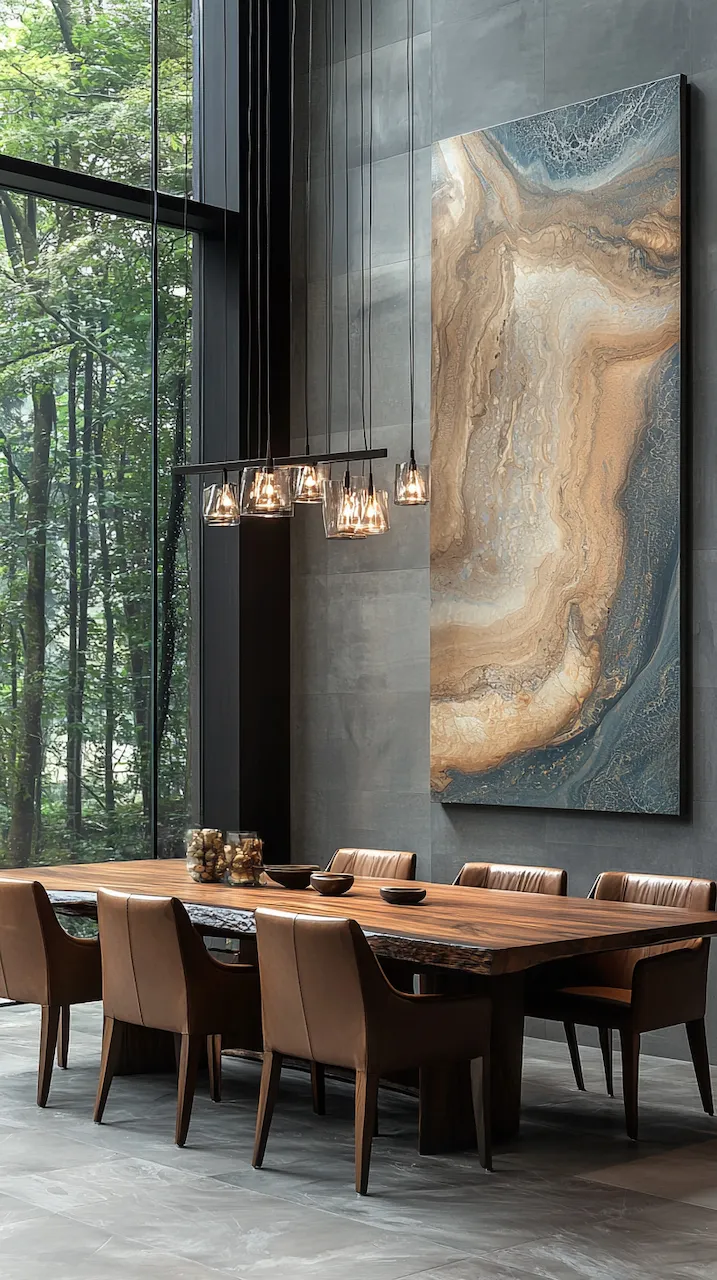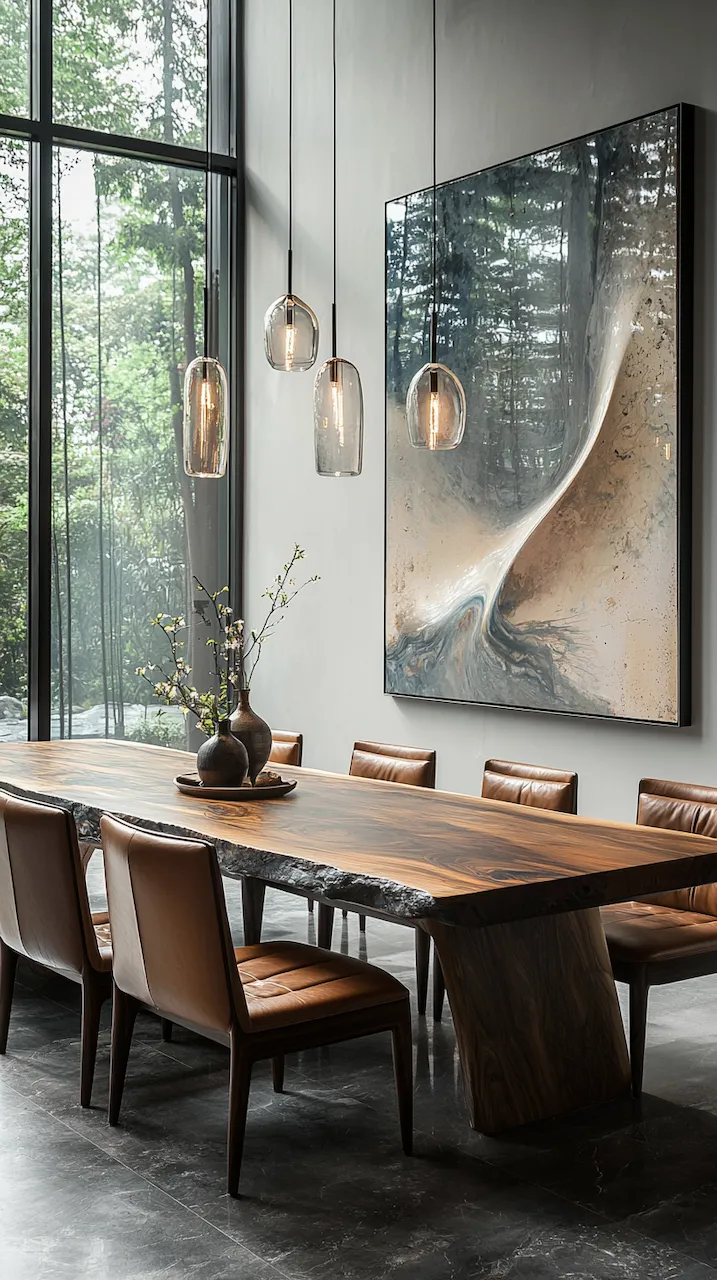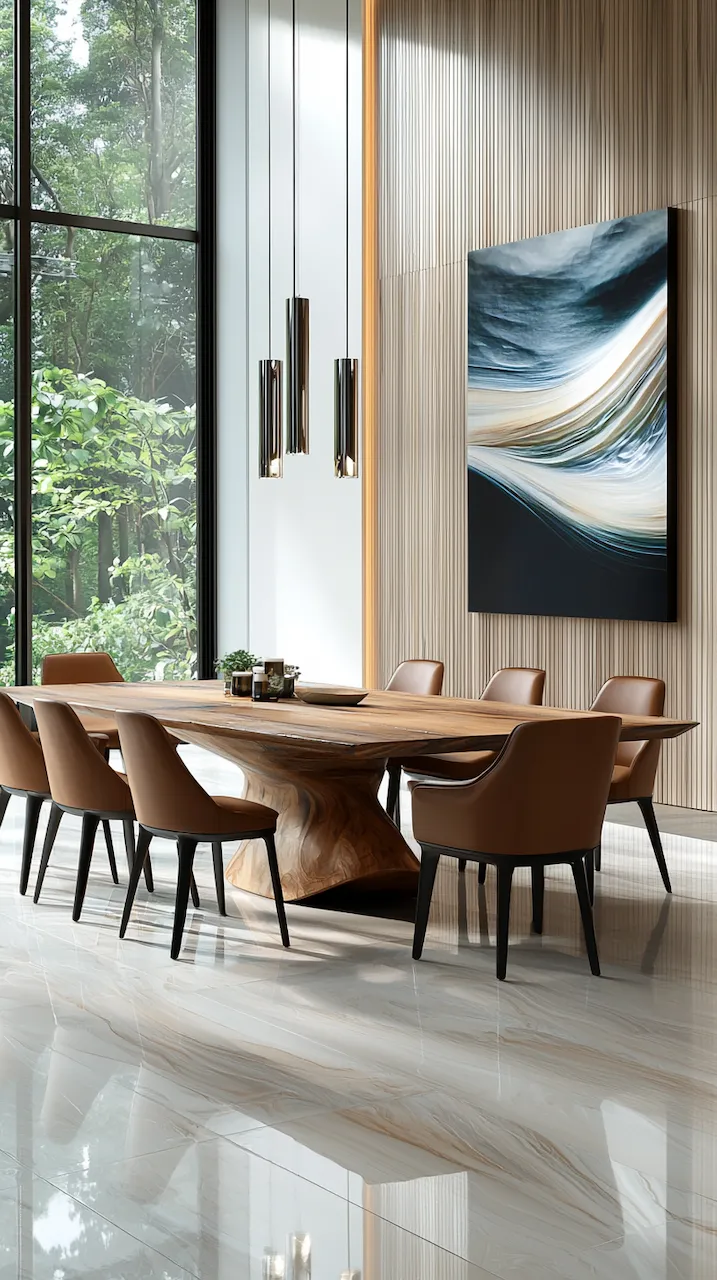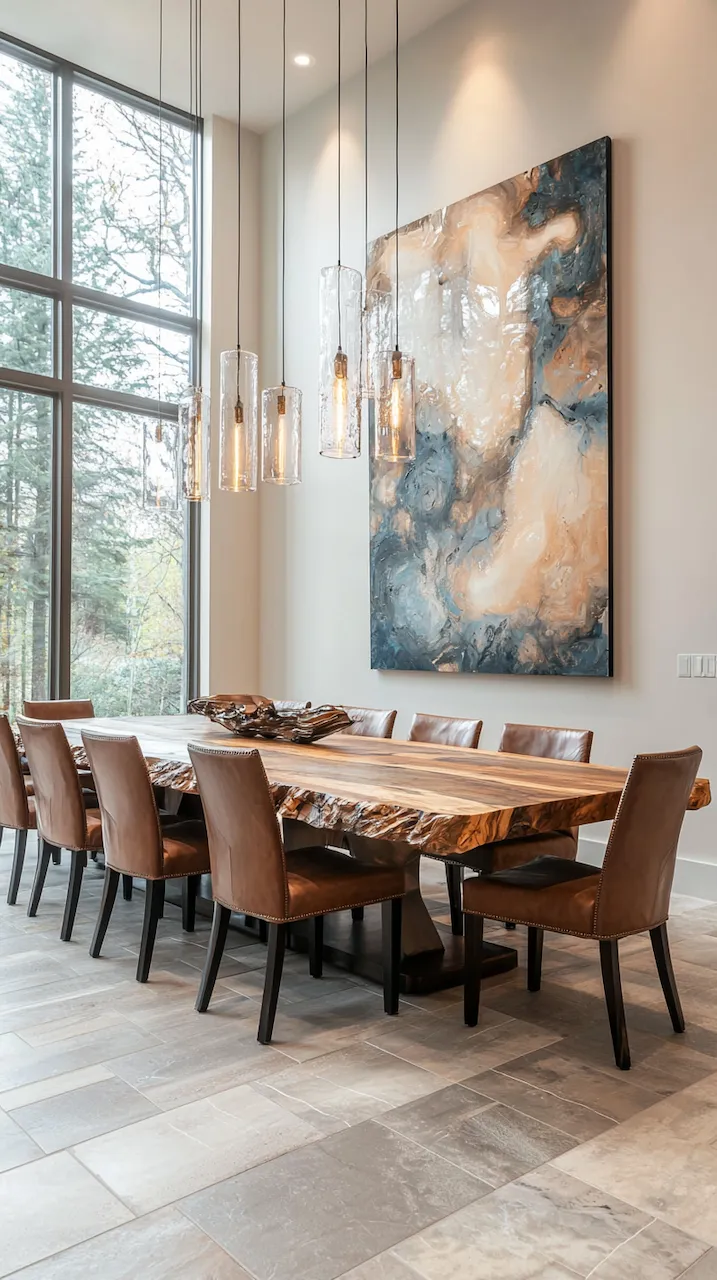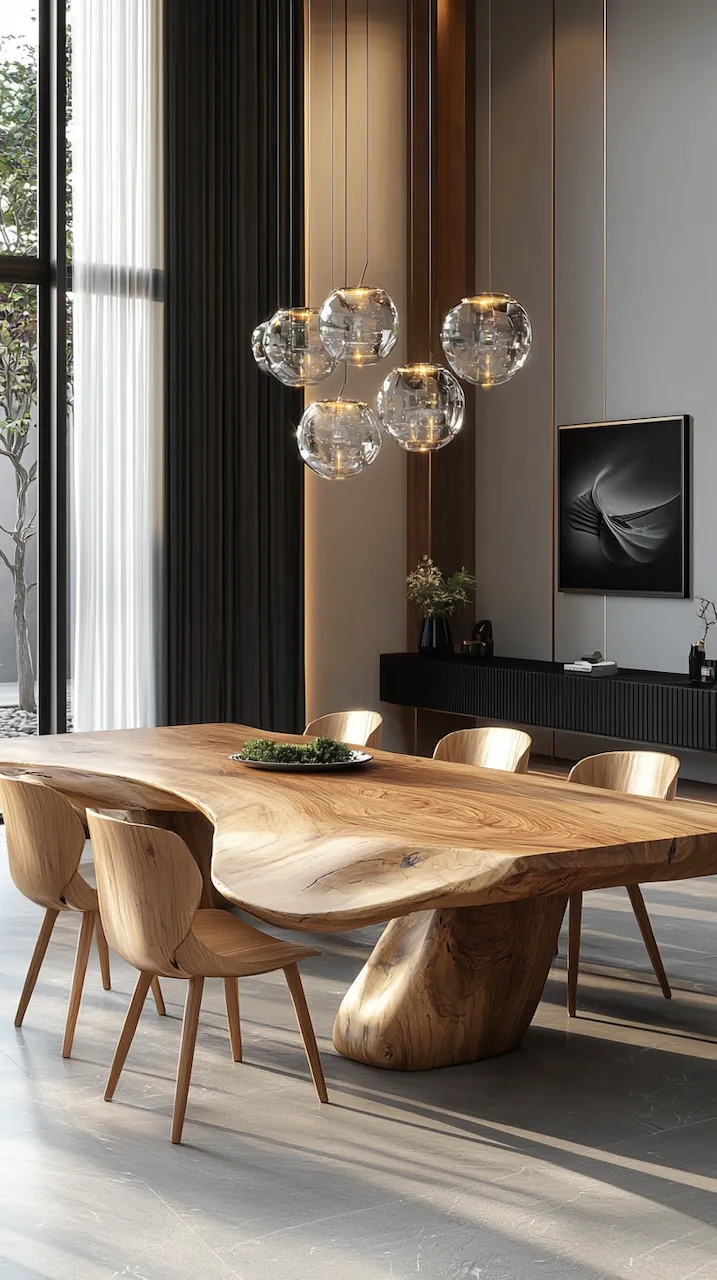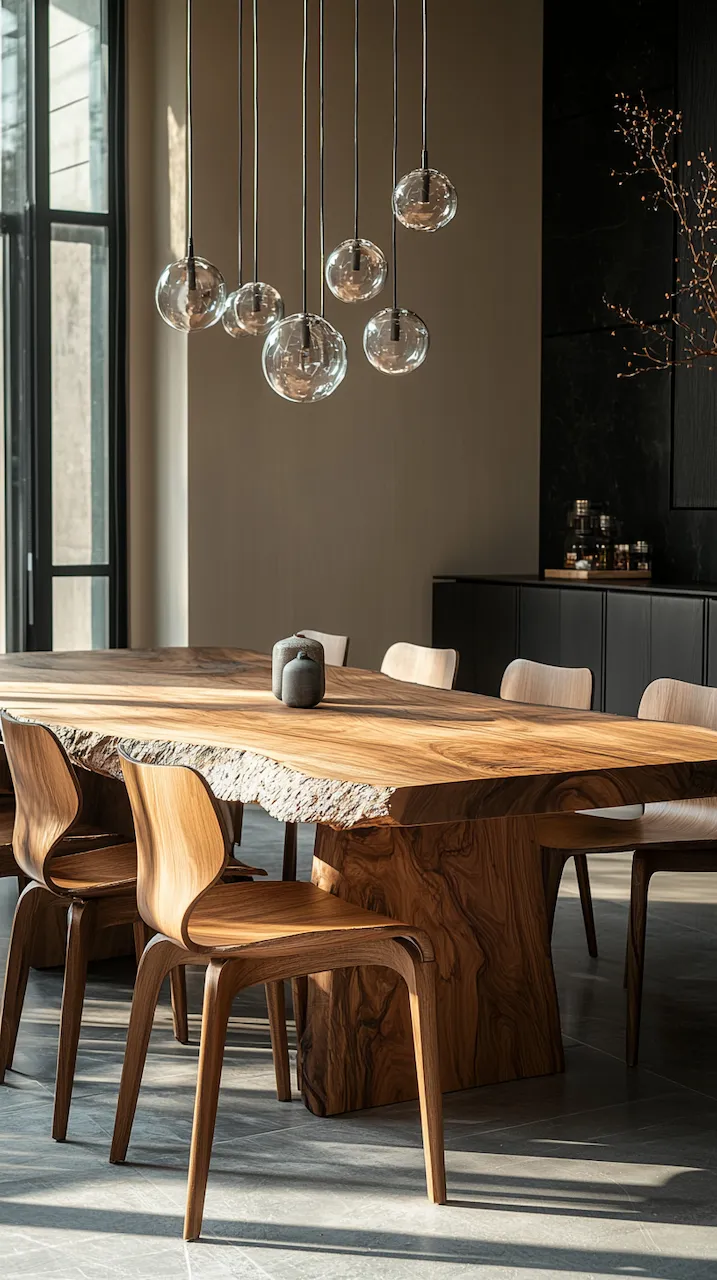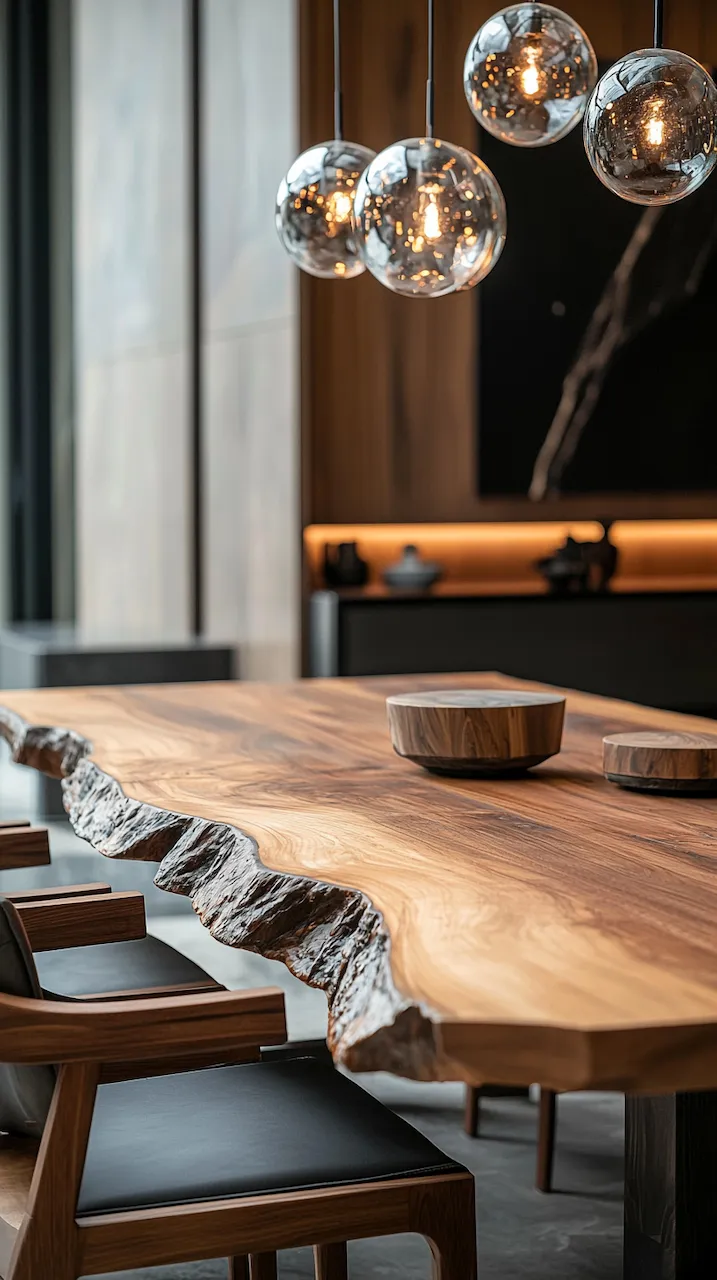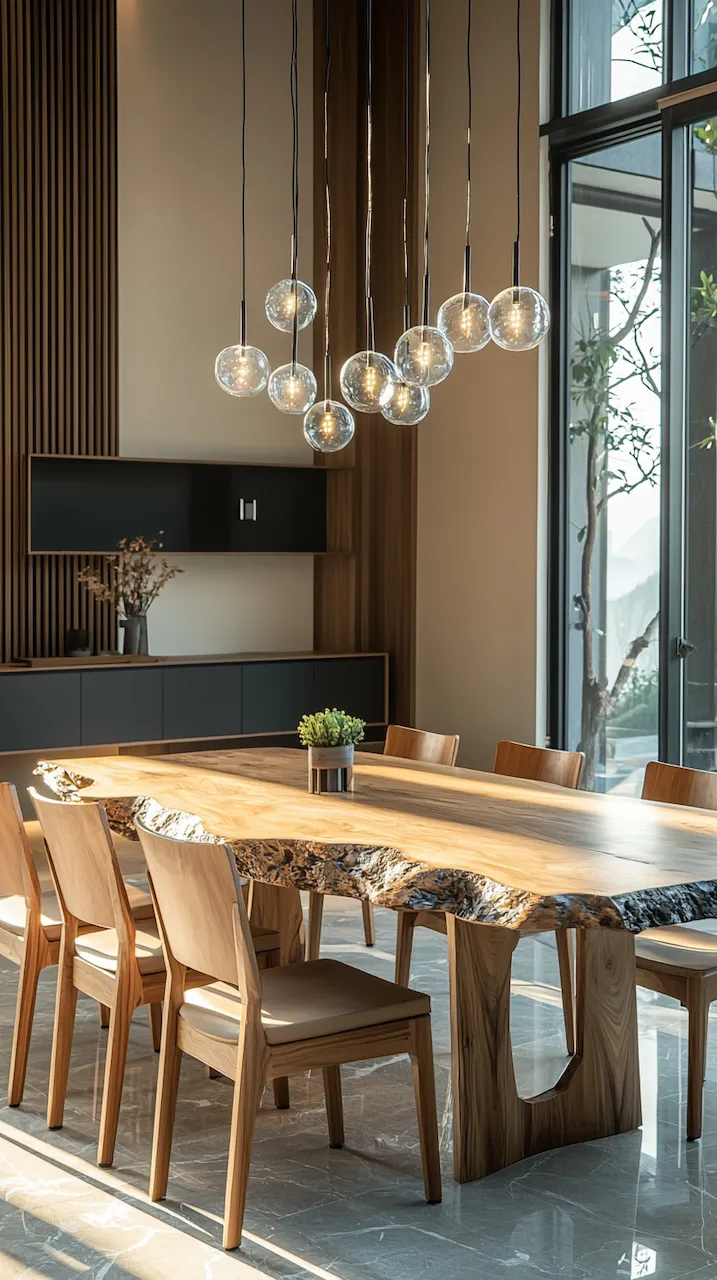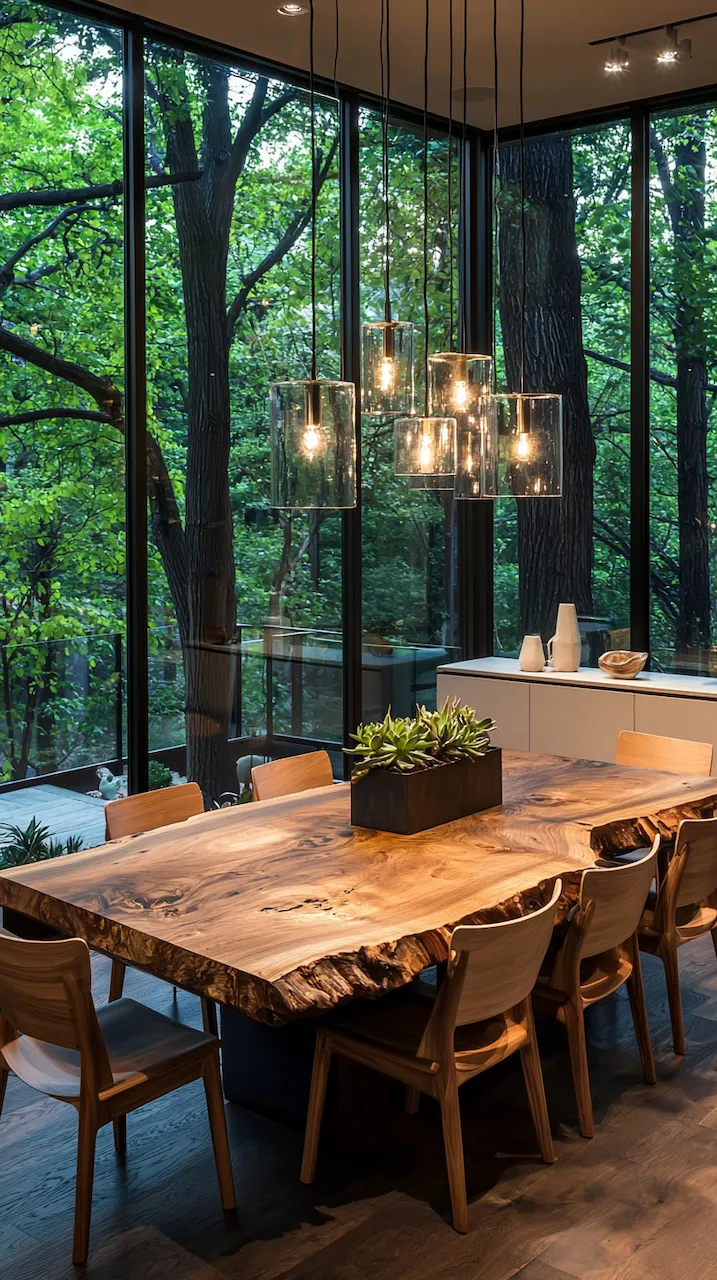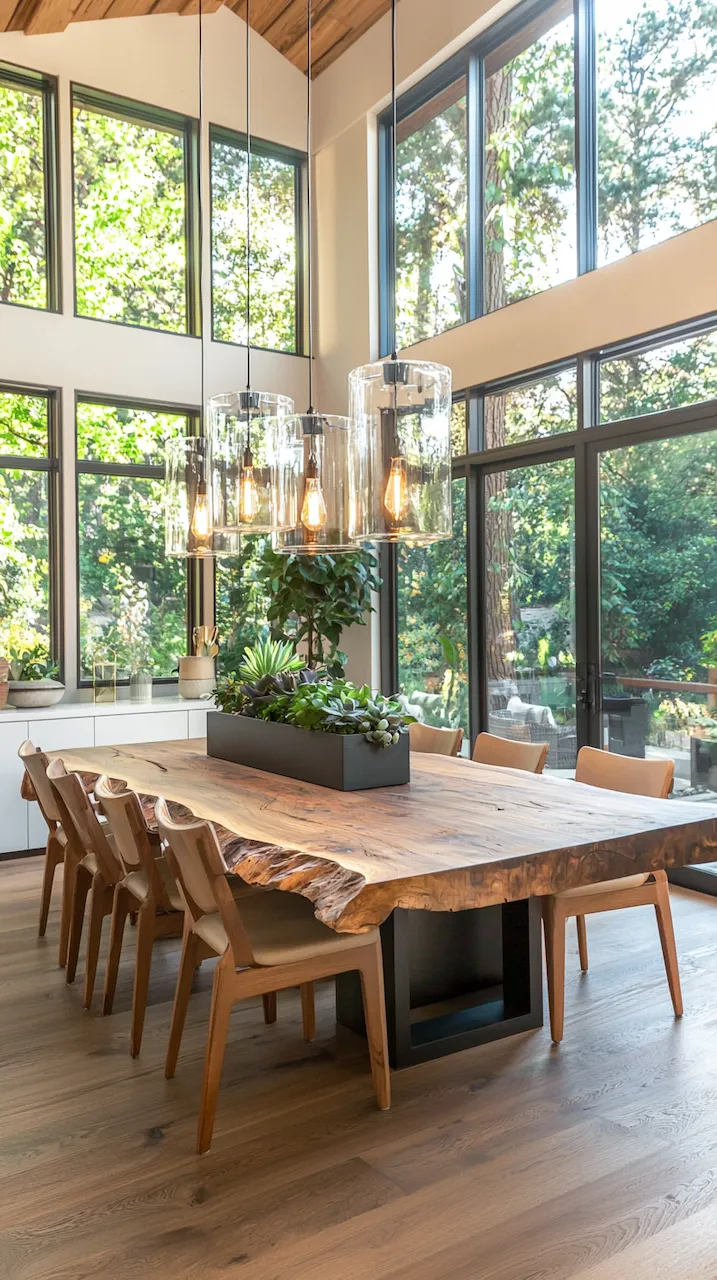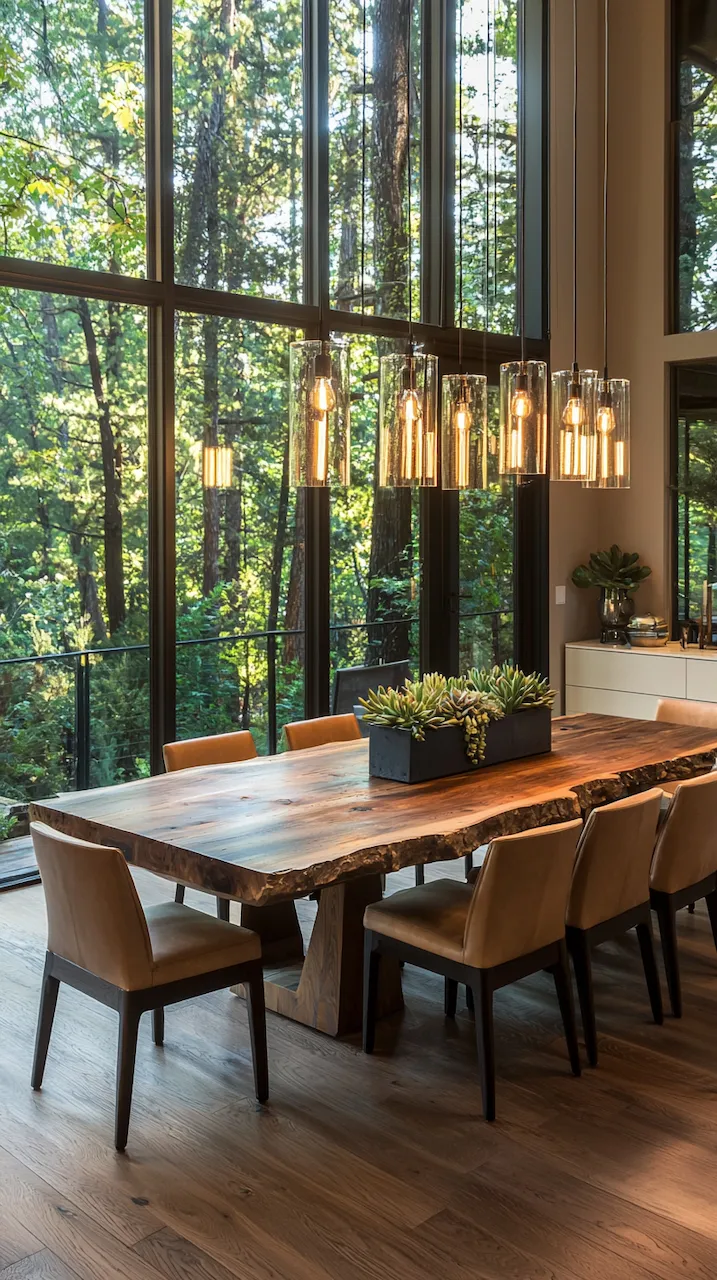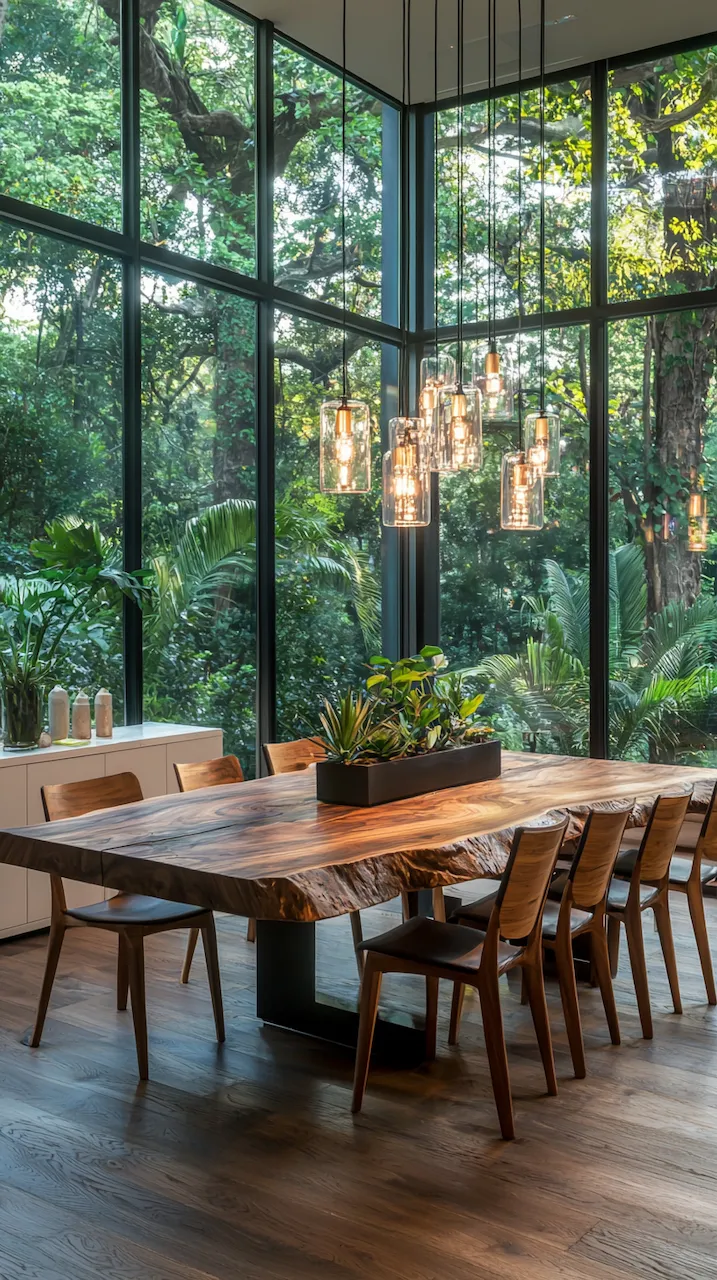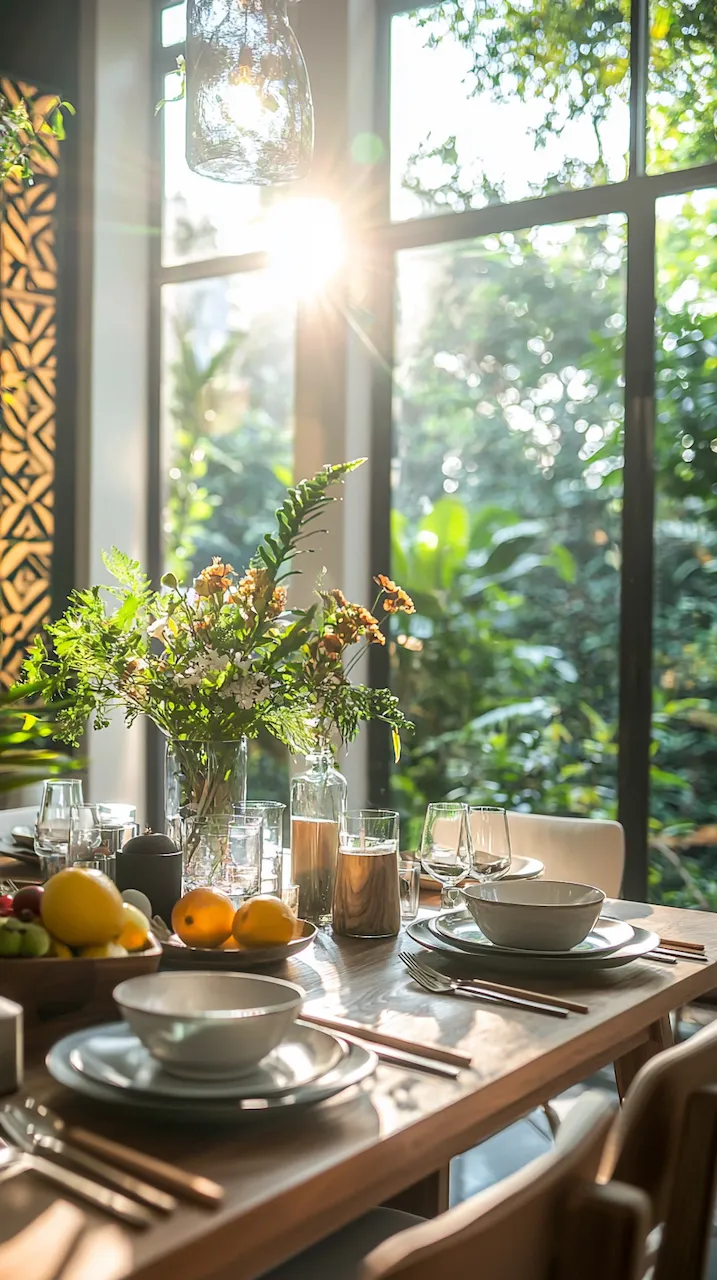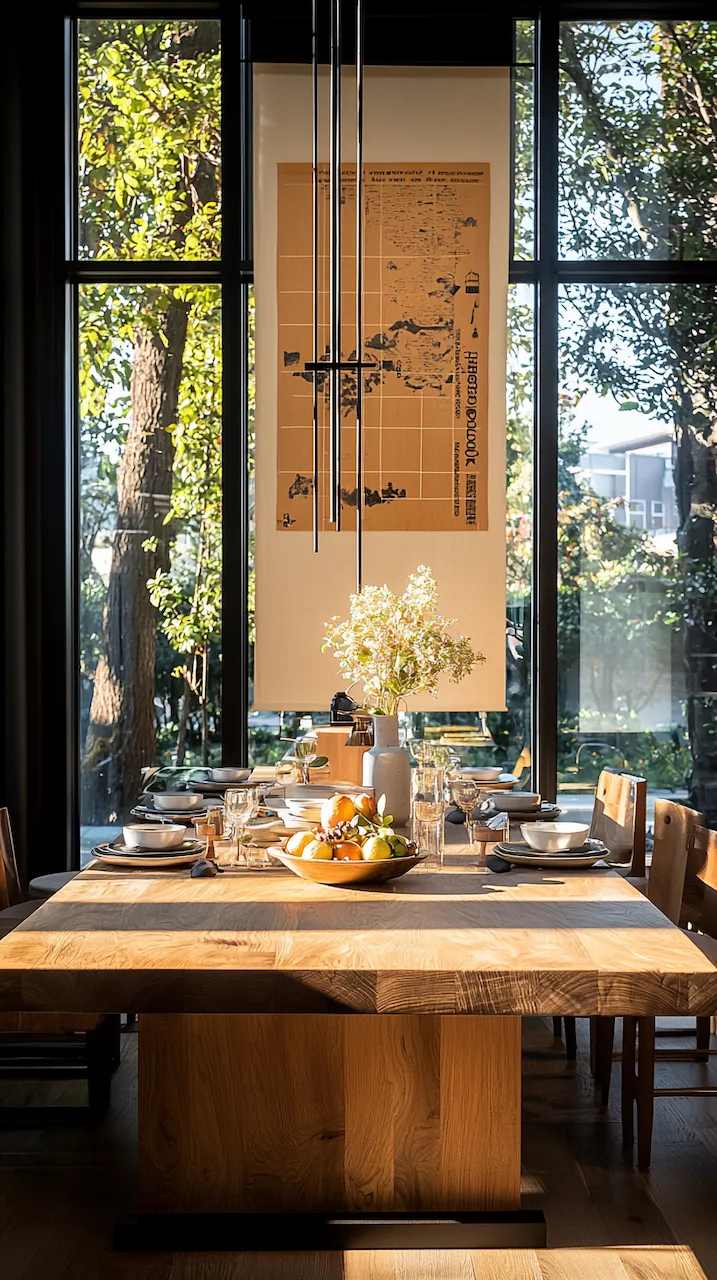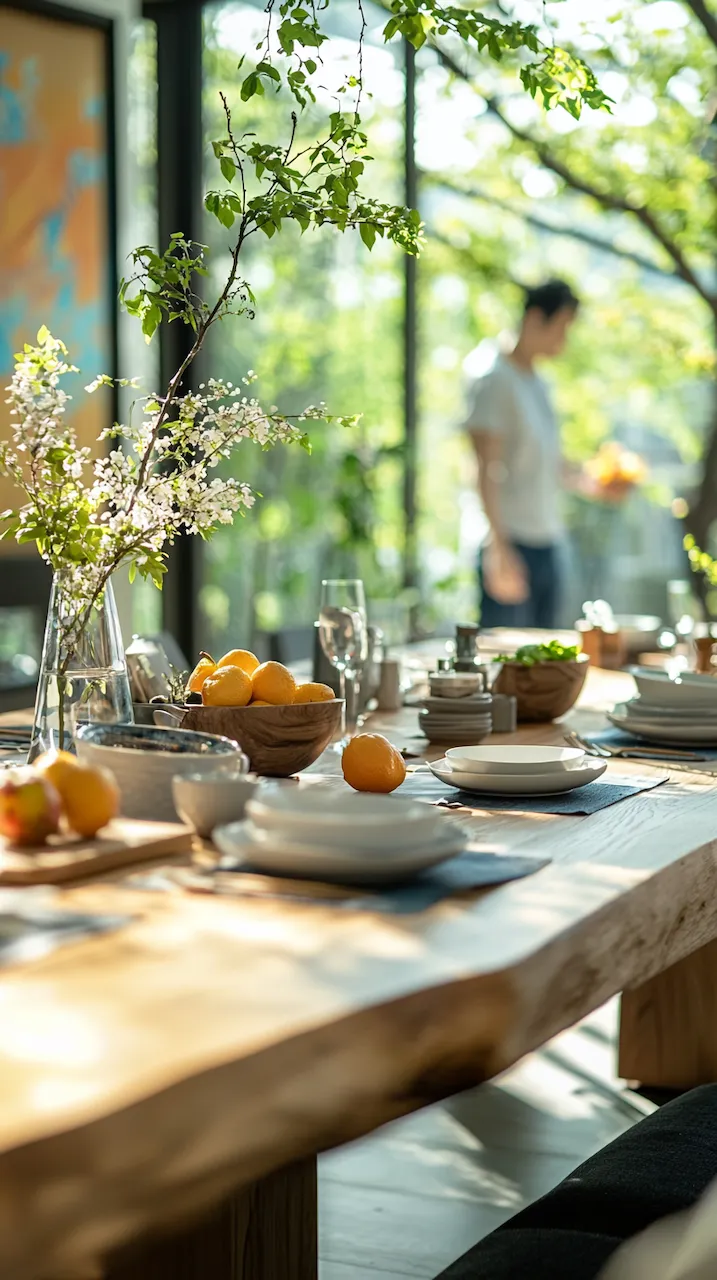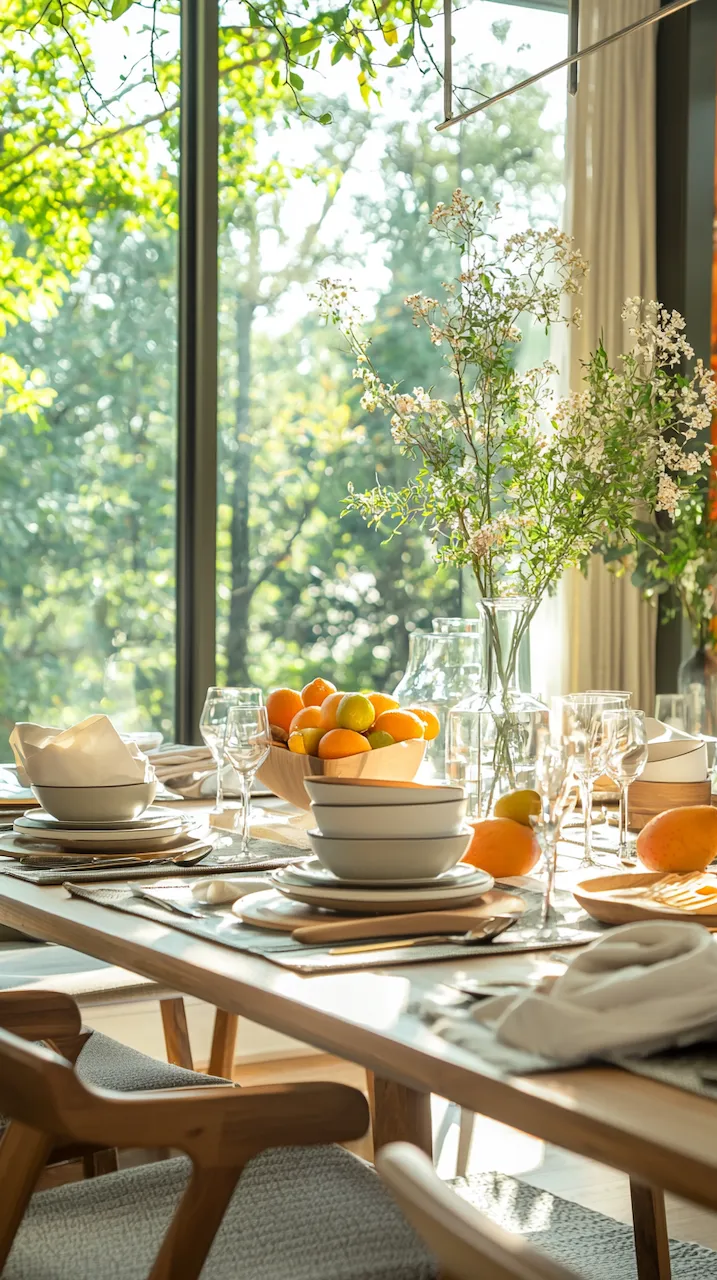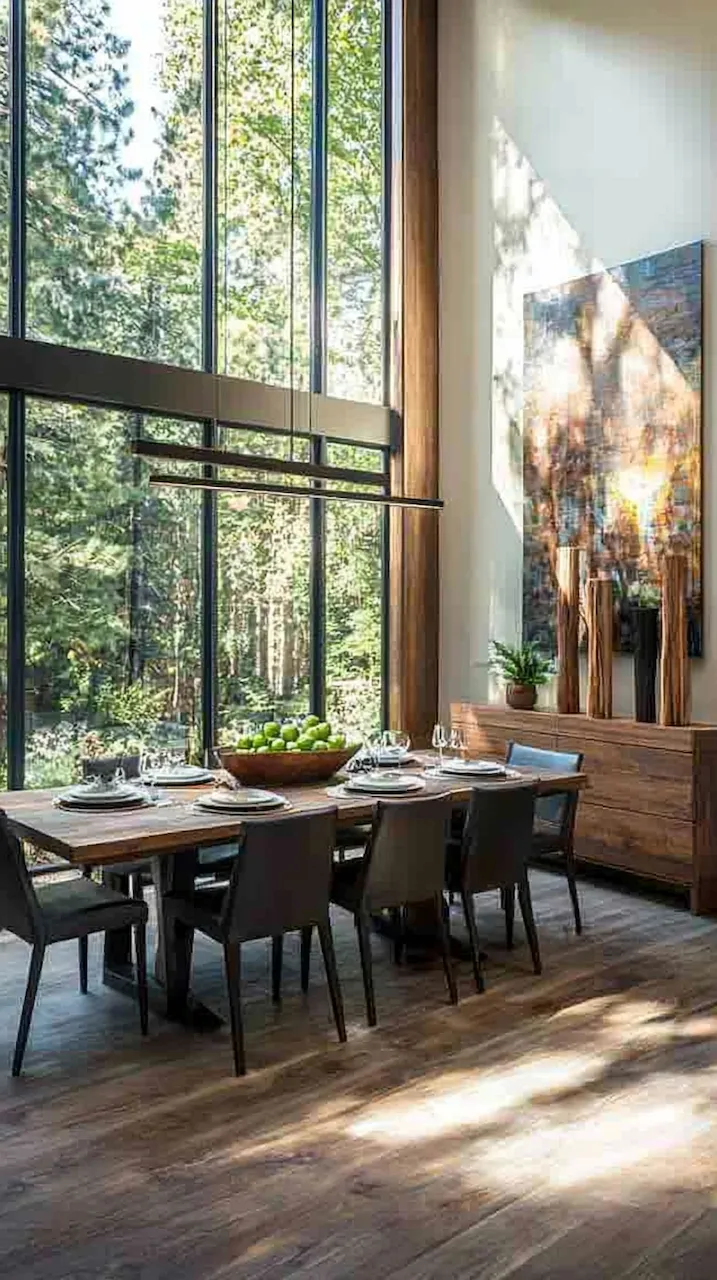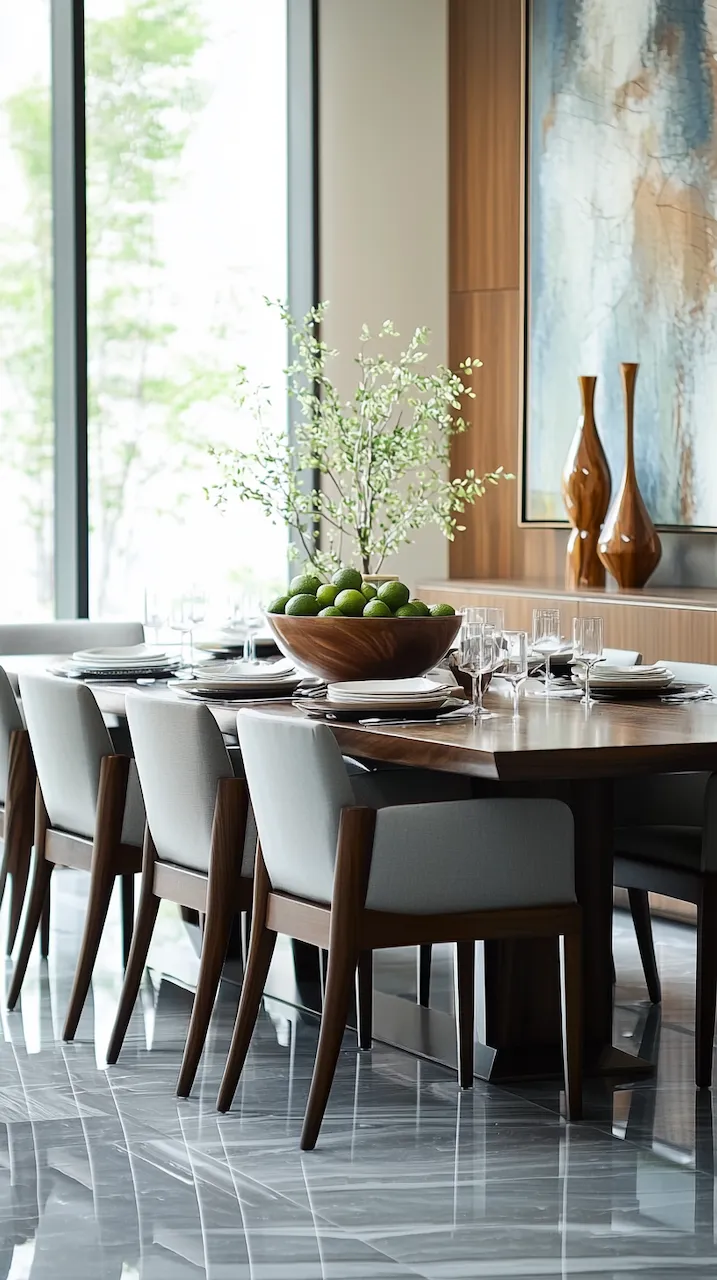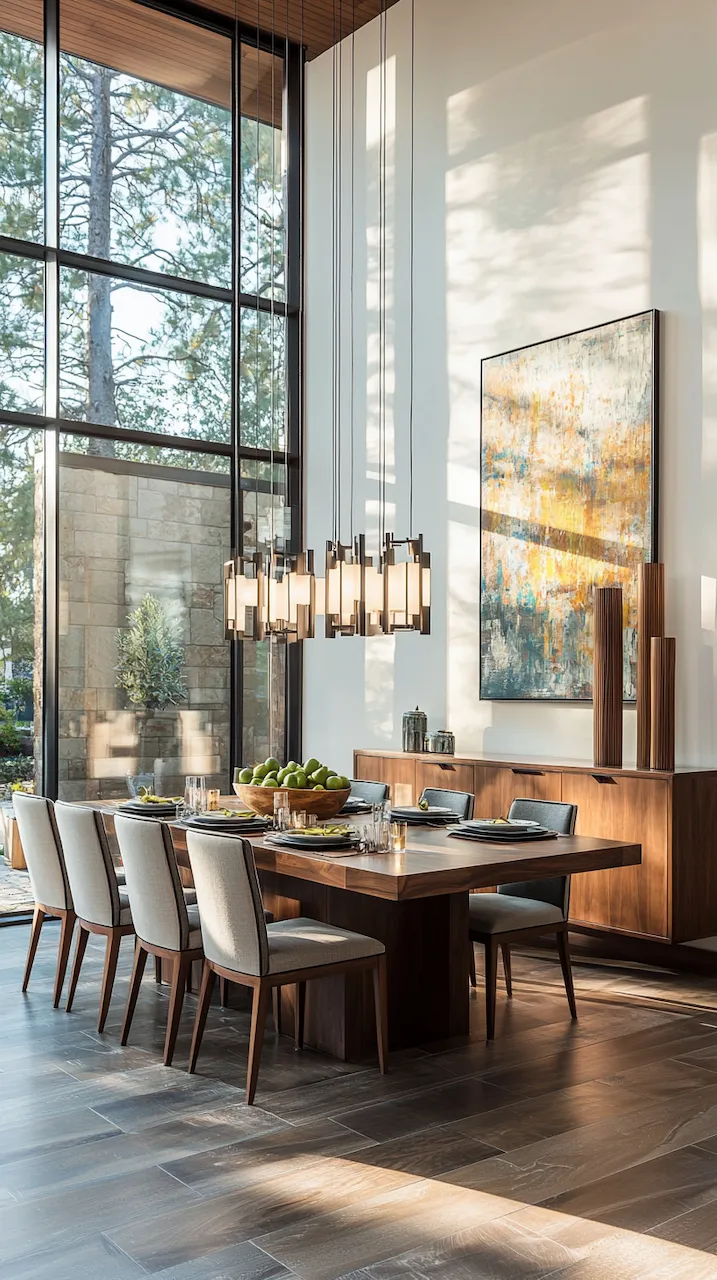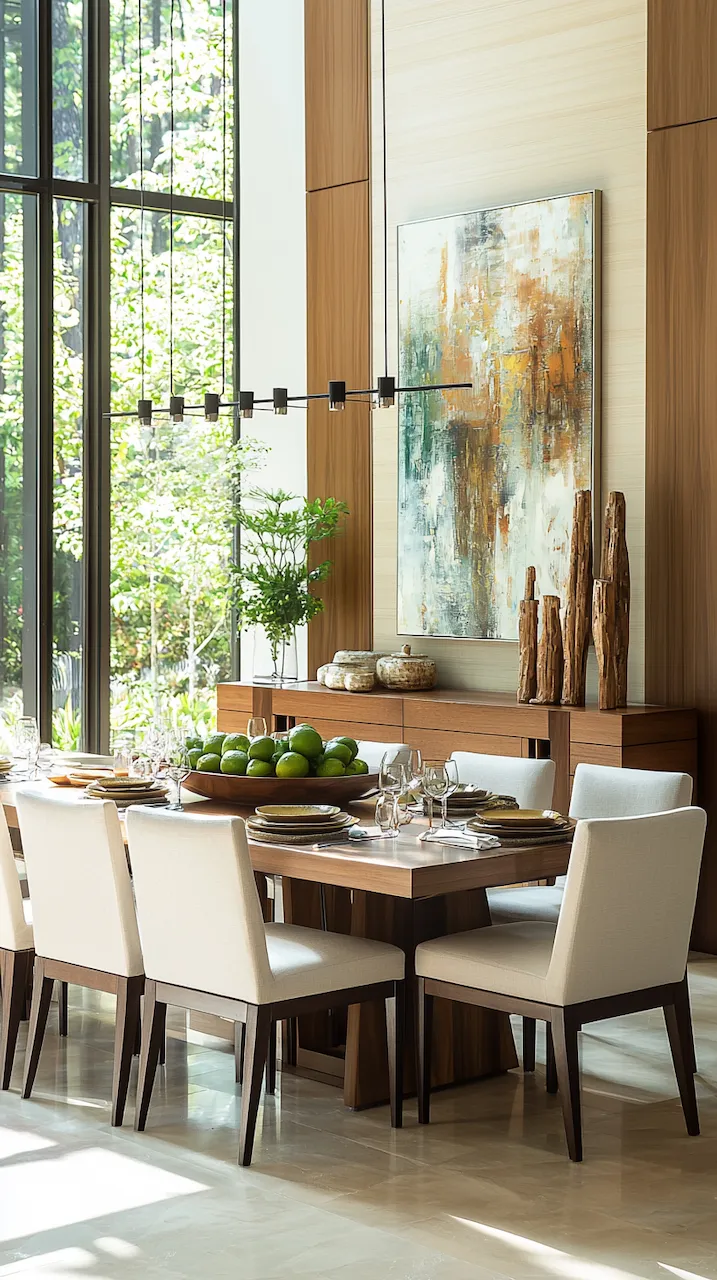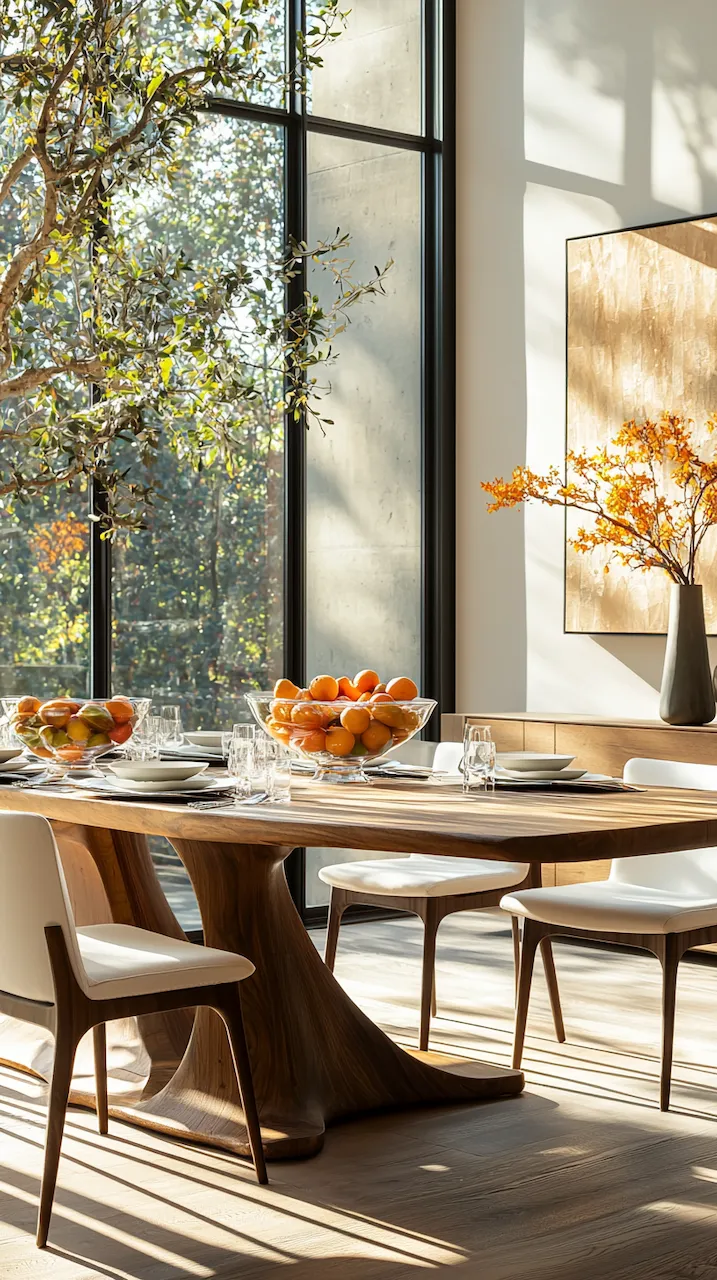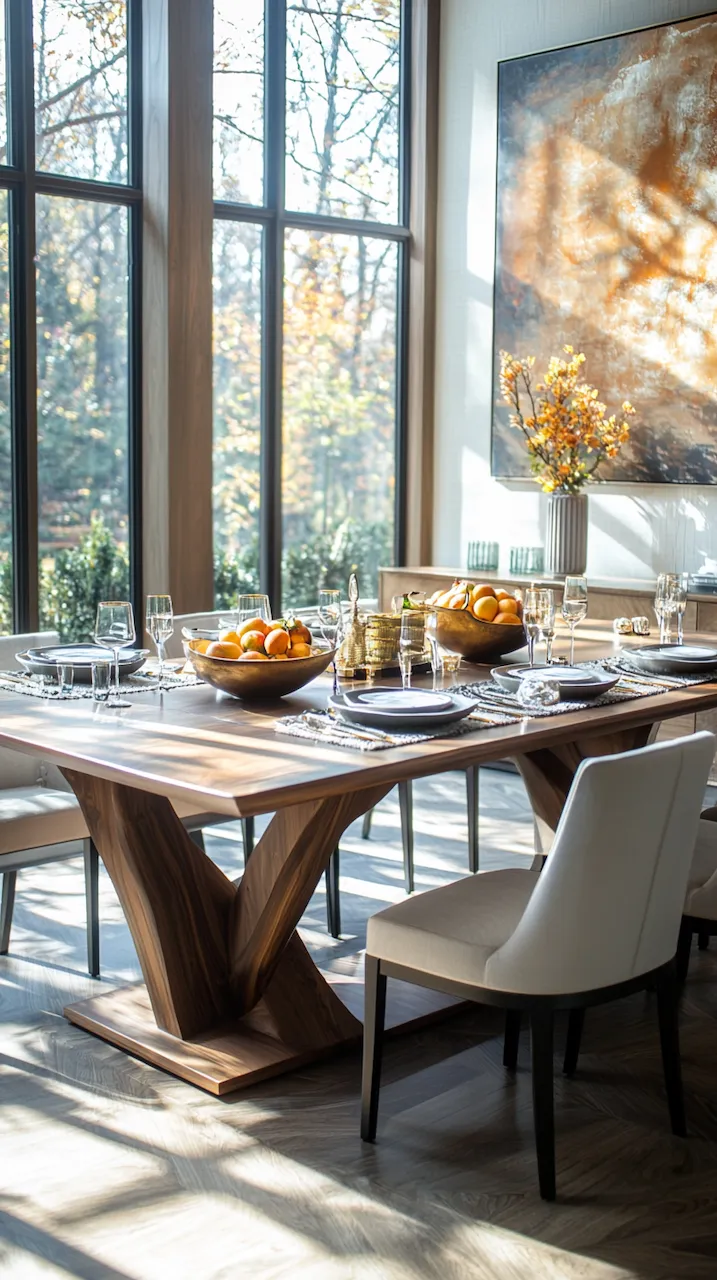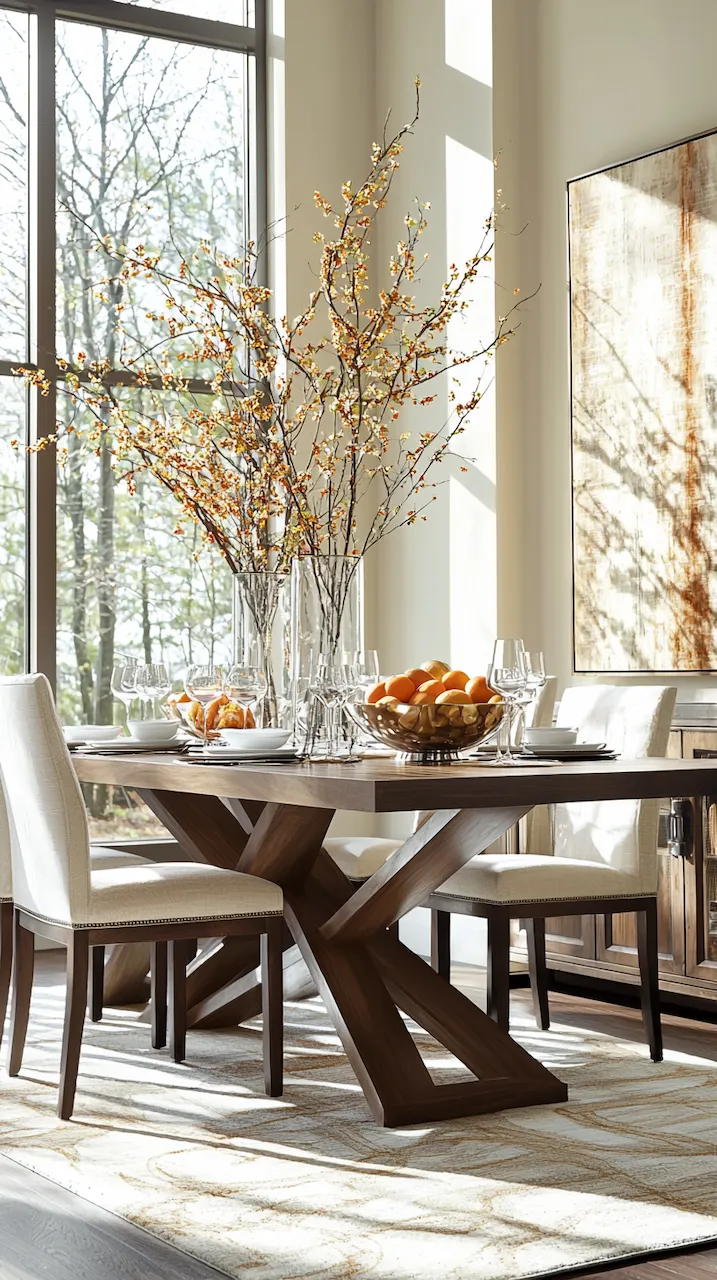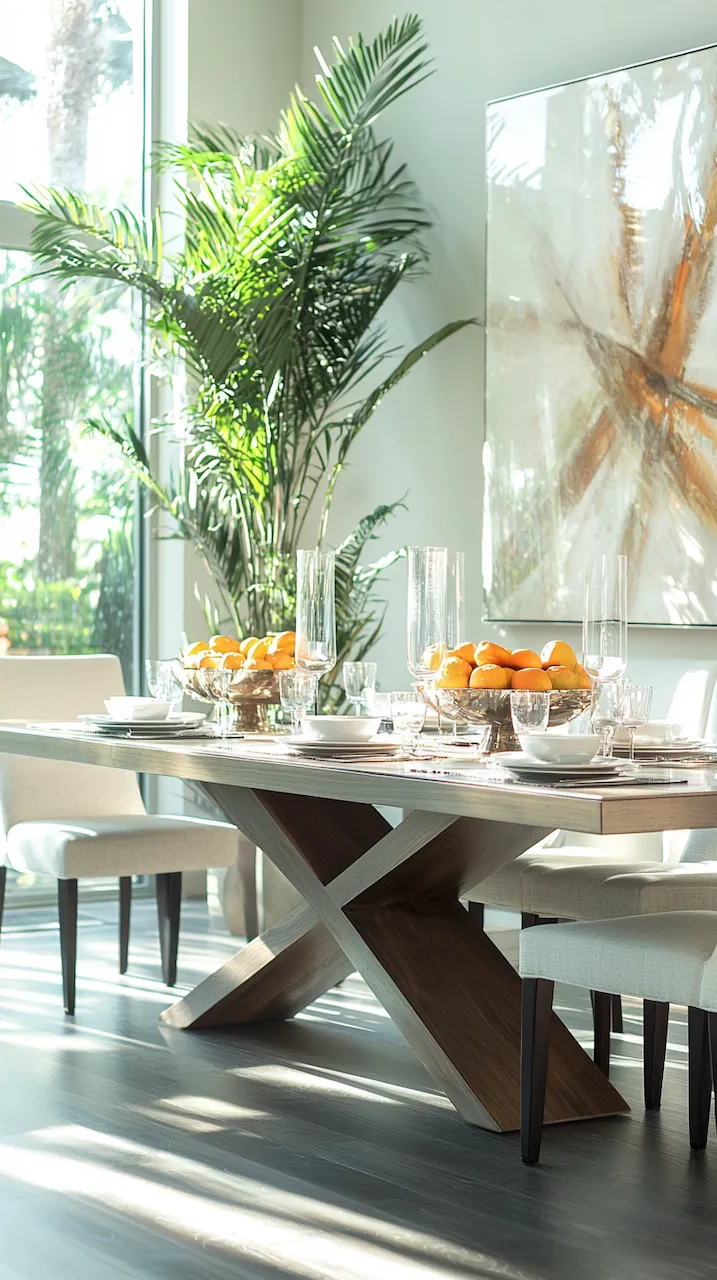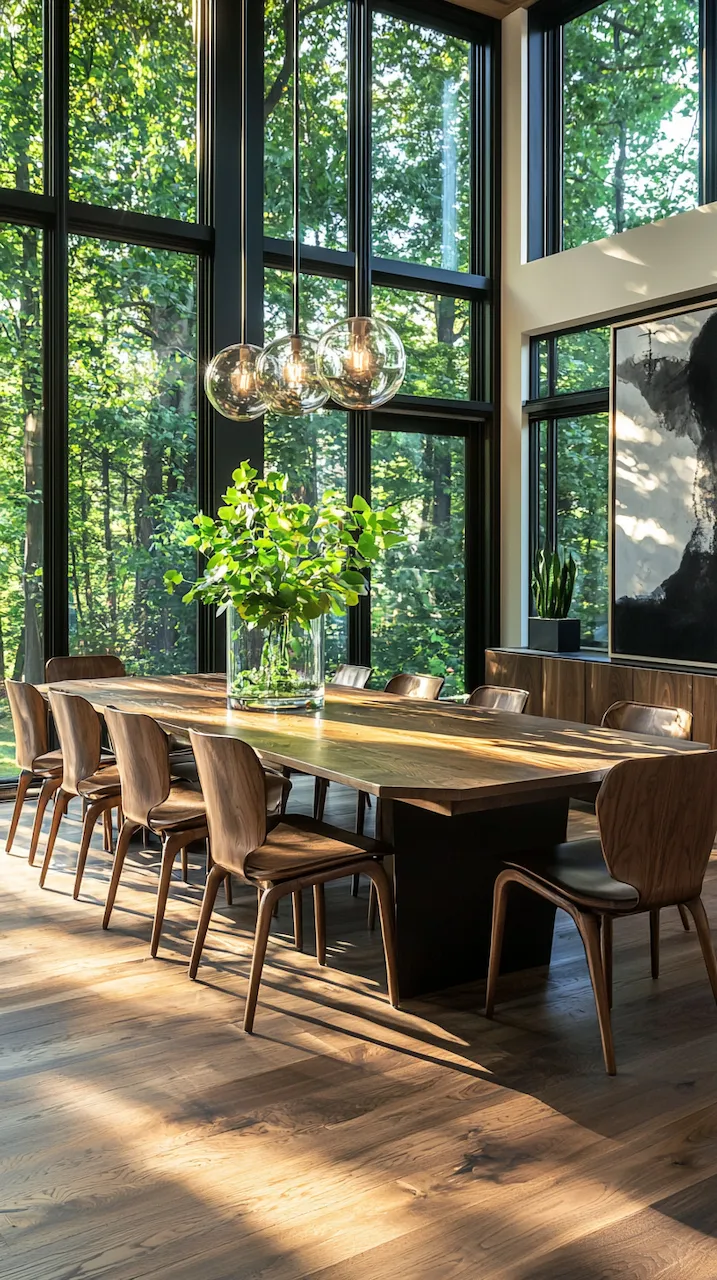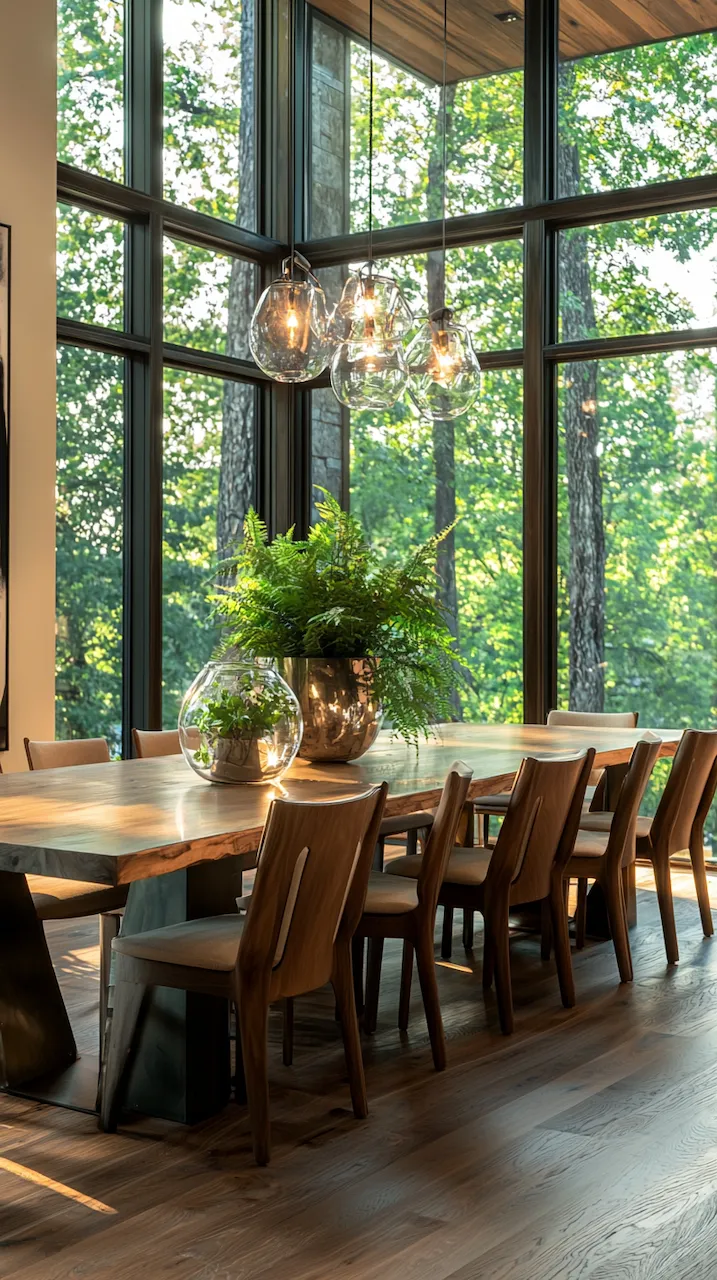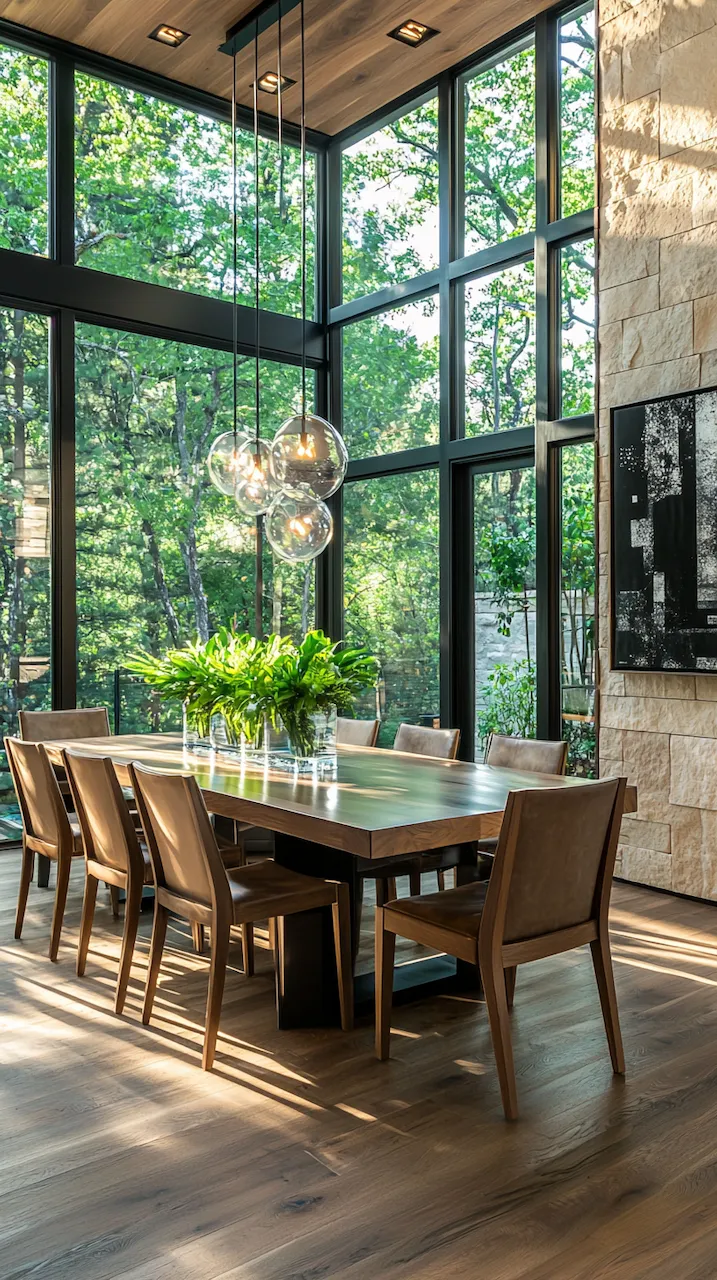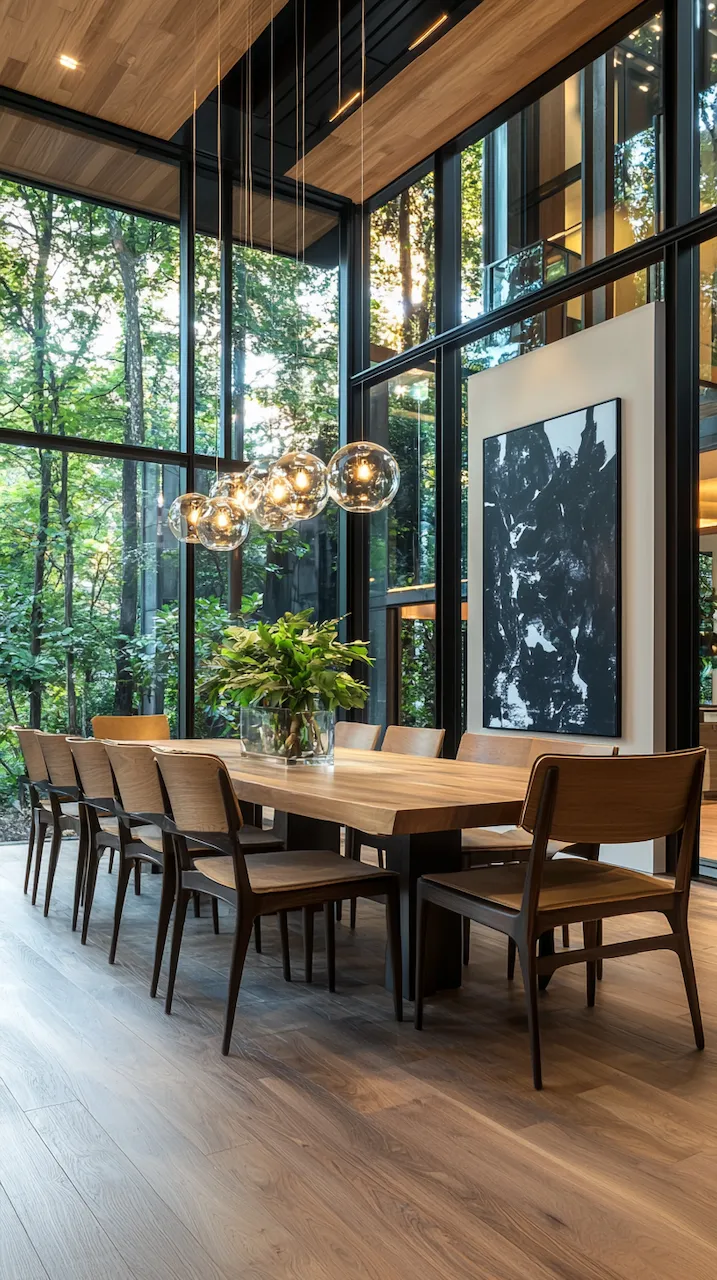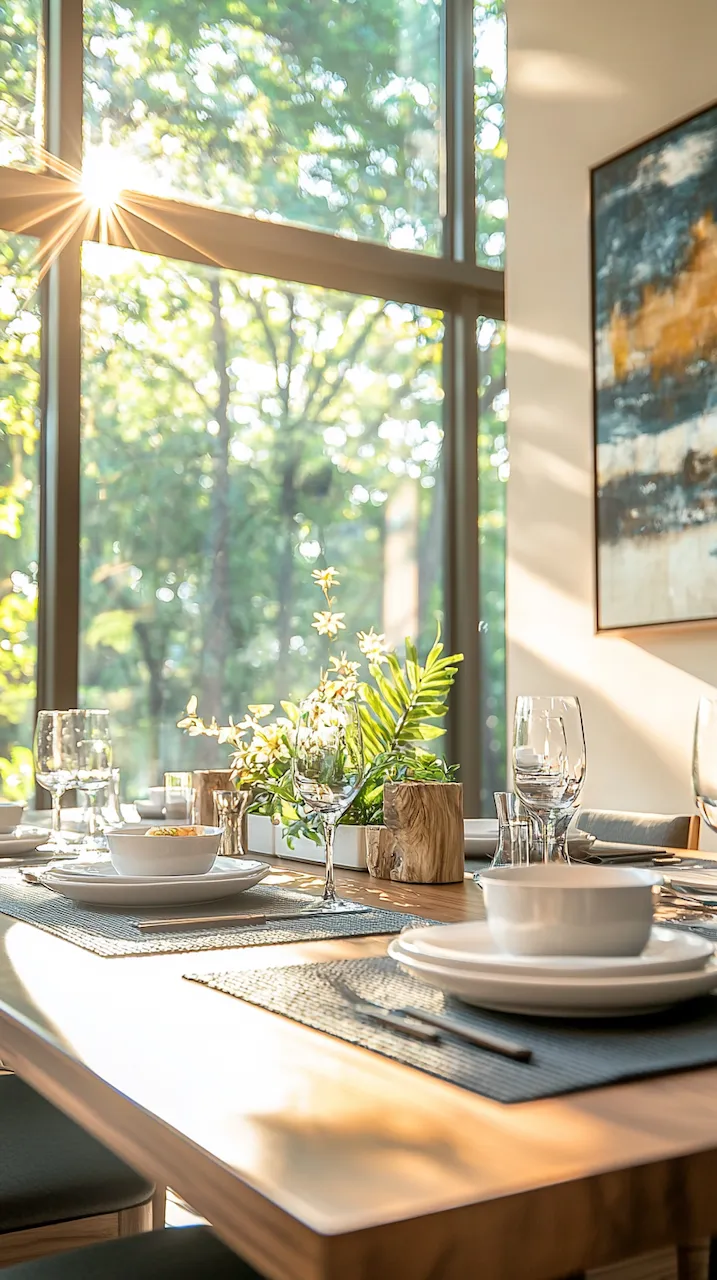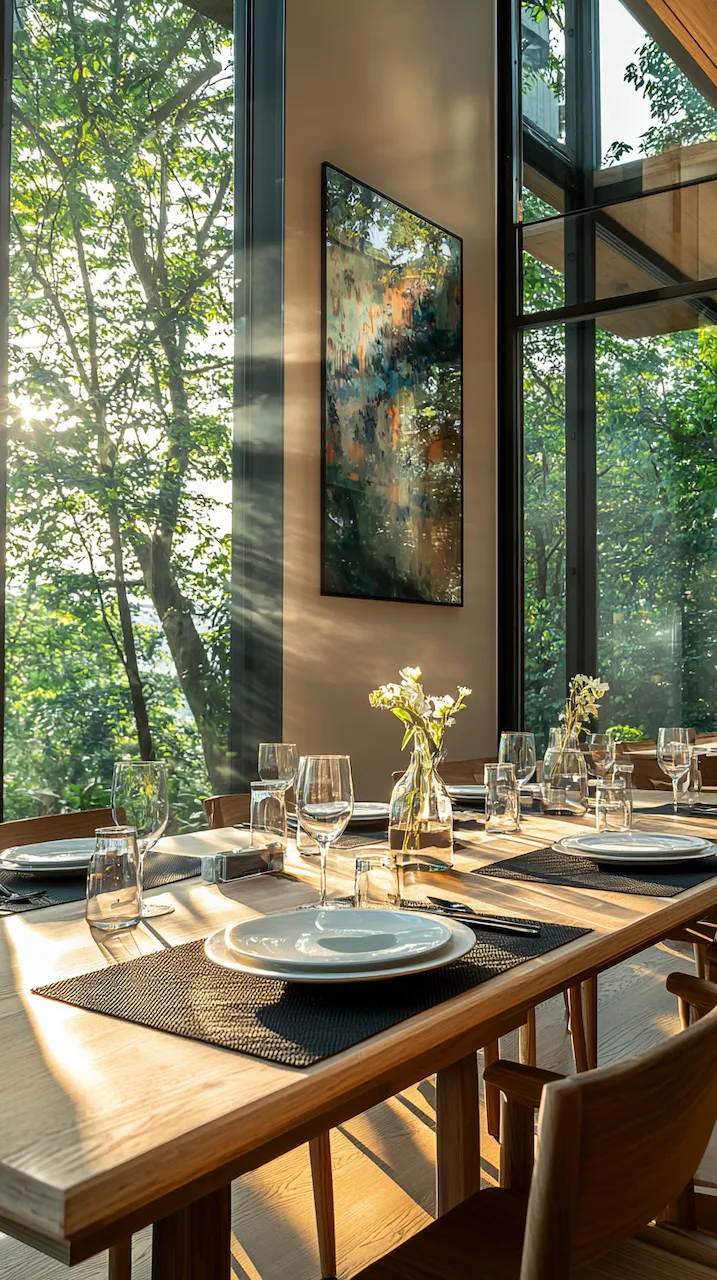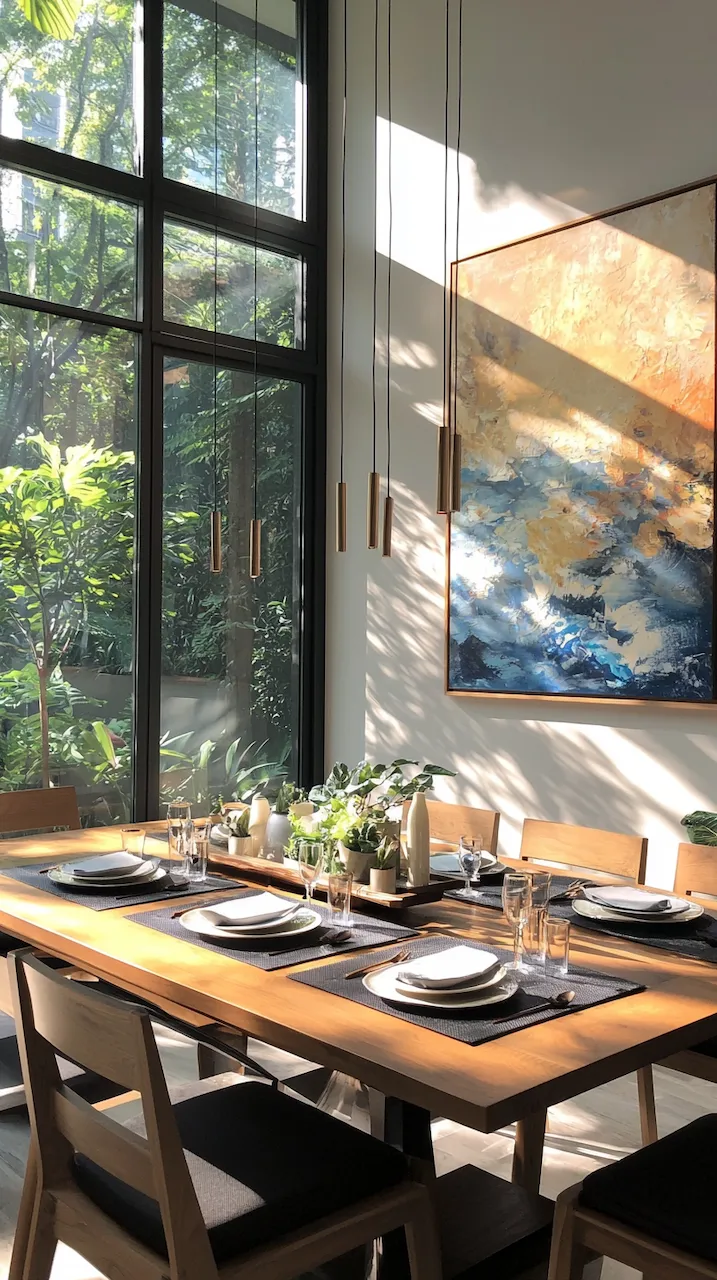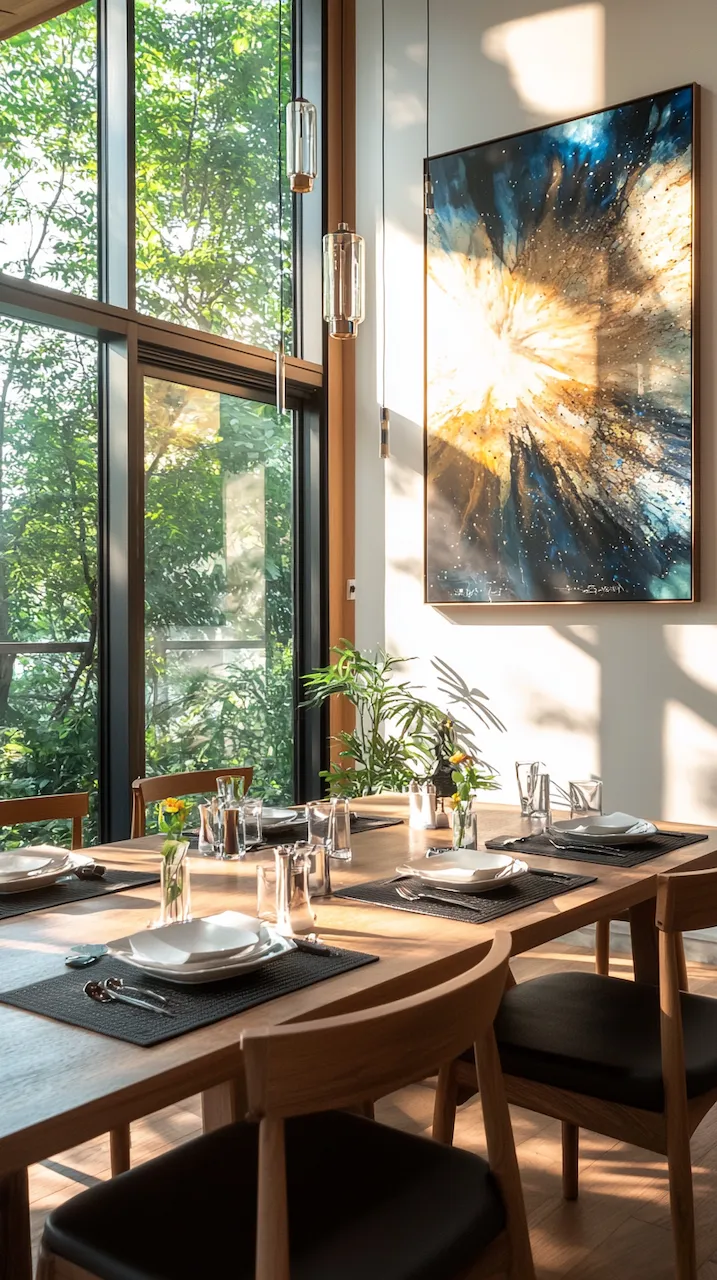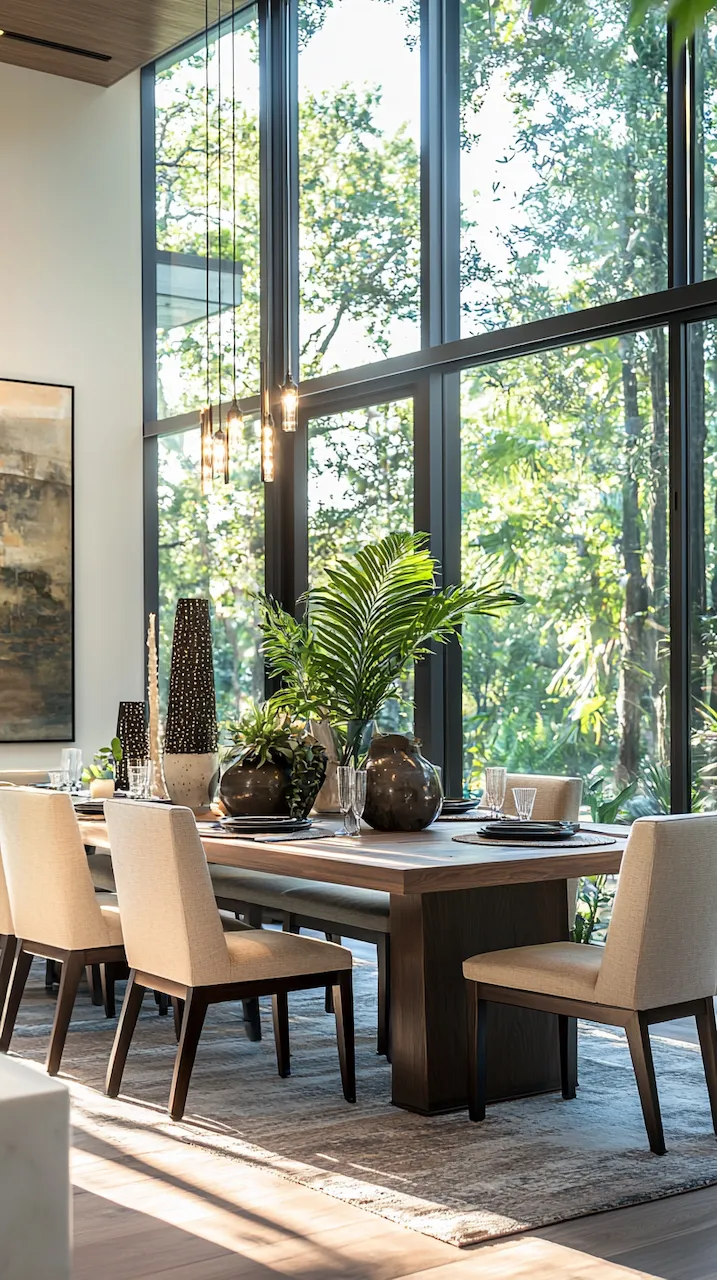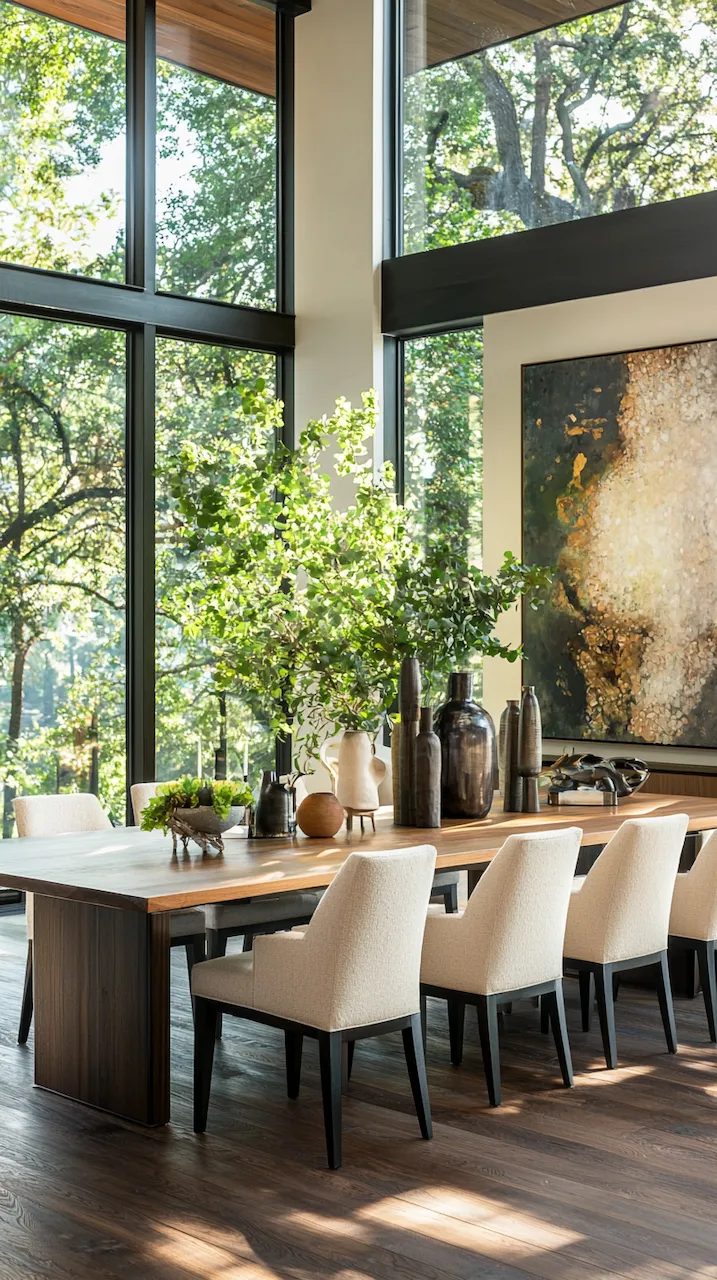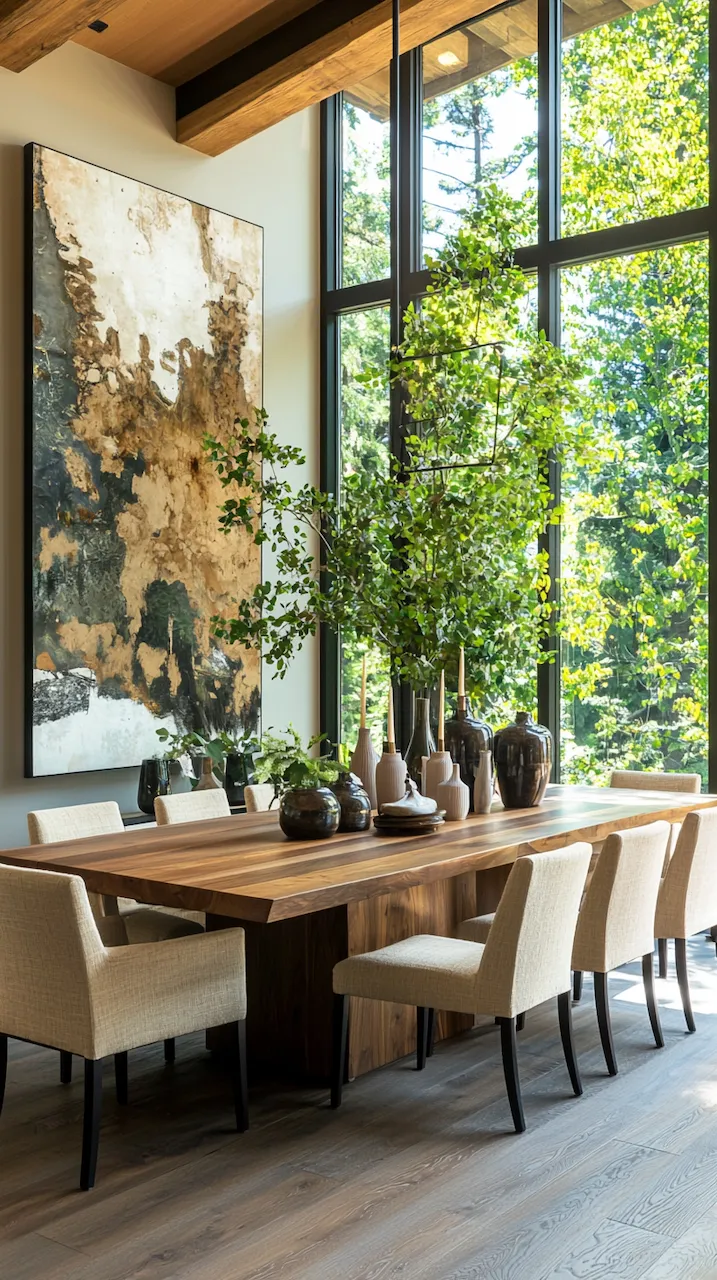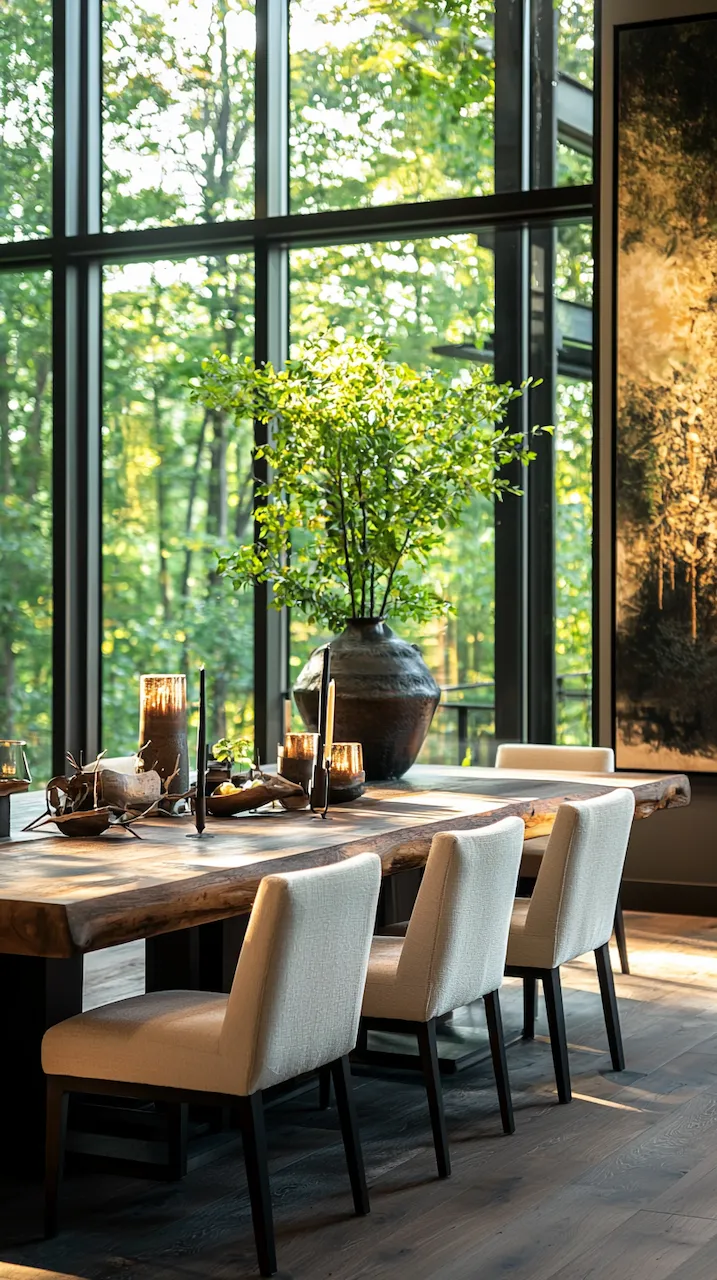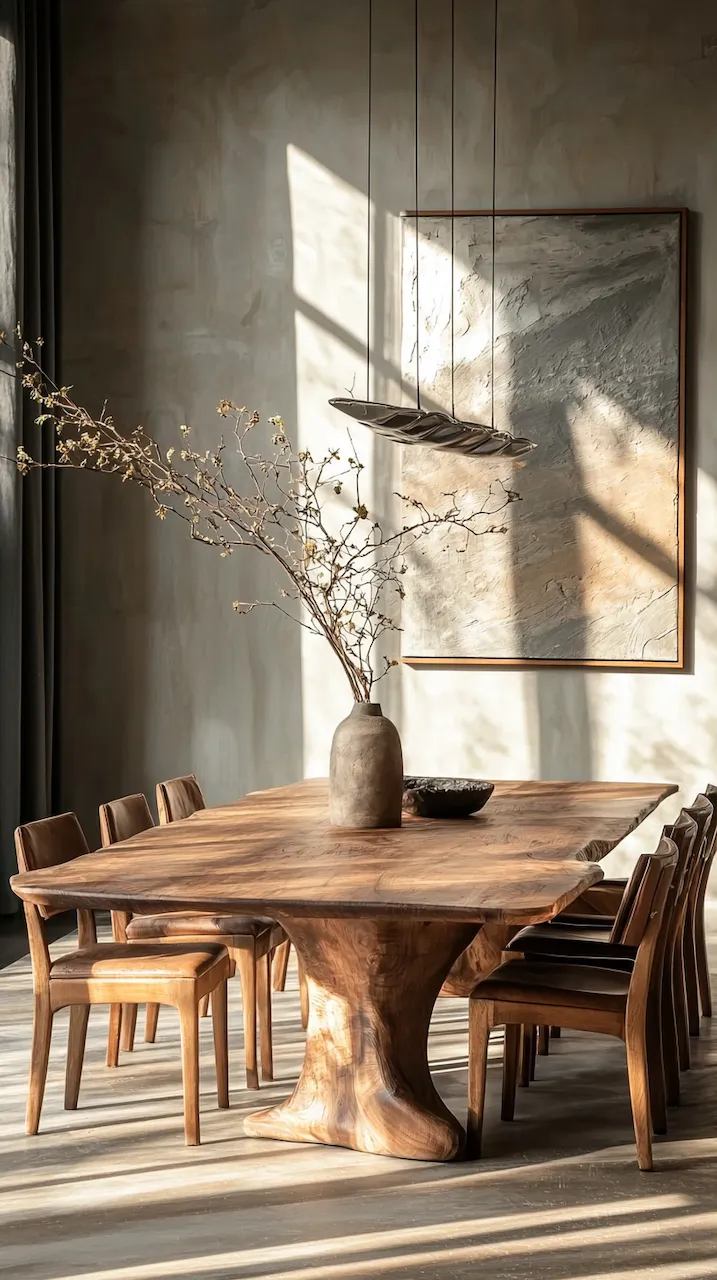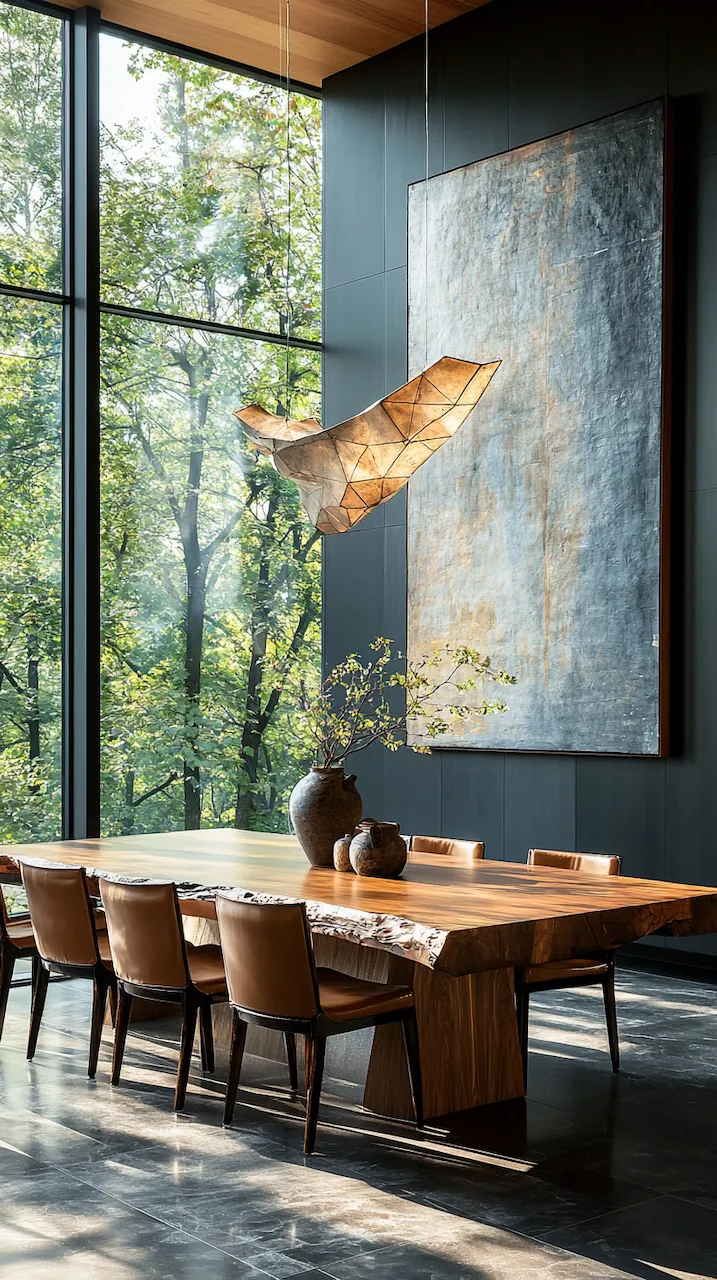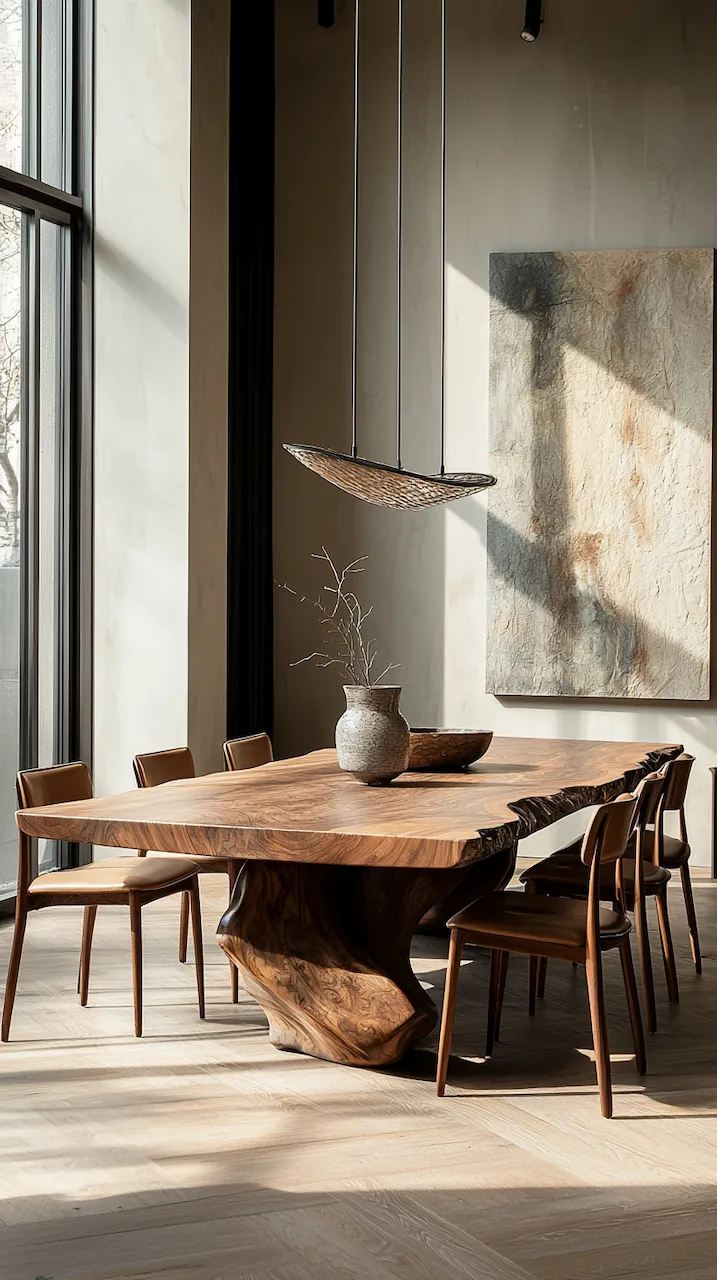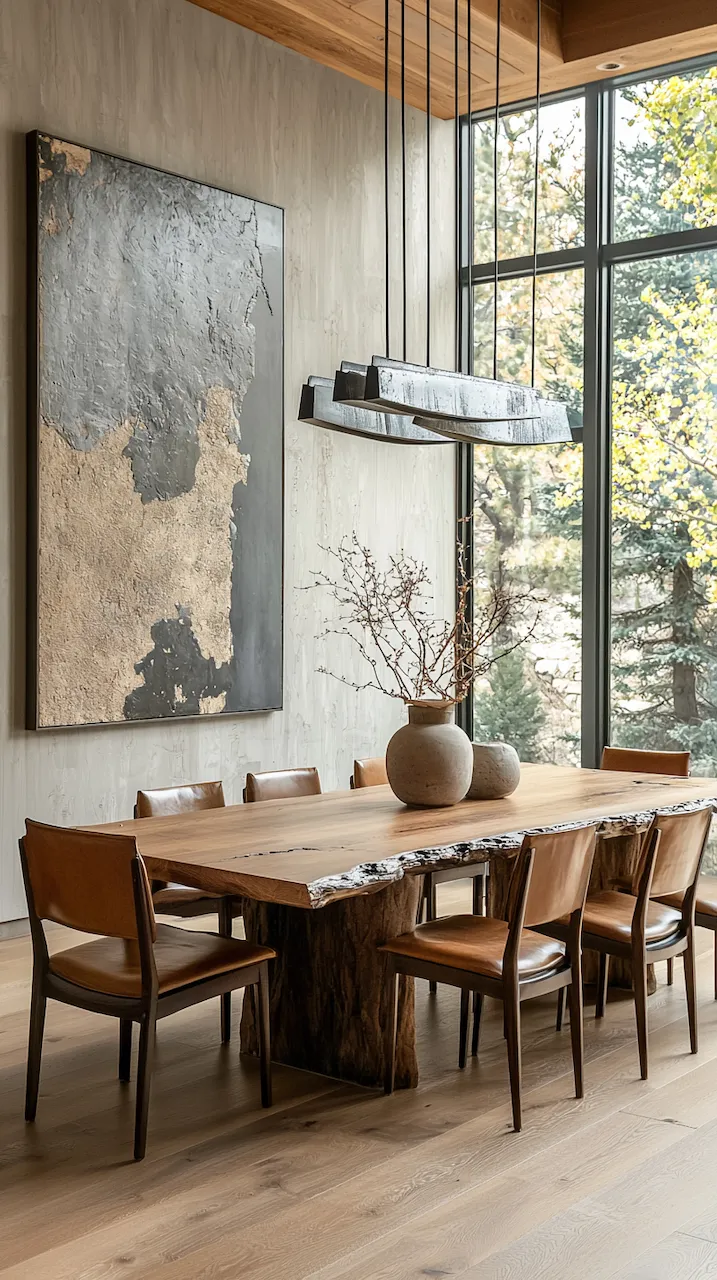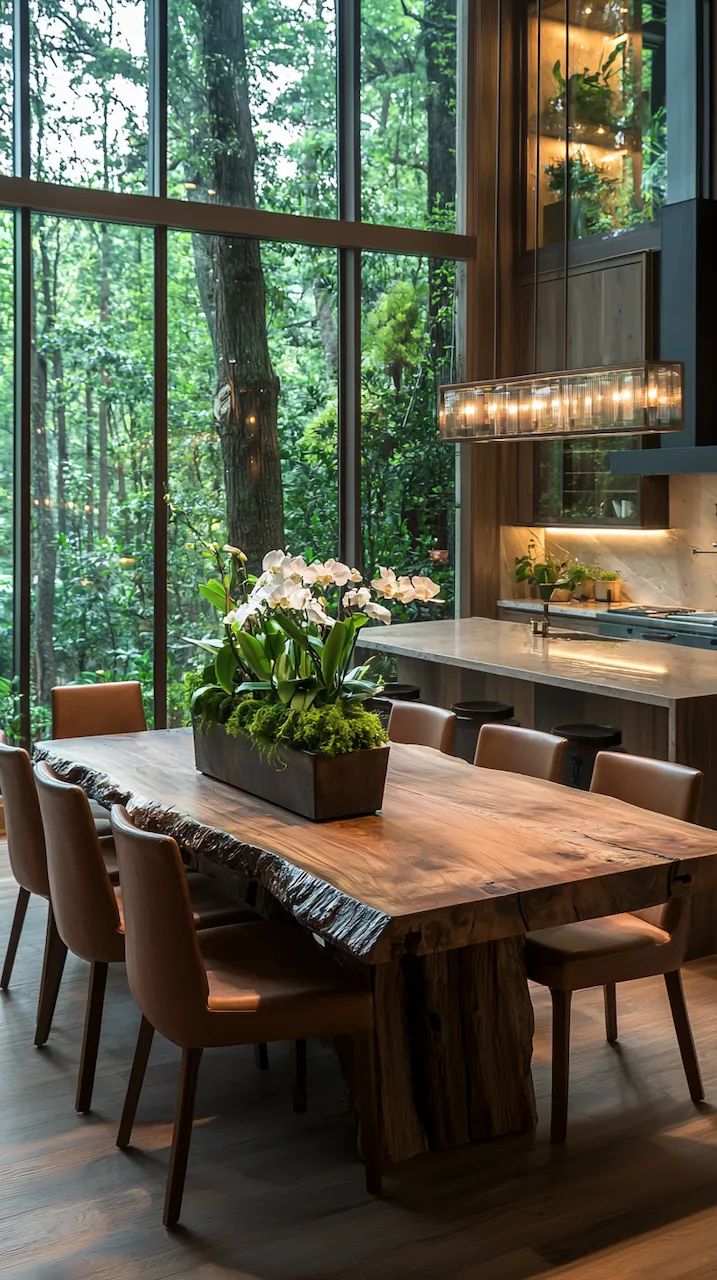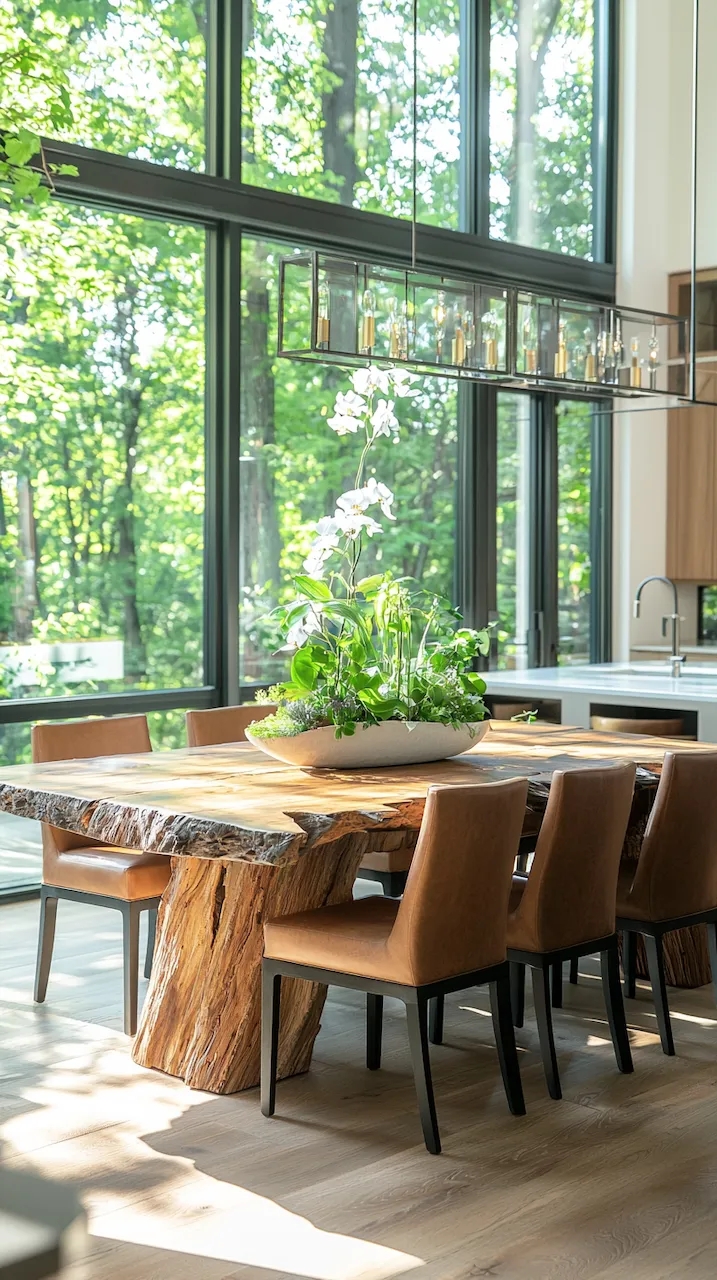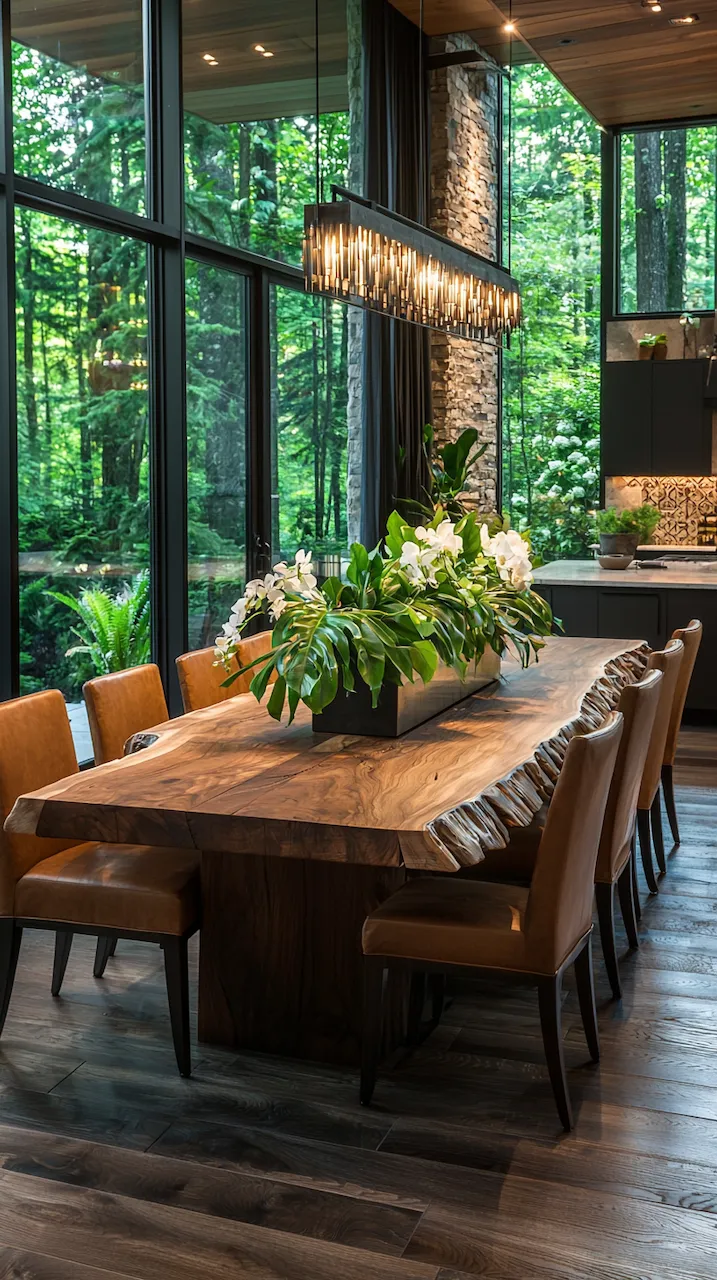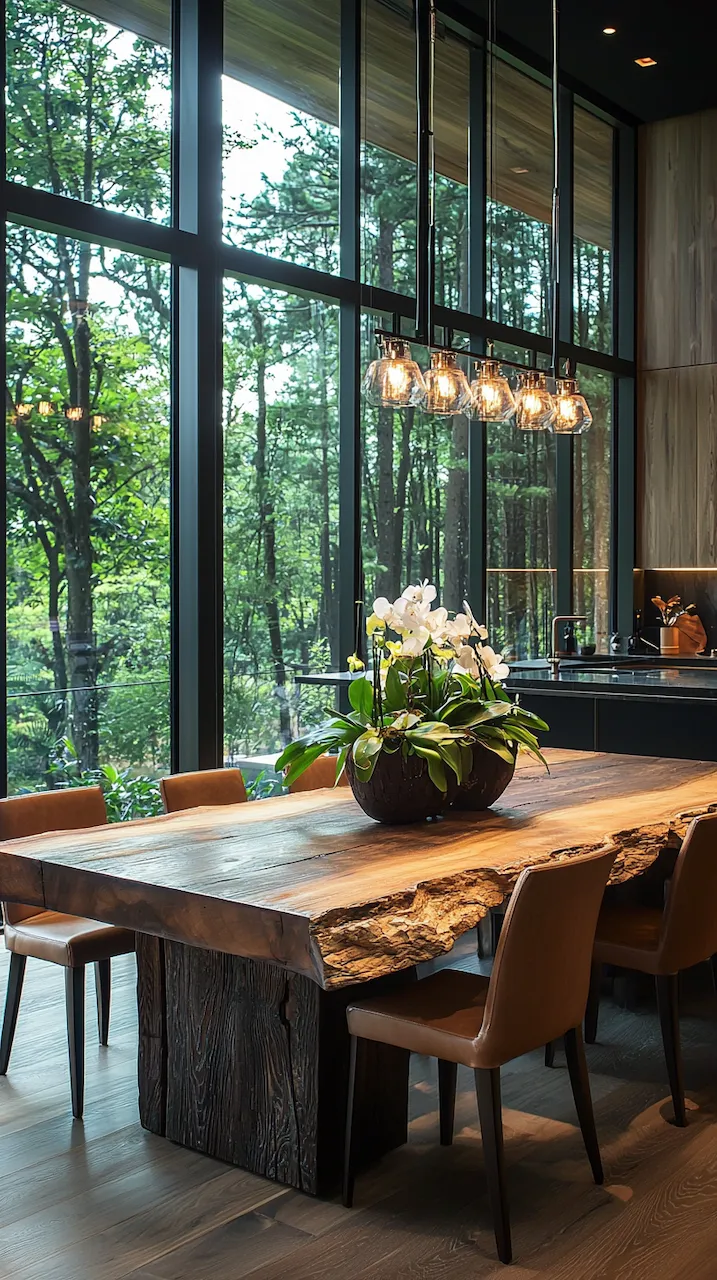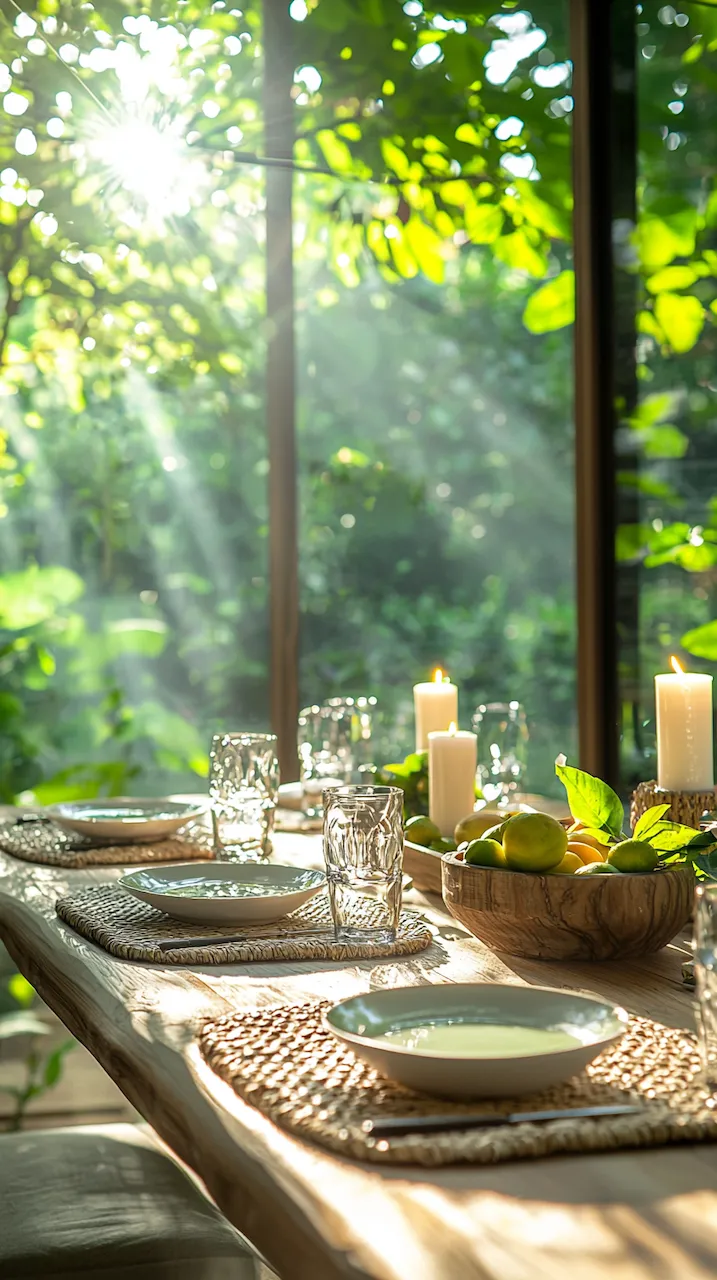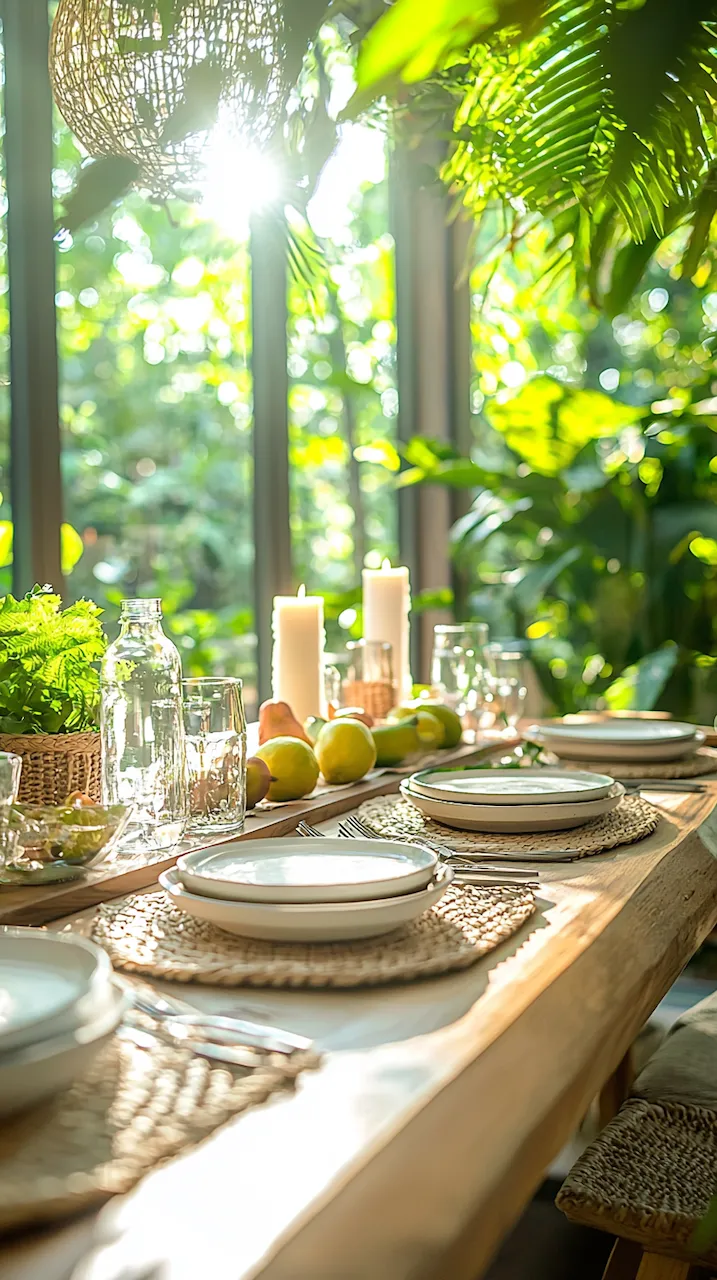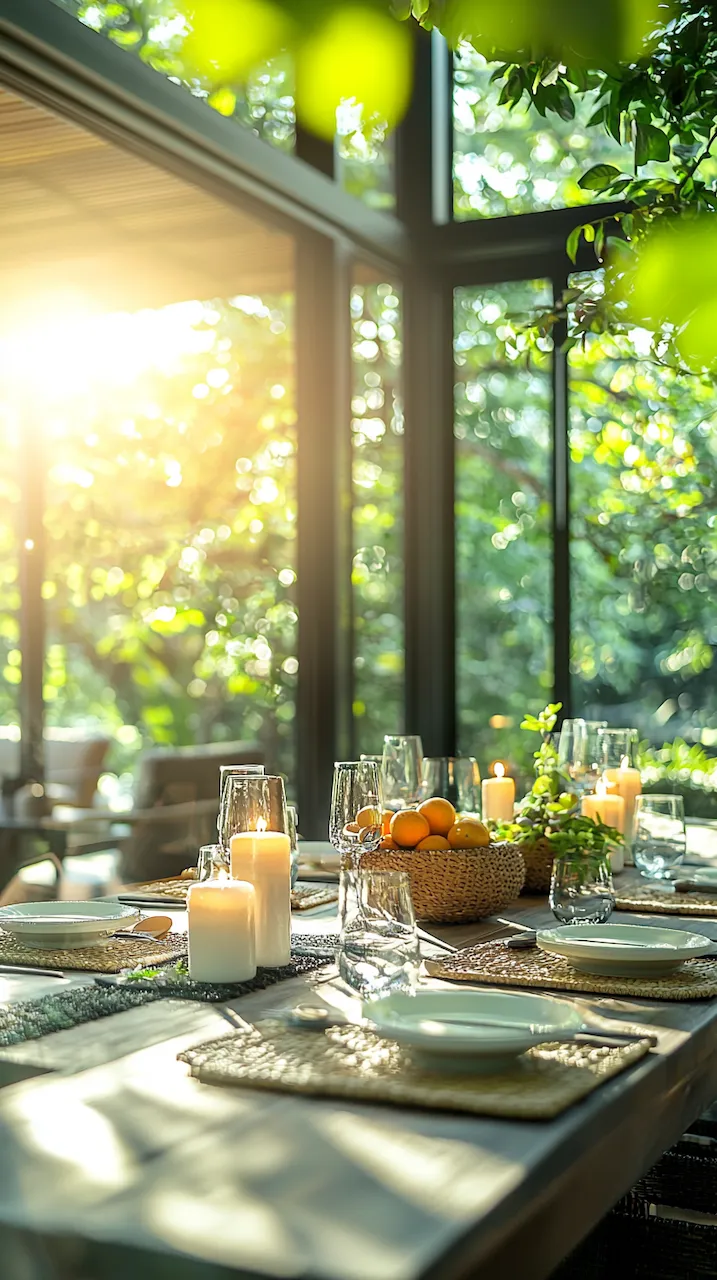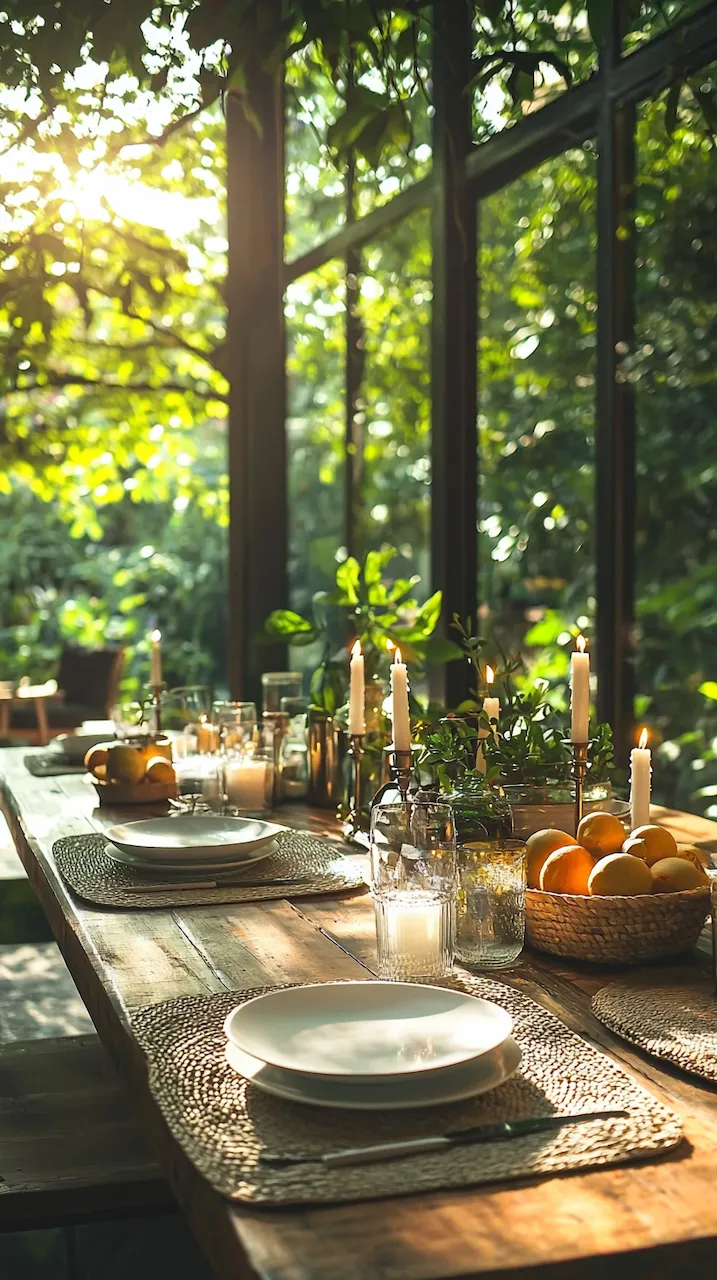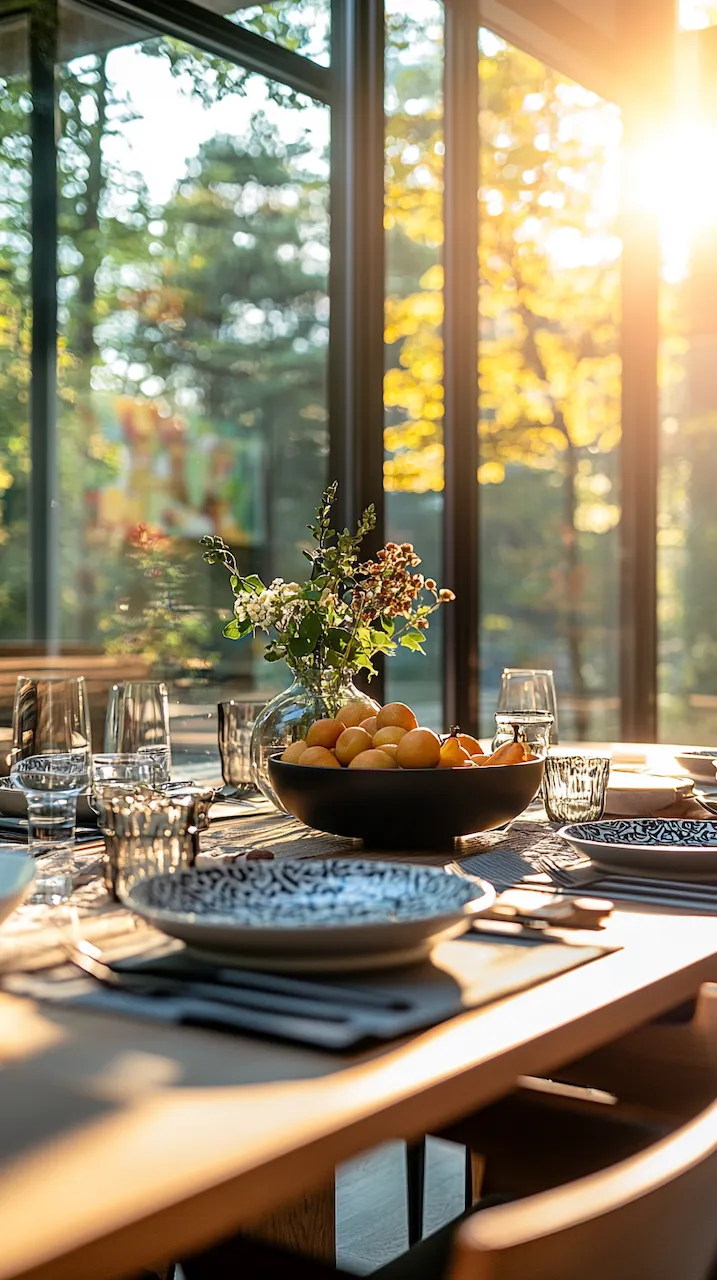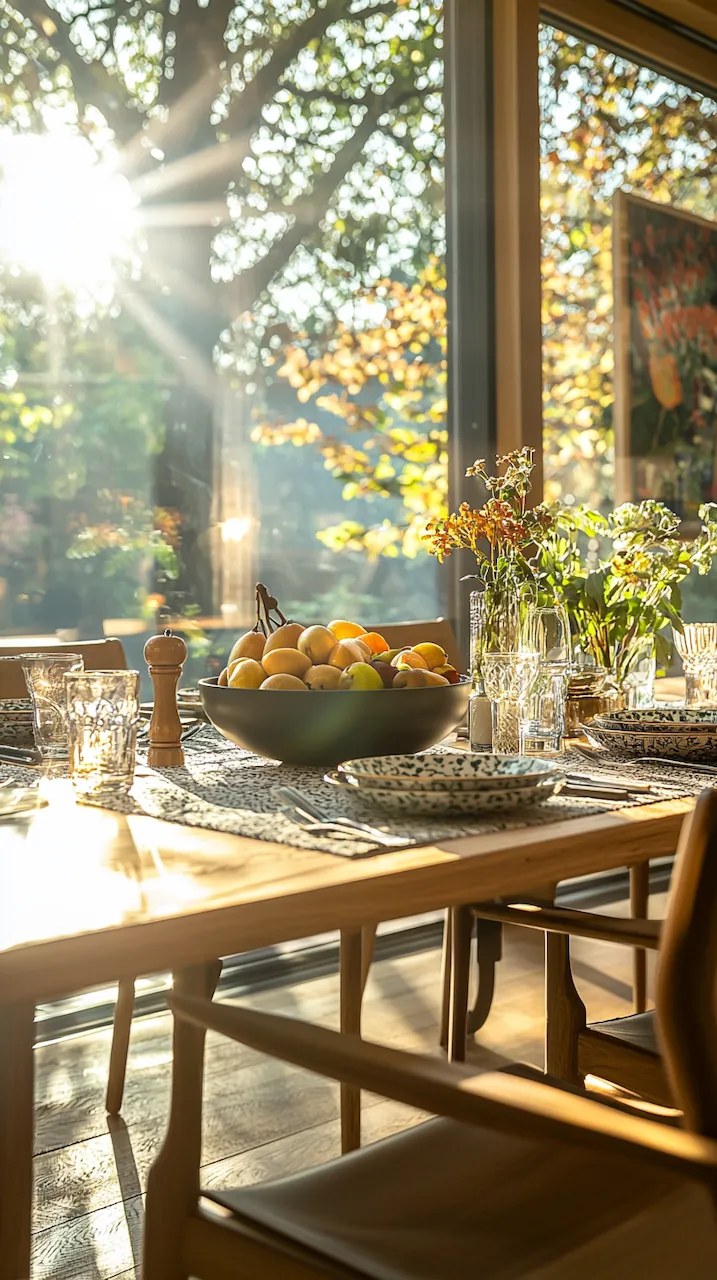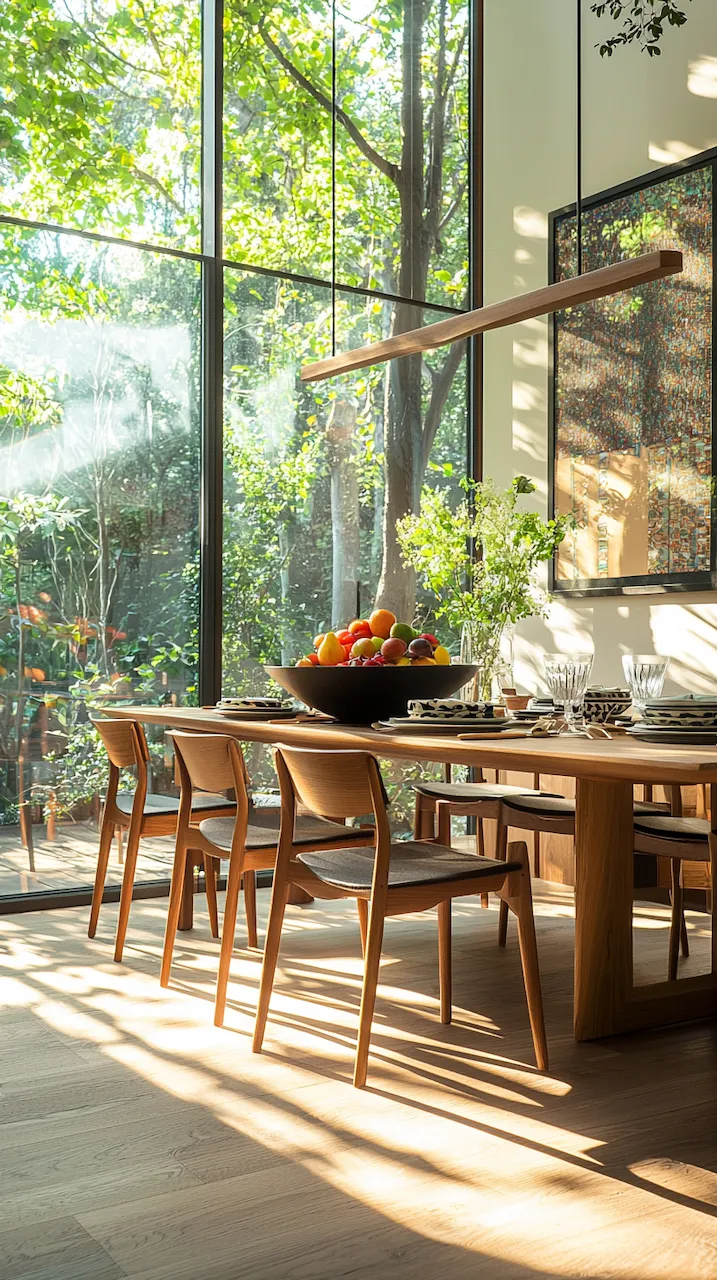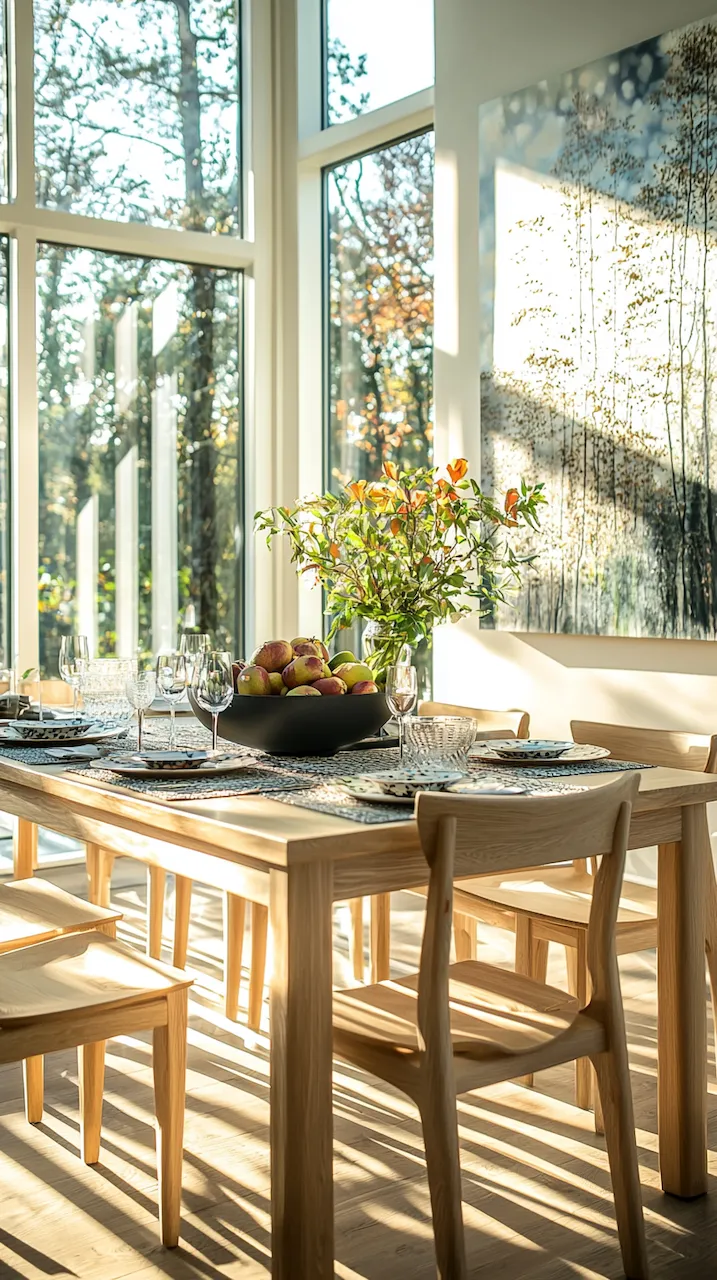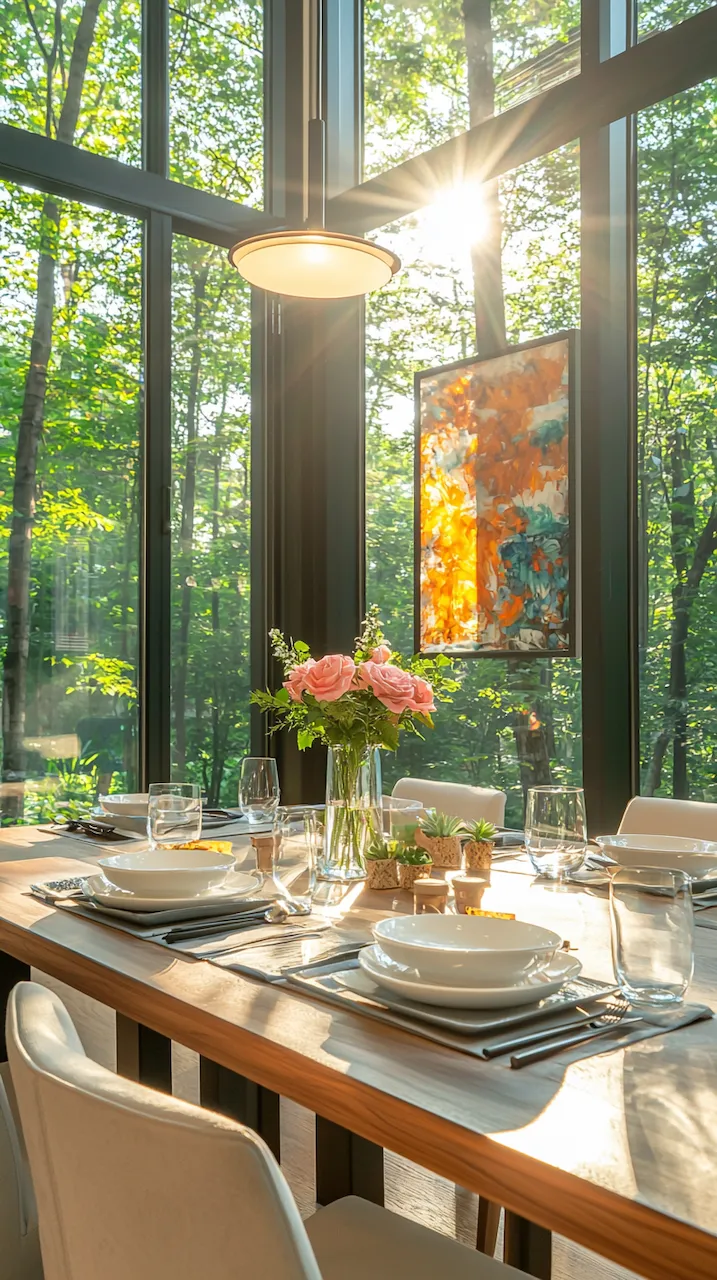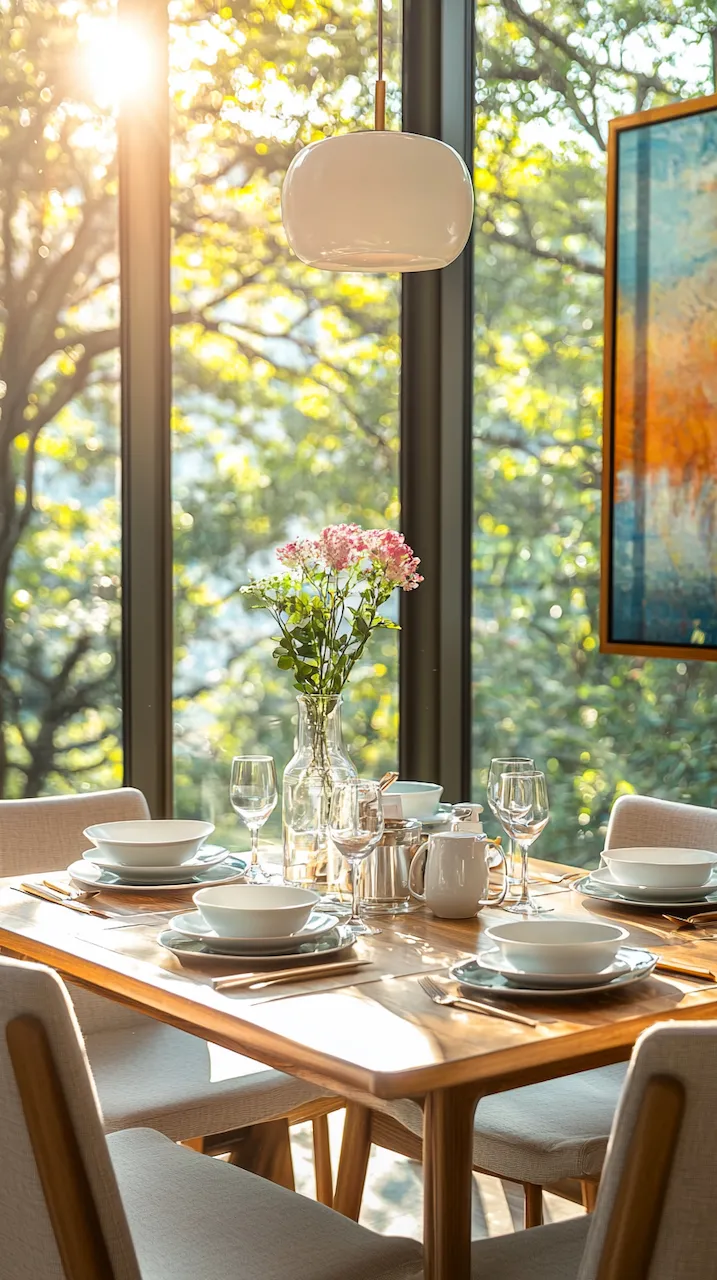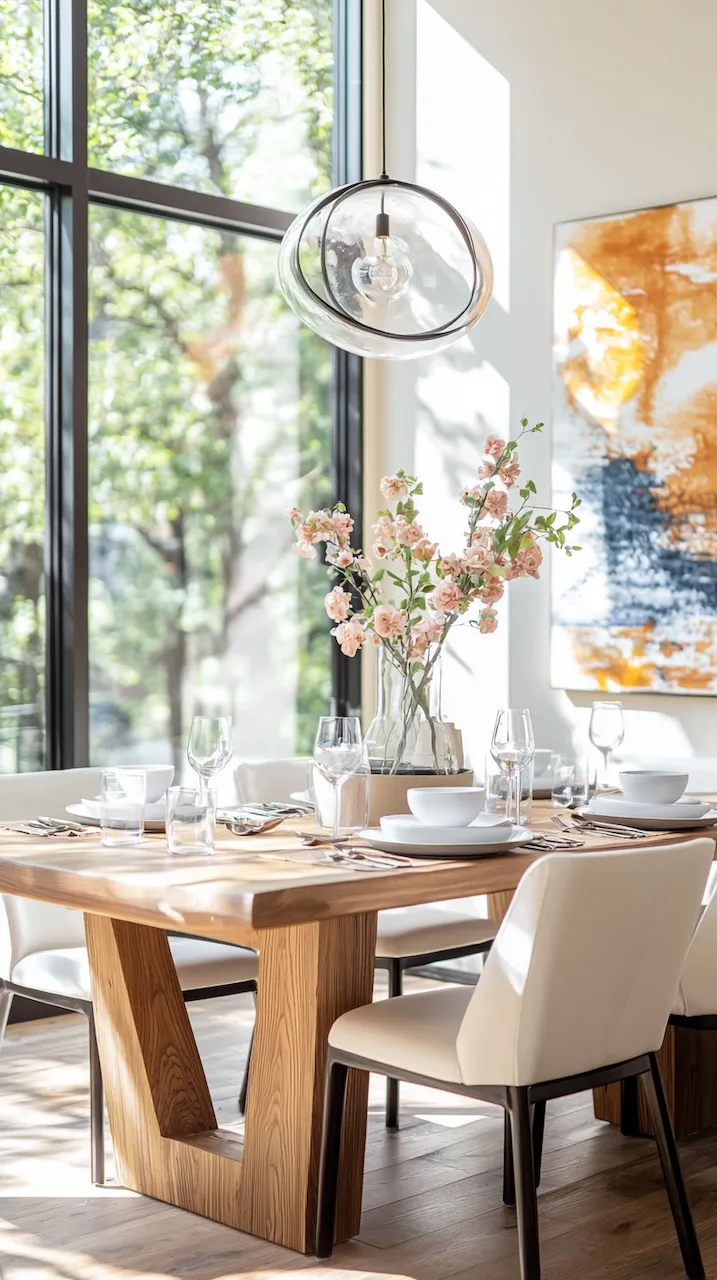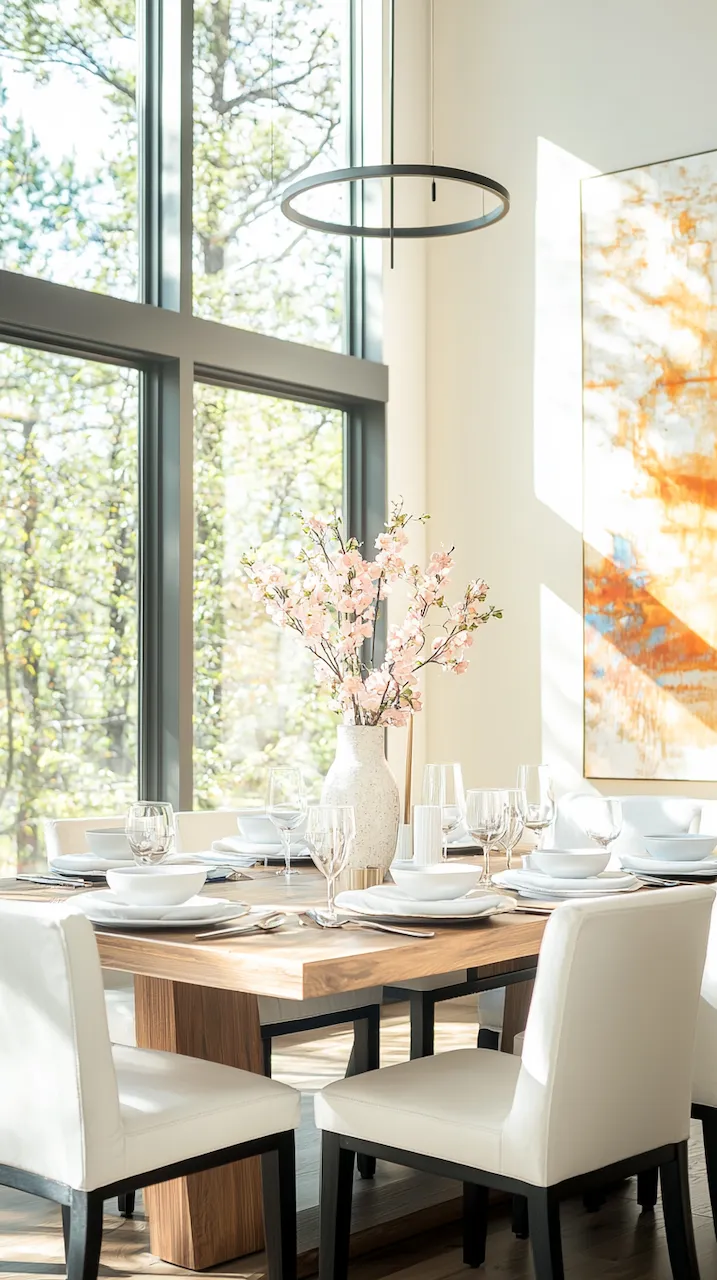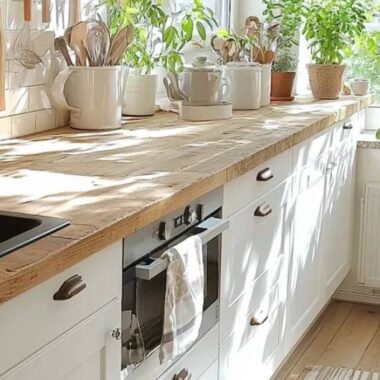Modern Organic Dining Tables: When Design Thinks Before It Dines
In an era where furniture is no longer just furniture—but philosophy, self-portrait, and subtle flex—the modern organic dining table sits at the intersection of utility and identity. It doesn’t just hold your takeout or the occasional ambitious tagine. It holds your values. In a world of mass-made minimalism and algorithmic aesthetics, smart design isn’t just about good taste. It’s about intention. It’s about the long conversation between material and maker, tradition and disruption, softness and structure.
Here, the modern organic dining table isn’t a trend. It’s a thesis.
Statement Meets Structure
A dining table is often the first thing that commands the eye when entering a home’s primary gathering space. It sets the tone for everything that follows, from the lighting above to the flooring beneath. The modern organic dining table makes a strong architectural statement. It is confident, commanding, yet inherently human in scale. Unlike traditional tables that often seek to blend into their surroundings, these pieces are unapologetically visible. They celebrate their own form.
But boldness without balance is just noise. What makes the modern organic table so compelling is the way it integrates that assertiveness with structural grace. A table might feature a slab of bookmatched walnut, expertly joined so the natural patterns of the grain mirror each other like a Rorschach test. The base might be sculptural—a looping form in matte black steel, or a prismatic pedestal in faceted terrazzo. These aren’t just functional components; they’re gestures, intentional moves within a larger design language.
There’s also a fluidity to the way these tables occupy space. Rounded edges replace harsh corners, softening the room both visually and physically. Tactility becomes part of the design experience: the cool density of stone, the warmth of sanded wood, the surprising give of a leather inlay. It’s not enough for these tables to look good. They must feel right.
This focus on structural storytelling spills over into the rest of the dining space. Chairs are chosen not just for ergonomic support but for visual conversation. A set of molded fiberglass seats might sit beside a rough-hewn bench; a single, jewel-toned velvet armchair may anchor one end of the table like punctuation at the end of a sentence. Walls echo the interplay of softness and strength, perhaps clad in microcement or lined with acoustic panels that double as abstract art.
Lighting completes the composition. Above the table, a fixture might float like a satellite—a minimalist ring of LED light, or a kinetic mobile inspired by Calder. These pieces do more than illuminate. They choreograph the room’s energy, casting subtle shadows and creating focal points that evolve throughout the day. Even natural light becomes a design material, filtered through linen sheers or fractured through textured glass.
Storage, too, becomes sculpture. A low credenza in bleached ash may run parallel to the table, its surface curated with stoneware, dried botanicals, and tactile books. Open shelving is not for excess but for expression. This is a space designed to invite presence, not clutter.
Ultimately, what makes a modern organic dining table stand out isn’t just what it looks like, but how it behaves in the context of a living, breathing home. It becomes the center of rituals—from solitary morning coffees to dinner parties that stretch late into the night. And in its quiet grandeur, it reminds us that structure is not just about form. It’s about meaning.
The Power of Asymmetry
In a world increasingly obsessed with symmetry, balance, and predictability, the allure of asymmetry feels almost rebellious. And yet, asymmetry has always had a place in great design—from the off-kilter elegance of Japanese wabi-sabi to the dynamic compositions of modernist painters. The modern organic dining table channels this power, creating environments that are visually arresting, emotionally engaging, and deeply human.
Asymmetry in this context is not accidental. It is precision masquerading as spontaneity. Consider a table where one side is a live edge—the raw, undulating border of a tree—while the opposite edge is crisp and beveled. The surface might taper, subtly narrowing at one end. Legs might be deliberately mismatched: one end supported by a massive oak block, the other by a slender brass rod. These contrasts are not flaws; they are features. They invite the eye to linger, to question, to appreciate.
And that asymmetry radiates outward. The room built around such a table resists traditional rules. Chairs need not match. A trio of armless seats on one side can face off against a long banquette upholstered in textured velvet. Above, instead of a single centered pendant, lighting might consist of two staggered sconces or a cluster of globes hung at varying heights. This sense of deliberate imbalance activates the space, infusing it with energy.
Even color can become asymmetrical. One wall might be painted a deep, moody green while the others remain neutral. Or perhaps a bold rug, off-center beneath the table, skews the room’s symmetry just enough to make it feel more alive. Art on the walls might zigzag along an implied diagonal, guiding the gaze in unexpected directions.
The key to making asymmetry work is editing. A space that embraces asymmetry must also maintain coherence. There should be a visual through-line—a common material, a tonal palette, a unifying geometry. Without that, the room risks feeling chaotic. But with thoughtful curation, asymmetry becomes a kind of visual jazz: syncopated, expressive, unforgettable.
Asymmetry also mirrors the way we live. Life isn’t symmetrical. Our days are uneven, our stories messy, our gatherings fluid. The modern organic dining table acknowledges this. It offers a platform that doesn’t demand perfection but celebrates presence. A table that isn’t rigidly centered allows for flexibility. You can pull up a laptop at one end while someone else sketches at the other. It welcomes imperfection, adapts to shifting needs, and resists the sterile symmetry of a catalog.
In this way, the power of asymmetry isn’t just visual. It’s philosophical. It challenges us to see beauty in imbalance, to appreciate the unexpected, to let go of the need for everything to match. And in doing so, it gives our spaces—and our lives—a little more soul.
